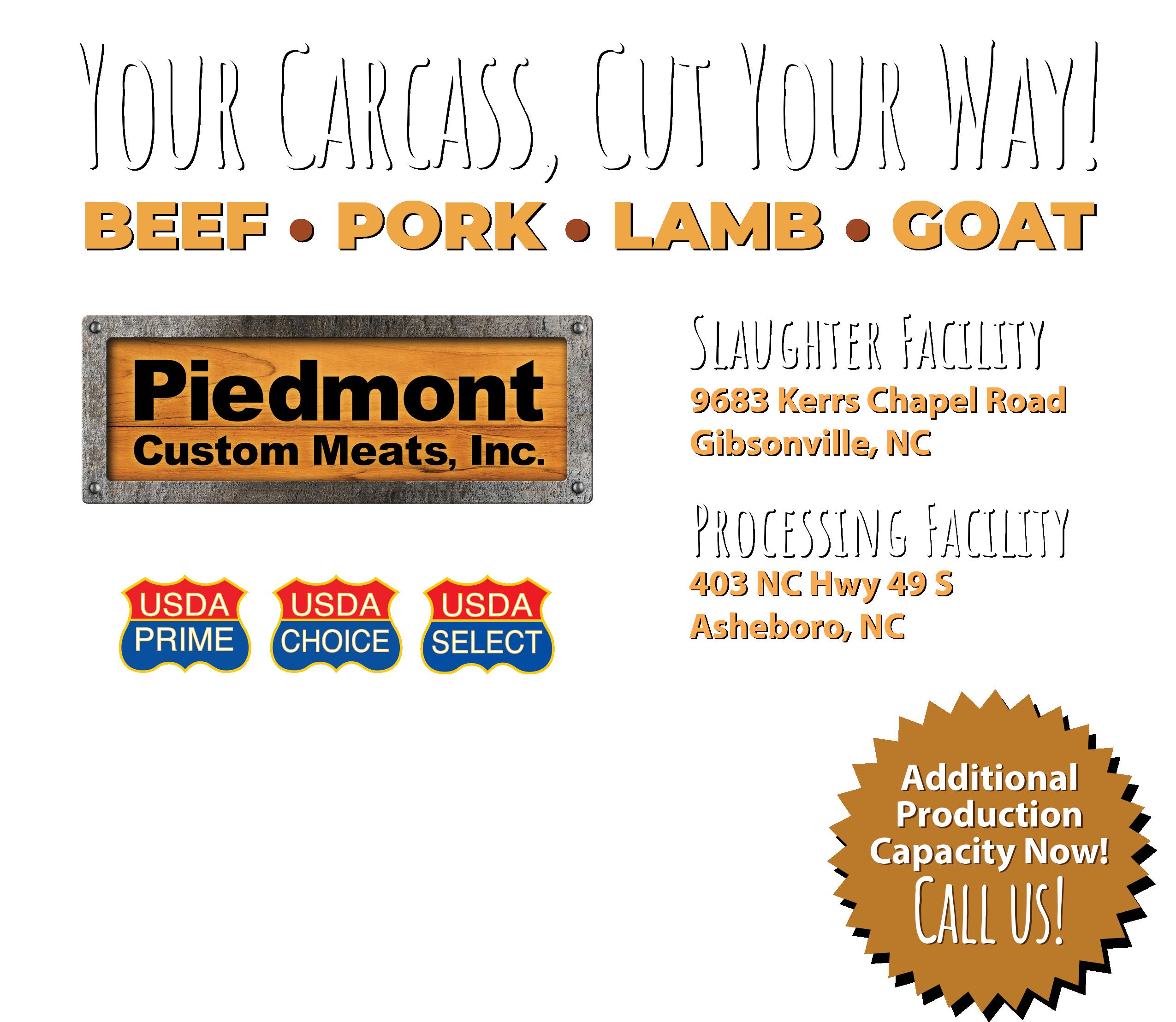



N.C. Cattlemen’s Association





N.C. Cattlemen’s Association
2024 South Carolina Sale Barn Cattle Receipts ...................................................................................................... page 57
A Message from the CEO — Nutrition Research Packs a Punch, by Colin Woodall ........................................ page 44
Alltech News ................................... page 56
Amazing Grazing — Now is the Time to Invest in the Future, by Jeff Bradley & Dr. Matt Poore .............. page 20
American Angus Association News ......................................................................................................................... page 34
American Gelbvieh Association News .................................................................................................................... page 68
American Simmental Association News ................................................................................................................. page 41
Animal Agriculture Alliance News ........................................................................................................................... page 41
Ashley’s Beef Corner — Roll On Summer, by Ashley W. Herring ......................................................................... page 18
Beef Checkoff News .................................................................................................................................................... page 67
Beef Cow Nutrition and Herd Reproductive Strategies, by Bob Larson, DVM, Ph.D. ..................................... page 67
Beef Cuts and Recommended Cooking Methods ................................................................................................. page 56
BioZyme News ............................... page 58
Carolina Cooking — Cuban Crispy Shredded Beef ............................................................................................... page 39
Cell Cultured Meat is on the Market ........................................................................................................................ page 55
Clemson Bull Test Call for Nominations .................................................................................................................. page 54
Clemson Corner — The Clemson Spring Dairy Show and Junior Dairy Weekend ........................................ page 57
Connie Mack Deal Passes ............. page 32
Culinary Corner ........................................................................................................................................................... page 64
Director’s Report — Promoting Beef, by Milo Lewis................................................................................................ page 3
E.B.’s View from the Cow Pasture — Mama Always Says Everybody Ate Together, by E.B. Harris ....... page 22 Farm Credit News ........................................................................................................................................................ page 39
Have You Herd — CRISPR’s Role in the Beef Industry, by Brooke Swedin ........................................................ page 26
Highly Pathogenic Avian Influenza in Dairy Cattle .............................................................................................. page 59
N.C. Angus Association News — 40th Annual N.C. Angus Association Spring Fever Sale, by Cortney Holshouser ........................................................................................................................................... page 30
National Cattlemen’s Beef Association News .......................................................................................................
Red Angus Association of America News ...............................................................................................................
43
Seed News ........................ page 54 Ridley Block News — You Won’t Regret It, by Jill Peine ................................................................................... page 51
S.C Charolais News, by Georgeanne Webb ............................................................................................................... page 51
South Carolina Cattle Receipts, Trends, and Prices .............................................................................................. page 64
The Chaplain’s Corral — Help and Comfort, by Dave Harvey ............................................................................... page 24
The Most Valuable Protein in Retail ........................................................................................................................ page 68
The Simmental Trail, by Jennie Rucker ...................................................................................................................... page 40
Trending in Food and Media ........ page 65
Understanding Beef Quality Grades ....................................................................................................................... page 52 Valley Vet News ............................. page 50
You Decide, by Dr. Mike Walden ................................................................................................................................ page 28
50 Year Hereford Breeders Celebrated … page 13
56th Annual N.C. Hereford Association Banquet and Meeting, by Myron McCoy … page 6
56th Annual N.C. Hereford Classic Dedicated to Chad Davis … page 8
56th Annual N.C. Hereford Classic Sale Results, by Wes Carpenter … page 12
American Hereford Association News … page 17
Dams of Distinction Honored … page 4
President RYAN CLARK
5250 NC 772 Hwy. • Madison, NC 27025
Vice Presidents BRANDON BOWMAN
2346 Ann Street • Claremont, NC 28610
JIM LEDFORD
260 Mulberry Lane • Otto, NC 28763
JOEY CARTER
250 Penny Road • Beulaville, NC 28763
Immediate Past President SCOTT WEST
489 Panacea Springs Road • Littleton, NC 27850
NCBA Policy Division Director - JOHN LANGDON N.C. Beef Council Director BROOKE HARWARD
Beef Board Director - BRIAN WARREN
Secretary/Treasurer - EVERETT JOHNSON
Directors At Large
MATT POORE • NEIL BOWMAN • TODD SEE
Executive Director - MILO LEWIS
2228 N. Main Street • Fuquay-Varina, NC 27526
N.C. Cattlemen’s Beef Council
Director of Consumer Information
ASHLEY W. HERRING
Administrative Assistant - KIM BURDGE
S.C. Cattlemen’s Association
Executive Director - TRAVIS MITCHELL
P.O. Box 207 • Saluda, SC 29138
Phone: 803-609-2828
Email: twmitch@clemson.edu
Website: www.sccattlemen.wildapricot.org
Executive Committee
President - Joe Oswald IV 1st Vice President - Gene Crim 2nd Vice President - Ashley Mills
Secretary - Carol Hendrix
Treasurer - Eric Seymour
Past President - Timmy Benton
John Lewis, Chester • Joe Oswald, IV, Allendale
Ryan Whitehead, Union • Terry Kirkland, Batesburg
Lloyd Baxley, Georgetown • Joe Davis, Westminster
Michael Hall, Abbeville • Richard Sox, Lexington
Carol Hendrix, Westminister • Jamie Driggers, Hamer Bonnie Cann, Abbeville • Ashley Mills, Blair
Haskel Sexton, Sparanburg • Gene Crim, St. Matthews
Al McClain, Anderson • Eric Seymour, Columbia Timmy Benton, Walterboro
S.C. Beef Council
Executive Director - ERIN DOLL
P.O. Box 11280 • Columbia, SC 29211
Phone: 803-734-9806
Email: edoll@scda.sc.gov
Website: www.sccattle.org
Vol. 38, No. 6 JUNE 2024
Sales & Publication Office
2228 N. Main Street
Fuquay-Varina, NC 27526
Phone: 919-552-9111
Fax: 919-552-9216
Email: mail@nccattle.com
Website: www.nccattle.com
The Carolina Cattle Connection is printed on 30 lb recycled newsprint by BN Printing in Benson, N.C.
STAFF
Manager, N.C. MILO LEWIS
Manager, S.C. TRAVIS MITCHELL
Editor & Advertising Director
CASEY L. HINNANT
Assistant Editor & Proofreader KIM BURDGE
N.C. Circulation KIM BURDGE
S.C. Circulation TRAVIS MITCHELL
Material in The Carolina Cattle Connection is not to be reproduced in total or in part without the written permission of the Editor. All submissions become property of The Carolina Cattle Connection, but we make every effort to return items such as photographs and artwork as requested.
The Carolina Cattle Connection, the official publication of the N.C. Cattlemen’s Association and the S.C. Cattlemen’s Association is published monthly by the N.C. Cattlemen’s Association.
A complementary subscription is included with membership to each state’s association. Nonmember subscriptions are $30 per year.
All address changes for NCCA members to: The Carolina Cattle Connection 2228 N. Main Street • Fuquay-Varina, NC 27526
All address changes for SCCA members to: The Carolina Cattle Connection P.O. Box 207 • Saluda, SC 29138
Hereford Heritage … page 4
Knowing Beats Hoping … page 16
My Year as N.C. Hereford Queen, by Belle Westbrook … page 14
N.C. Pollettes’ Annual Meeting … page 9
N.C. Junior Hereford Association Update, by Kaylee Revis … page 14
N.C. Junior Hereford Spotlight — Mazie Bunn, by Mazie Bunn … page 15
North Carolina Sale Honorees … page 8
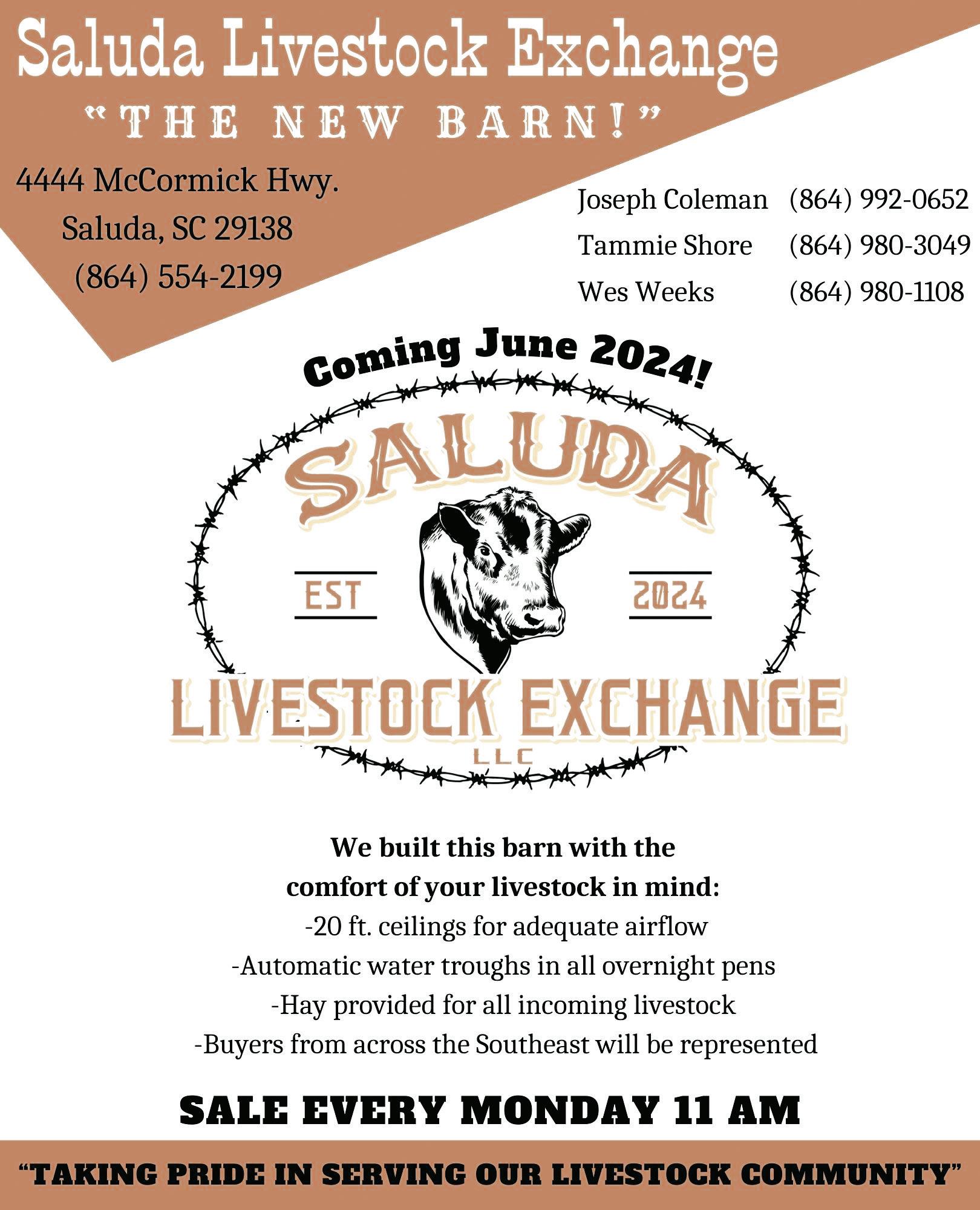
Summer is coming, and it is evident as I drive around the state. From the newly turned up soil and planters moving through the fields to the luscious green pastures full of grazing cow/calf pairs to the blossoming cherry blossom trees around our nation’s capital, which we witnessed at the recent NCBA Legislative Conference, signs of new beginnings and a fresh start are apparent everywhere you look.
While in D.C. last month, a small group from our Executive Committee and I were able to hear from and have conversations with top officials from NRCS, FSA, APHIS, and many other agencies discussing issues that are directly facing each of you daily back on the farm. We also spent time visiting with members of our congressional delegation and their staff. Policies shaped by federal regulators and lawmakers have a direct impact on your production practices, so it’s crucial that we engage to ensure there is a continuous open dialogue.
We discussed many topics during our congressional visits, including, but not limited to, the Farm Bill, animal health, trade, transportation, and voluntary conservation programs. We also spent time discussing the framework for how and why the Beef Checkoff was established and what that means to the beef industry in our state.
The Beef Checkoff program was established as part of the 1985 Farm Bill. Under this program, producers and beef importers pay a $1 per head assessment on animals they market and an equivalent amount on beef they import. The Checkoff assessment became mandatory when it was approved by producers in the 1988 national referendum vote. This program aims to increase domestic and/ or international demand for beef through marketing and research initiatives.
The Cattlemen’s Beef Board (CBB) oversees the collection and spending of Checkoff funds. It ensures that the assessments are appropriately utilized for the benefit of the beef industry. The CBB operates under USDA’s oversight.

So, what does this mean to North Carolina specifically? Ashley Herring serves as the Director of Consumer Information at the N.C. Cattlemen’s Beef Council (NCCBC) and is dedicated to promoting beef and educating consumers about its many benefits. Each month, as you flip through The Carolina Cattle Connection, you can read “Ashley’s Beef Corner,” which contains content related to promotion efforts taking place in our state.
The NCCBC is a non-profit organization dedicated to promoting and marketing beef and beef products in North Carolina. It aims to enhance the image of beef, educate consumers, and provide resources for cattle producers and consumers alike. It is considered a Qualified State Beef Council (QSBC), meaning its funds are generated by retaining half of each dollar collected from the Checkoff. These funds are then used for various activities related to beef promotion, research, and education.
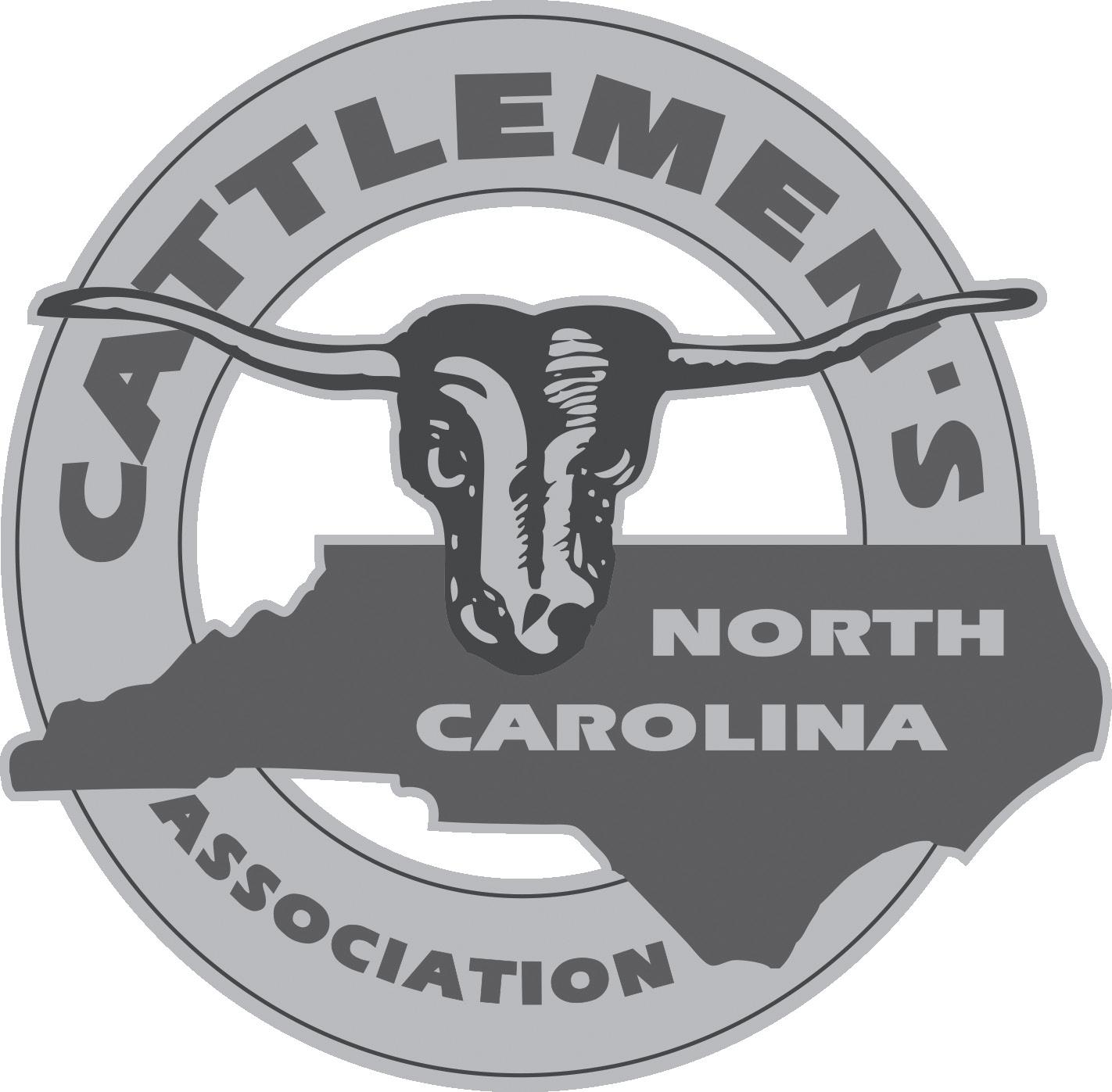
Through Ashley’s work, she provides both consumers and cattle producers with resources related to cooking, nutrition, and raising beef.
The NCCBC collaborates closely with the N.C. Cattlemen’s Association (NCCA), which, as we discussed in the last magazine article, coordinates beef promotion and industry related efforts in the state.
Directing both organizations is one group of producers known as our executive committee. This committee is made up of producers from each region in our state. We have five regions, which correlates to one president, three vice presidents, and one immediate past president.
This allows for efficiency and eliminates replication of efforts. By having one executive committee, we are able to quickly respond to issues and decide on programming efforts.
It has been so interesting over the last few months learning all the intricate details and functions of the many organizations. It is clear that each one has a specific purpose and, together, create a strong, united cattle and beef industry. We must continue to engage to ensure our fellow producers and leaders understand the role of each segment in order to sustain and grow our industry for generations to come.
I hope each of you has a safe summer season on the farm!

The Hereford breed originated as a product of necessity. Efficient, adaptable, and hardy, these cattle have always had a face to remember.
Nearly 300 years ago, farmers of Herefordshire, England, founded the breed in response to demand created by Britain’s Industrial Revolution. Efficient production, high yields, and sound reproduction were of utmost importance.
Benjamin Tomkins is who to thank for the original design. A primary founder of the breed, Tomkins began in 1742 with a bull calf from the cow Silver and two cows, Pidgeon and Mottle.
Henry Clay, Kentucky statesman, brought Herefords to the United States in 1817. A true Hereford identity was not established in the states until William H. Sotham and Erastus Corning, Albany, N.Y., began the first breeding herd in 1840.
Among other renowned early Hereford breeders were Charles Gudgell and Thomas A. Simpson of Missouri. Their big break came with the importation of Anxiety 4, a bull credited as being the “father of American Herefords.”
A few of these early breeders came together in Chicago on June 22, 1881.
The Dams of Distinction program recognizes superior cows in the breed and the cattle producers who manage them based on data submitted to the American Hereford Association (AHA). Efficient, fertile, and productive females are the foundation of the most successful cow herds.
A cow receiving the Dam of Distinction honor meets the highest standards of commercial cattle production. The cow must do her job, but her owner must also manage the herd correctly to give her the opportunity to excel. Only a few active cows are recognized. All females have the potential to be a Dam of Distinction, but only a small percentage fit the job description of an ideal cow year in and year out.
For more information about the Dams of Distinction Program, visit Hereford.org, hover on “Genetics,” and select “Recognition Programs.” Females attaining the Dam of Distinction status are recognized with “DOD” after their names on the AHA website.
In 2024, the AHA named 2,541 Dams of Distinction. North Carolina and South Carolina Hereford breeders with a 2024 Dam of Distinction are listed below.
North Carolina
• Beckland Farm - Lexington
•Double J Farm LLC - Trap Hill
• N.C. State University - Raleigh
• P&J Farms - Monroe
• Terrace Farms - Lexington
• W&A Hereford Farm LLC - Providence
• Bryson Westbrook - Shelby
South Carolina
• Fowken Farms - Jonesville
• Norris Fowler, Jr. - Jonesville
• McConnell Polled Herefords - Marietta
• Montgomery Farm - Blacksburg
The result was the foundation of the American Hereford Cattle Breeders Association, later renamed the American Hereford Association (AHA). Its purpose was two-fold: to keep the breed’s records and to promote the interests of its breeders.
Seven years later, Warren Gammon noticed naturally hornless Herefords at the Trans-Mississippi World’s Fair in Omaha, Neb. He decided to fix the hornless trait using the bull Giant and 11 Hereford females. In 1910, the American Polled Hereford Association (APHA) was founded.
The two Hereford associations merged in 1995, keeping the AHA title. The AHA now registers all horned and polled Herefords.
Through the years - Shows and expositions contributed greatly to a growing Hereford popularity. The breed’s doing ability, coupled with early maturity, revolutionized American beef production.
To achieve this desired early maturity, breeders in the 1930s and 1940s sought short, low set, wide and deep bodied cattle. Success eventually became a downfall.
Compact, fat cattle continued to excel in the show ring into the 1950s. However, beef packers were starting to pay less for over fat cattle. The American diet was calling for leaner, more heavily muscled carcasses. Hereford breeders stepped up to the challenge.
Beginning in the 1960s, breeders focused their attention on tools such as performance testing, artificial insemination, objective measures, embryo transfer, and sire evaluation. These tools allowed the rapid genetic change needed to bring Herefords in synch with consumer and industry expectations.
A broad genetic base allowed Hereford breeders to select stock comparable in size and performance to competing “exotic” European breeds. Although major changes were made, breeders didn’t lose sight of fundamental Hereford traits, particularly fertility and docility.
A new goal was established in the late 1980s — formal documentation of Hereford performance in the feedlot and on the rail. Colorado State University animal scientists conducted related
tests for the AHA from 1991 to 1993. Superiority was noted in average daily gain, feed conversion, and cost of gain.
Further studies in the early 1990s demonstrated the quality of Hereford beef. Regardless of marbling, Hereford steers consistently excelled in tenderness, juiciness, flavor, and palatability.
These findings led to the formation of a branded beef product known as Certified Hereford Beef ® (CHB). In 1994, the AHA, Midland Cattle Co., and its affiliate, Mid-Ag, came together to market CHB. Mid-Ag, later renamed Red Oak Farms, was licensed as the exclusive seller of CHB. In October of 1998, the AHA board of directors pulled exclusivity from Red Oak Farms due to its failure to meet license covenants.
The Greater Omaha Packing Co. was licensed as the second company to produce and market CHB in November of 1999. The following October, the AHA formed a limited liability corporation, CHB LLC, for management of the CHB program.
Hereford history was made during the second week of 2005. CHB had its first million pound week when packers sold approximately 1.3 million pounds of product to participating retail locations and foodservice outlets.
The CHB program has experienced 40 percent annual sales growth since 2000, indicating the power of its mission:
To strengthen demand for Hereford cattle, Certified Hereford Beef LLC commits superior customer service, competitive pricing, and creative marketing strate as cattlemen continue to seek the optimum traits inherent in Herefords. Those traits critical to survival in the cattle business are exactly the same traits Hereford offers today’s industry:
• Fertility
• Reproductive performance
• Feed efficiency
• Optimum size and growth
• Documented feedlot and carcass superiority
• Low maintenance costs
• Optimum muscling
• Optimum milk
• Adaptability and hardiness
• Superior disposition
• Soundness
• Crossbreeding advantages
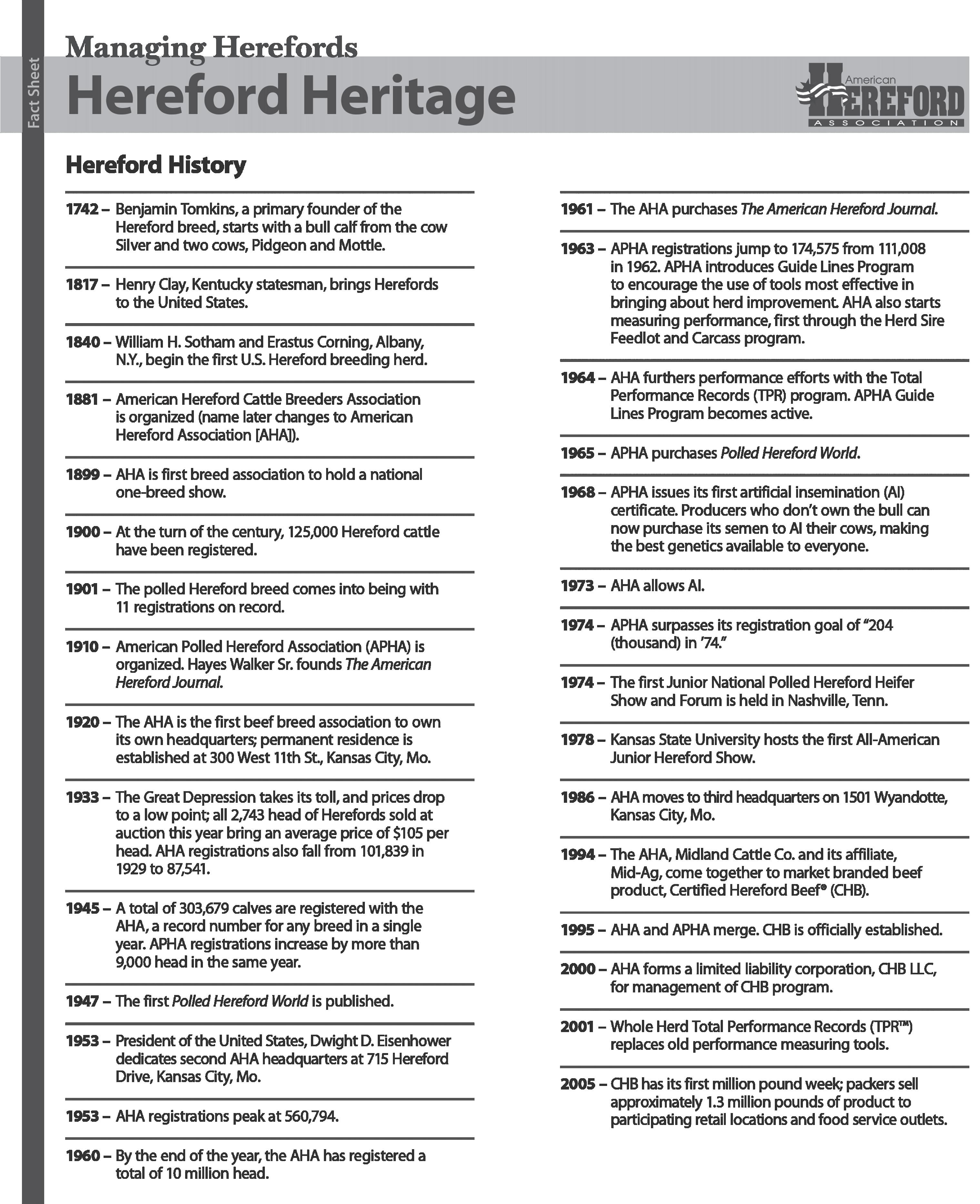
The N.C. Hereford Association held its 56th Annual Banquet and Meeting at the Iredell County Agricultural Center in Statesville. The meeting was held on March 22. President Bryson Westbrook called the meeting to order. He welcomed everyone and thanked them for their attendance.
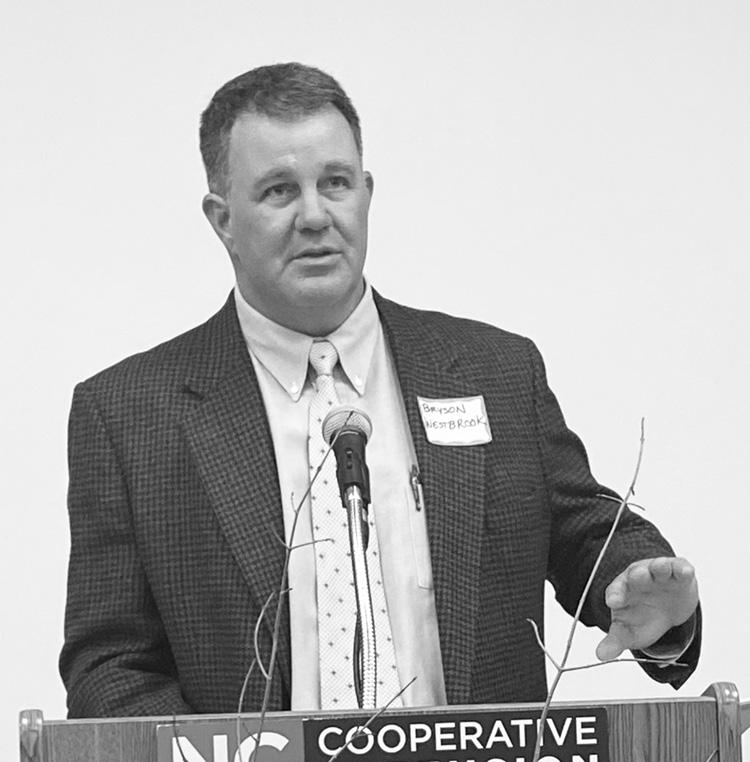
Keith Blinson gave our invocation.
Wes Carpenter recognized our first time attendees and out-of-state guests. He thanked them for joining us and hoped that they enjoyed their meal.
Vice President Wayne Mitchem remembered members and friends Brenda Fishel, Colon Nifong, and Porter Claxton, who passed away. We had a silent moment of prayer.
Pollette President Julie Revis introduced their officers and directors. She thanked Linda Davis and Peggy
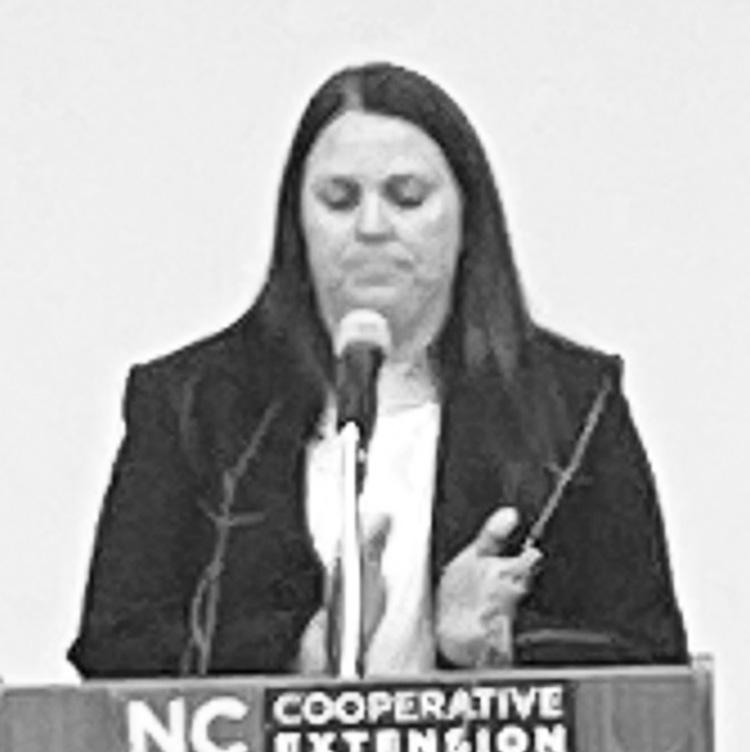
Blinson for being great mentors. She invited all ladies to attend their meeting.
Karen Fishel introduced the queen court. N.C. Hereford Queen Belle Westbrook thanked everyone for their support and help during the last year. She told of places and events that she had attended.
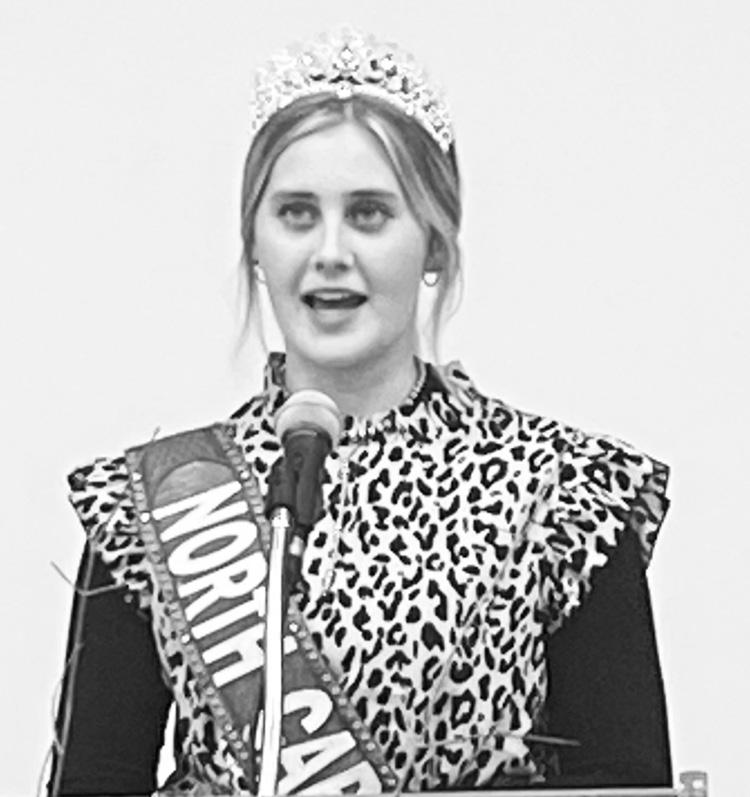
N.C. Junior Hereford President Jordan Mitchem reported on shows and events they had traveled to and fundraisers they were planning. She recognized members who had received awards from local, state, regional, and national shows. We are so proud of all of our youth. Jordan said, “All of this would not be able to happen if it was not for the support of you, our parents, and our advisors.”

Crystal and Wayne Mitchem were awarded National Advisors of the Year!
Wayne Michem thanked everyone for all they do to support the juniors. He said there are other things to do than showing, and all youth were urged to participate in some of those activities. Faces of Leadership is a great experience for anyone who would like to attend in July. Wayne reported that we would host the Southeastern Regional Hereford Show in 2025. Wayne and Becky
Welch have given a heifer in memory of Porter Claxton that will be sold in the sale. Porter and Martha Claxton were always supporters of the juniors.
Brent Creech and Bill Kirkman presented Josie Correll with the 2024 N.C. Hereford Scholarship. They also presented Amber Shutsky and Daisy Brown scholarships given in honor of Chad Davis, our sale dedication honoree. These were given by Kevin Robinson.
Bryson Westbrook had the top indexing bull at the Waynesville Bull Test Station. Jim Davis had the top indexing bull at Butner Bull Test Station.
The 56th Annual Hereford Classic Sale is dedicated to Chad Davis. Wes Carpenter presented him with a plaque. Chad said that he was shocked and surprised. He serves on the sale committee.
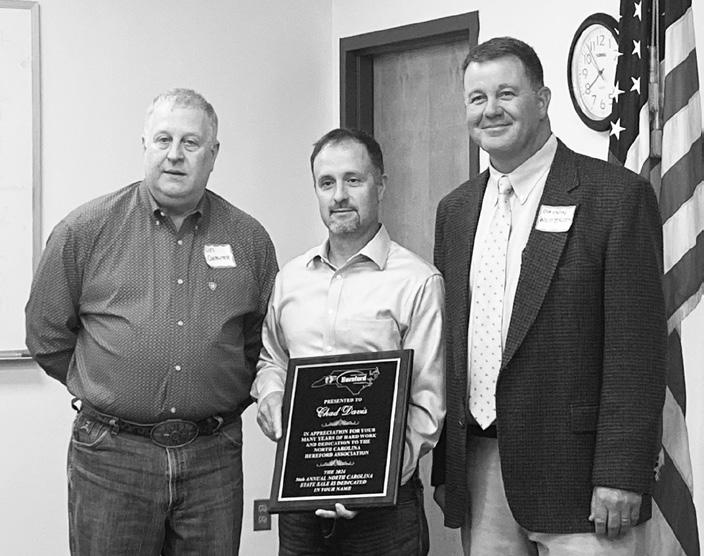
American Hereford Association Field Representative Tommy Coley said he always enjoyed our banquet. He updated us on upcoming events.

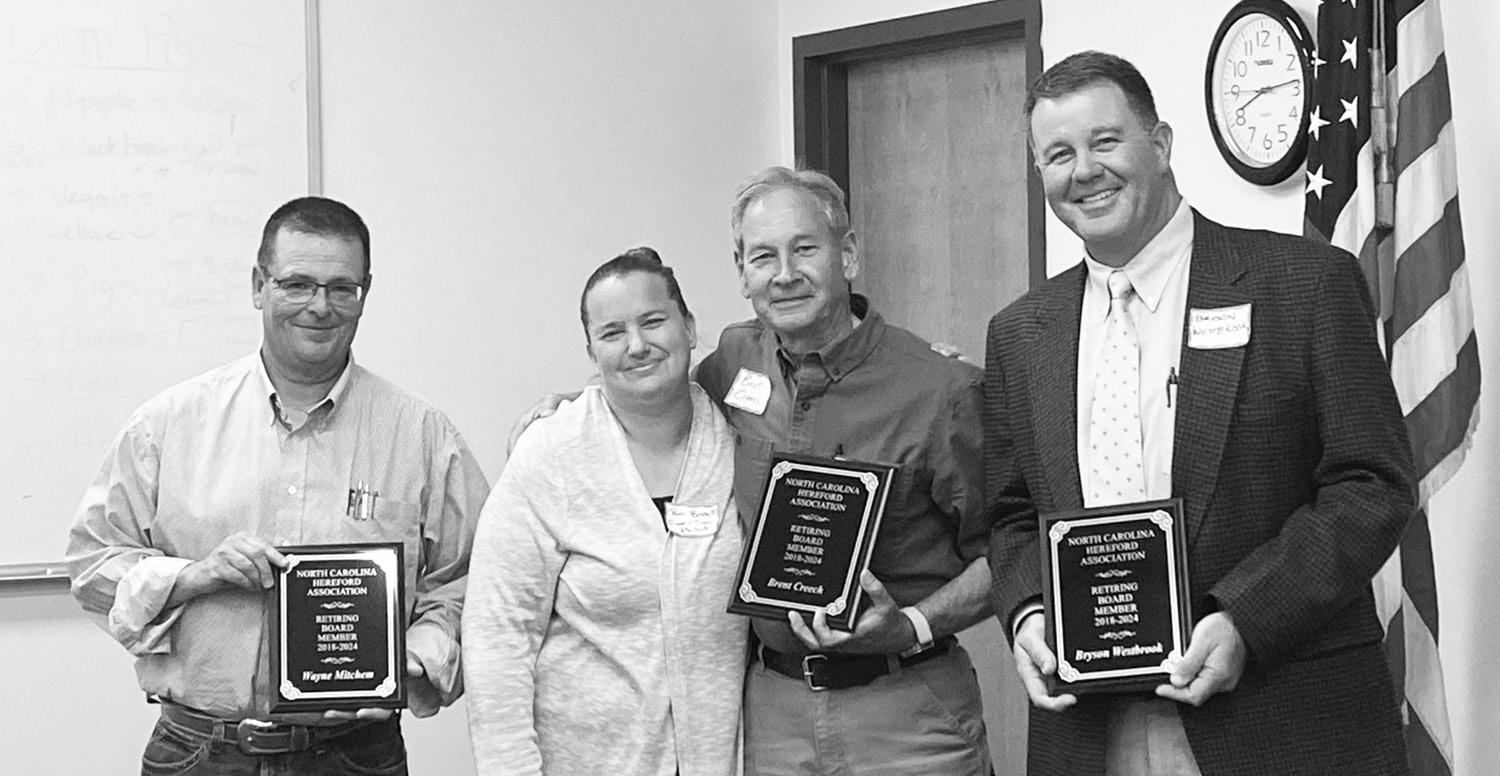
Sale managers Kathryn and Mitch Ingram reported we had a great set of cattle for the sale. He congratulated Chad on the dedication.
President Westbrook recognized retiring directors Pam Bissett, Brent Creech, Wayne Mitchem, and himself and thanked them for their service. The new
directors were then announced. They are Dustin Brim, Crystal Mitchem, William Ward, and Tom Shutsky.
Will Thompson auctioned chairs for the N.C. State Fair Open Show grand champion bull and the grand champion heifers. The Southern Partners will sponsor the bull, and Four B Farms will
sponsor the heifer. Terrace Farms will sponsor the chair for the N.C. State Fair Junior Show grand champion heifer. The N.C. Junior Beef Round-Up grand champion heifer award will be sponsored by Will-Via Polled Herefords.
A print by Mason Henson was donated to the juniors by Patty and Reggie Lookabill. It was purchased by Wren Westbrook. A fishing trip was purchased
by Andy and William Ward. Cakes were purchased by Bryan Blinson and Jim Davis. This all goes to the juniors, who are very thankful for all who helped.
Next up was the sale of pages in our 2024-2025 Directory. Thank you to all who purchased them. Everyone was encouraged to help sell ads.
There was a ten minute break, and the annual business meeting was held.
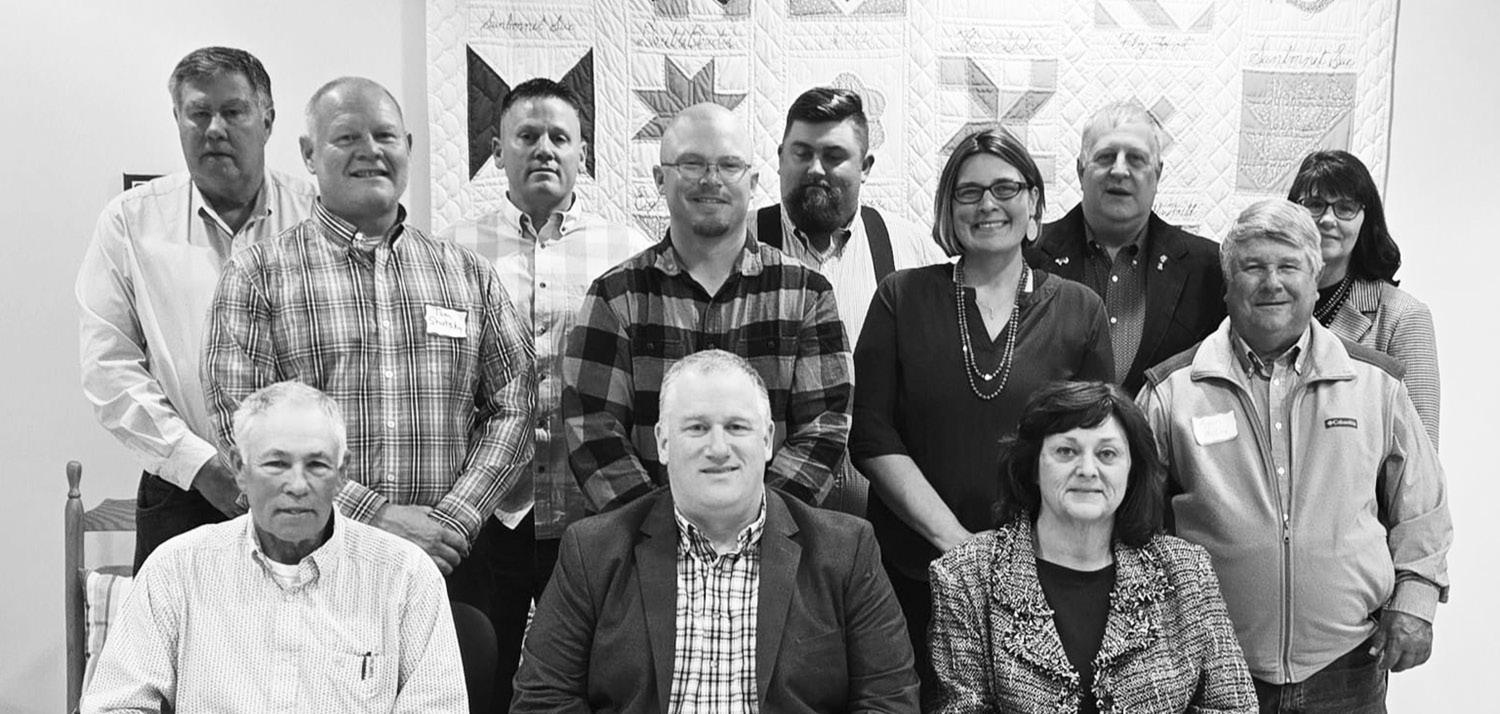

Kim Prestwood - President (2022-2025) 390 Pleasant Hill Road Lenoir, NC 28645 828-320-7317
Dustin Brim (2024-2027) 7921 West Road Walnut Cove, NC 27052 336-529-9098
Wes Carpenter (2022-2025)
2939 Old Salisbury Road Winston-Salem, NC 27127 336-970-1655
Bill Kirkman (2023-2026) 2440 Herfshire Drive Greensboro, NC 27406 336-382-9635
Jason Revis - Vice President (2022-2025) 255 Martin Branch Road Leicester, NC 28748 828-707-7176
Kristen McCoy (2022-2025)
11346 Old Hwy. 70 West Cove City, NC 28523 252-341-2877
Myron McCoy (2023-2026)
11350 Old Hwy. 70 West Cove City, NC 28523 252-637-4995
Crystal Mitchem (2024-2027)
400 David’s Chapel Church Road Vale, NC 28168 704-472-7564
Tammy Ward - Secretary/Treasurer (2023-2026) 3404 Shady Grove Road Providence, NC 27315 434-251-6847
Thomas Shutsky (2024-2027) 1420 Surry Line Road Pinnacle, NC 27043 860-710-5720
Andy Smith (2023-2026)
7007 Sugar and Wine Road Monroe, NC 28110 704-400-3436
William Ward (2024-2027)
3506 Shady Grove Road Providence, NC 27315 434-334-2625
Chad A. Davis was born in Grand Forks, North Dakota. He was 12 years old when he and his family moved to the farm once owned by his great grandfather, Lloyd G. Davis. Once a dairy farm, the farm was converted to a Hereford operation shortly after the Great Depression. At that time, the cow herd numbered around 250 females split about half horned and half polled.
In 1986, Chad’s parents, Jim and Linda, built their current home on Terrace Farms soil in Churchland, North Carolina. Chad’s father, Jim, having shown Herefords as a 4-H member, was anxious to introduce Chad to an experience he had in his youth. So, in 1987, Jim and Chad bought their first Hereford heifer from the Fishel’s (Windmill Acres) in Winston-Salem. The heifer was named Brandywine. That year, Chad showed Brandywine at numerous shows with Neil Fishel, his mentor.
Now having the fever to show, in the spring of 1988, Chad, Jim, and a friend, Bob Burton, went on a three day sale event in Canada to look for a donor prospect and show heifer. Bob bought a donor cow, and Chad purchased a heifer. He bought Turc GB Butler Girl at the Gold Bar Production sale owned

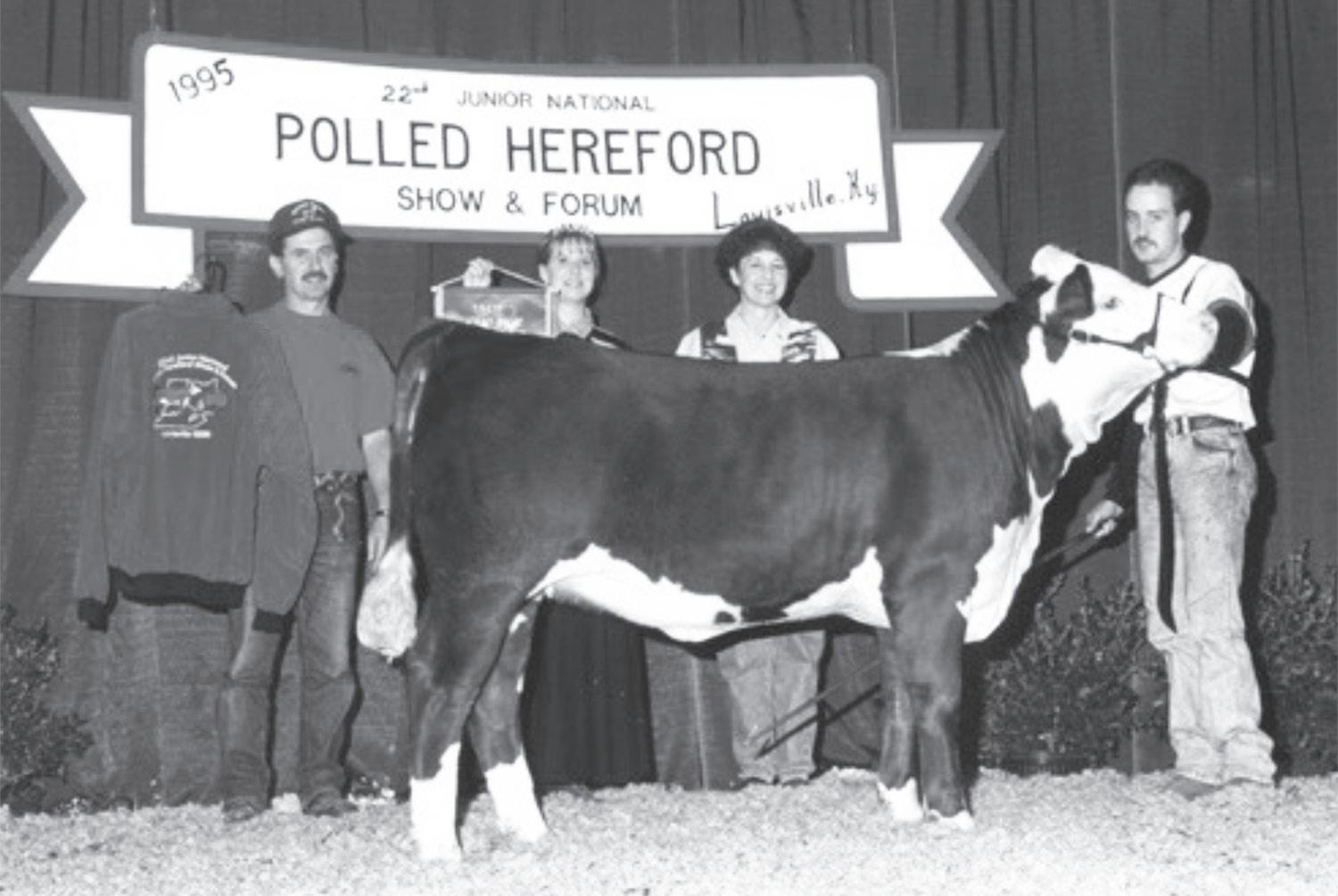
by David Hasson. At Chad’s first Junior National show, held in Springfield, Ill., Butler Girl made the cut and placed fifth in class. Neil and the rest of the Fishel family were there to give support.

Along the way on the show road, commencing in 1987 and finishing in 2012, many memorable experiences and exciting times were had. The ride back home was sometimes filled with joy, while the trip was sometimes long and tiring. Chad was invited back to the farm to gain more exposure, knowledge, and hands-on experience in clipping and fitting Gold Bar’s showstring. At 16, he was getting purple banner experience.
During Chad’s show career, he exhibited many grand and reserve champion Herefords across the country at the state and national level and earned the honor of premier exhibitor and premier breeder. He spent time holding many different offices in the NCJHA, including that of president. He also attended many AJPHA national events. He was recognized by his peers at several Junior
National shows, receiving the Outstanding State Junior Award. After a successful junior show career, Chad sold several heifers to juniors who went on to have class winners and champions at local, state, and regional shows. One of the highlights in Chad’s life was when Xavier (the bull bred and owned by Chad) sold at the 73rd National Hereford sale. He was the only animal sold to a buyer outside the United States. He went to Werthein Ranch in Buena Aires, Argentina.
After aging out as a junior, the open shows continued but with a much reduced schedule. At the last show in 2012, he ended his showing at the N.C. State Fair with the reserve champion female and bull. The female, DelHawk 1241, still walks the pasture of Terrace Farms without missing a step.
Chad always took showing Herefords seriously and always strived to have his show string in championship condition. His philosophy was that the shows were won at home, meaning that putting in the hard work at home to feed, work the cattle, and work on leading and setting them up paid dividends on show day.
Chad has served several terms on the NCHA Board of Directors. For more than 15 years, he spent numerous hours working on the N.C. Hereford sales committee, including planning meetings and sorting, penning, and loading consignment lots behind the scenes. On sale day, he is seen working in the sale ring.
At the farm, he still helps with the cattle operation as time permits. He has his poultry operation, comprised of eight pullet barns (houses), generally taking care of 90,000-95,000 chickens. The poultry operation is a big factor in why
The sale is dedicated each year to a person selected by the previous three honorees.
2024 - Chad Davis
2023 - Wes & Andie Carpenter
2022 - All NCHA Members & Families
2021 - George & Tammy Ward
2020 - Reggie & Patty Lookabill
2019 - Dale White
2018 - Bill Perry, Keith Blinson, & All Charter Members
2017 - Phil Fishel, Jr.
2016 - Earl Forrest
2015 - John Wheeler
2014 - Bryan Blinson Family
2013 - Harry Myers
2012 - Michael Mericka
2011 - Jim Love
2010 - Robert Smith
2009 - Frank Myers
2008 - James Triplett
2007 - Rick Kern
2006 - Colon Nifong
2005 - Bill Gragg
2004 - Porter Claxton
2003 - Bill Mericka
2002 - McCoy Family
2001 - Roy Ammons
2000 - Jim Davis
1999 - Teeter Family
1998 - Kim Prestwood
1997 - Bob Rhyne
1996 - Jack Shanks
1996 - Roy Haberkern
1994 - Kenneth Buckner
1993 - Fred Hyatt
1992 - Bill Perry
1991 - Keith Blinson
you haven’t often seen Chad and his father together at sales or shows as in the past.
Someone must tend the farm. The NCHA sale is one of the exceptions. His work ethic has spilled over to his poultry operation. Hard work pays off. He has achieved many accolades for

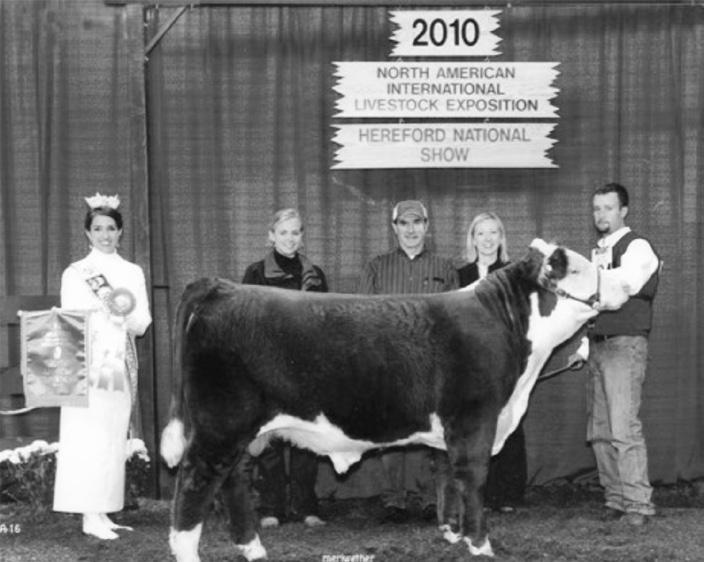
his accomplishments from the poultry integrator.
Chad and Katie have two sons, Landon and Sam, who represent the fifth generation to share experiences on Terrace Farms.
Congratulations, Chad, on being chosen to have the 2024 NCHA Sale dedicated to you! Mom and Dad are very proud of you!
The N.C. Pollettes held their annual meeting immediately following the N.C. Hereford Association Annual Meeting in March. The 2024-2025 officers are President - Julie Revis, Vice President - Crystal Mitchem, Secretary - Heather Brown, Treasurer - Jackie Shutsky, Queen Chair and one year director - Melanie Fishel, two year director - Mary Beasley, and three year director - Emily Bunn.
The Pollettes is a group of N.C. Hereford women who work towards
supporting the N.C. Hereford Royalty program, the N.C. juniors, and promoting the Hereford breed. We are looking for additional opportunities to come together throughout the year to collaborate and for a time of networking and fellowship.
If you would like additional information on the Pollettes, please visit www.nchereford.com/pollettes or email me at martinbranchfarms@gmail.com. I look forward to serving as the president this year.


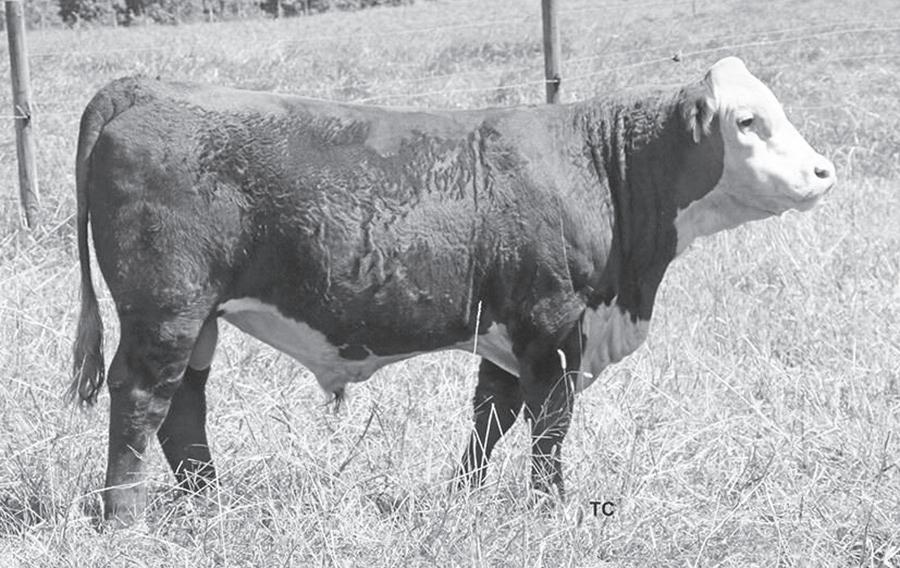



4B FARMS, LLC
Shelby, NC
Bryson Westbrook
Ed Soto (Manager) 980-230-4868 - Bryson 704-974-1407 - Ed brysonw@thewestbrookco.com
BLINSON
POLLED HEREFORDS
Lenoir, NC
Keith & Peggy Blinson - 828-310-4526 Bryan & Beth Blinson - 919-422-9108
DOUBLE J FARM
Traphill, NC • Earlysville, VA
John Wheeler 910-489-0024 doublejfarmllc@yahoo.com www.doublejfarmllc.com

E. CARROLL JOYNER
BEEF UNIT
Raleigh, NC
Matt Morrison 716-720-0227
FIVE J’S BEEF & CATTLE COMPANY
Clayton, NC
Jody & Angela Standley
Kim Prestwood (Manager) 828-320-7317 - Kim jodystandley@gmail.com
HEREFORD HILLS
Greensboro, NC
Bill Kirkman III 336-382-9635 ST Genetics Representative
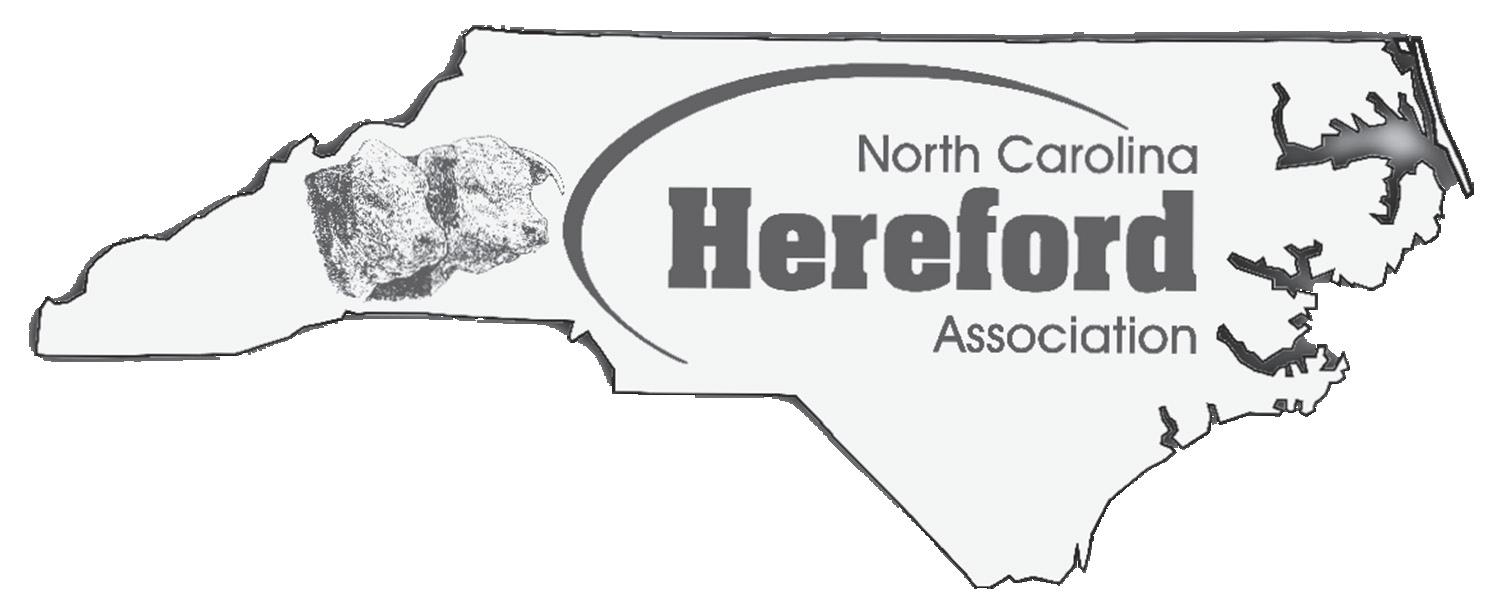
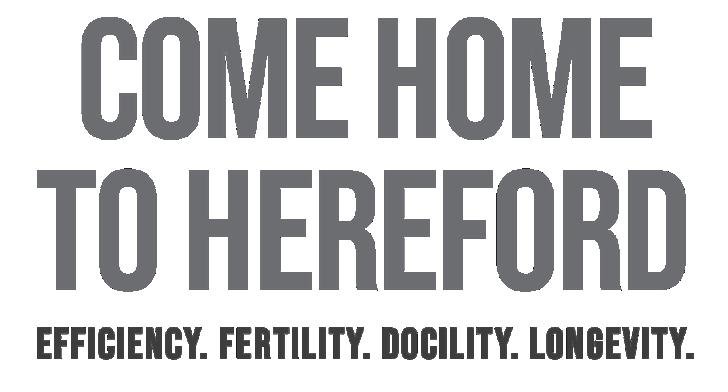
LOOKABILL FAMILY LIVESTOCK
Lexington, NC
Reggie, Patty, Tyler & Noah Lookabill 336-240-2142 rlookabill6015@gmail.com
McCOY CATTLE FARM
Cove City, NC
Myron & Charlie McCoy 252-229-4602 mccoycattlefarms@gmail.com
MITCHEM’S FARM 3C
Vale, NC
Wayne, Crystal, Regan & Jordan Mitchem 704-472-4369 mitchemsfarm@bellsouth.net
NORTH PINO
LAND & CATTLE COMPANY
Mocksville, NC
Kevin Robinson 336-940-2547 kevrob1@aol.com
LOVE FARMS
Blowing Rock, NC
Jim Love 828-266-1458 cell • 828-295-4236
P and J FARMS
Monroe, NC Andy Smith 704-400-3436 pandjfarmsherefords@gmail.com
PRESTWOOD BEEF CATTLE Lenoir, NC
Kim & Lori Prestwood 828-320-7317 - Kim 828-432-7434 - Lori brownloriclyde@yahoo
QUAIL RIDGE FARM
Rutherfordton, NC
Mark Brewer 828-329-2074 markbrewer65@gmail.com
TAYLOR’S MILL FARM
Zebulon, NC J. Brent Creech 919-801-7561 tmfherefords@icloud.com
TERRACE FARM
Lexington, NC Jim, Linda & Chad Davis 336-247-1554 jgdavis101@yahoo.com
TRIPLETT POLLED HEREFORDS Statesville, NC James Triplett 704-902-2250 triplettmarble@bellsouth.net
W&A HEREFORD FARM Providence, NC George, Tammy, William, & Andy Ward 434-251-3637 gwwardjr@comcast.net
WHITEHEAD
CATTLE COMPANY
Lewiston Woodville, NC
Austin & Jodie Whitehead Austin - 252-370-5647 Jodie - 252-642-3435 austinwhitehead@yahoo.com
WILL-VIA POLLED HEREFORDS Mooresville NC Lavette Teeter 704-662-5262
The N.C. Hereford Association held its 56th Annual Sale on March 23 at Shuffler Farms in Union Grove. We would like to thank Dr. Eugene Shuffler and his staff for helping make this another smooth and successful sale.
Cattle started arriving on Friday, and our staff on the sale committee worked tirelessly to get the cattle offloaded, sorted, and penned. Even though the weather was overcast and there was a chance of rain in the forecast, a number of buyers were there to view the sale cattle. Saturday morning was also gray, but that did not stop the buyers from joining us for the sale.
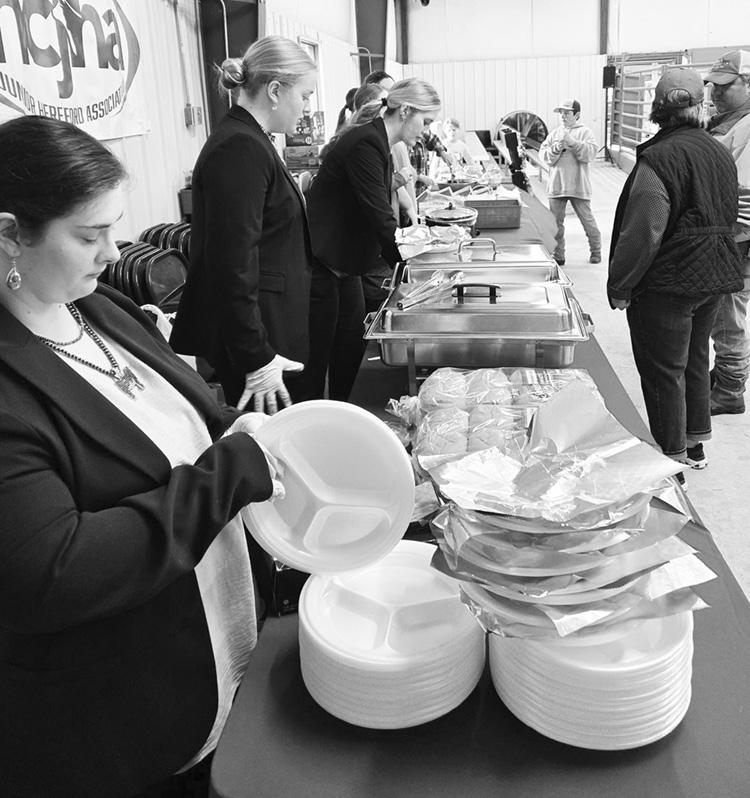
The N.C. Junior Hereford Association was set up in the sale barn selling delicious Certified Hereford Beef hamburgers with all the trimmings, selling NCJHA shirts, and manning the silent auction tables, all to raise money for the 2025 Southeast Regional that the NCJHA will be hosting.
Before the sale, Wes Carpenter presented Mike Mericka with a plaque honoring him for 25 years as the sale
committee chairman. All of the members, consignors, buyers, and staff of the sales committee would like to thank Mike for all his dedication and service to the N.C. Hereford Classic Sale.
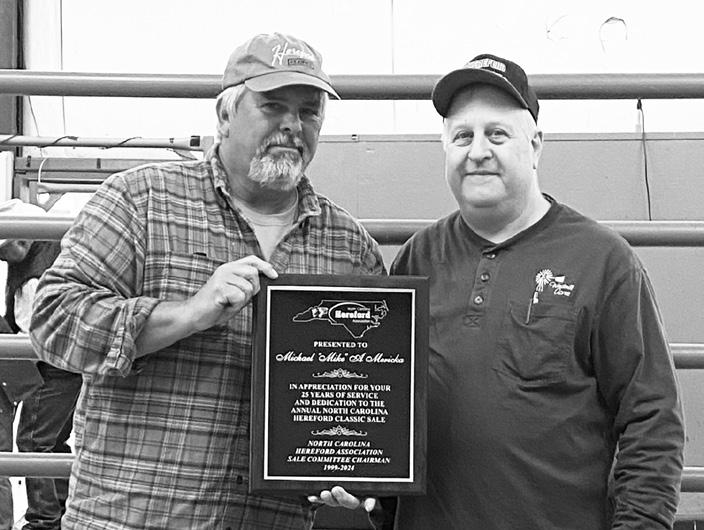
Dale Stith, maked some announcements and introductions, banged the gavel shortly after noon, and the sale was underway. Taking bids were Neil Bowman, NCDA&CS livestock marketing director; Will Thompson, NCDA livestock marketing; Tommy Coley, AHA field representative; and CowBuyer.com with online bidding. Kathryn and Mitch Ingram of KSI Marketing and Design managed and marketed this year’s sale. Bryan Blinson helped as assistant auctioneer. Chad Davis and David Hendrick sorted the cattle in the sale ring. Mike Mericka, William Ward, Andy Ward, Kim Prestwood, Phillip Cave, Dustin Brim, Tom Shutsky, Jason Revis, and Wes Carpenter sorted the cattle in the back, and Truman Sanner, DVM, was our sale day veterinarian. This sale could not happen without all these people working as a great team.
I would like to sincerely thank all of those who attended the N.C. Hereford Classic Sale this year. The sales committee is working on some new and

exciting ideas for next year’s sale. Join us next year for the 57th Annual N.C. Hereford Classic Sale held at Shuffler Farm on March 22, 2025.
If you are interested in Hereford cattle in North Carolina, please visit our website at www.NCHereford.com
Sale Summary
35 Female Lots - $116,850
Average - $3,338
2 Bull Lots - $6,700
Average - $3,350
Donation Lot - $4,700 Proceeds to the NCJHA
Top selling female lots include:
• Five J’s New Look 3129, born 4/16/2023 and sired by GENOA 6011 Belle Air 19091, was consigned by Five J’s Beef Cattle in Clayton, N.C., and sold to Chapman Land & Cattle of Nunnelly, Tenn., for a total of $10,000.
• MF Miss Design 24G, born 11/19/2019 and sired by THM Montgomery 8068, with a heifer calf, MF 174E 24G Miss Design 118M, born 2/14/2024 and sired
and sold to Twin Creek Mountain Farm, LLC of

• TF Ginger 225D 504C910J, born 9/10/21 and sired by BEHM 100W Cuda 504C, with a heifer calf TF Ginger 910J 812J L201, born 12/1/2023 and sired by WHR 845C 300G Beefmaker 812J, was consigned by Terrace Farms in Lexington, N.C., and sold to Kevin Jennings of

Yadkinville, N.C., for a total of $3,400.
• WHR 4020 331E Beefmaid 067G, born 1/24/2019 and sired by INNISFAIL WHR X651/723 4020 ET, with a heifer calf PDF 156J 67G Cave Lady 01M, born 1/9/2024 and sired by NJW 202C 173D Steadfast 156J ET, was consigned by PD Farms in Elkin, N.C., and sold to Vincent Owenby of Fletcher, N.C., for a total of $3,400.
• 4B Ms Houston K27, born 9/30/2022
and sired by SHF Houston D287 H086, was consigned by Four B Farm, LLC in Shelby, N.C., and sold to White Hawk Ranch in Marietta, Ga., for a total of $3,400.
Top selling bull lot:
• GTW 318G Chief 2212, born 9/17/2022 and sired by WHITEHAWK Chief 318G ET was consigned by W&A Hereford Farm, LLC in Providence, N.C., and sold to P&J Farm in Monroe, N.C., for a total of $4,500.
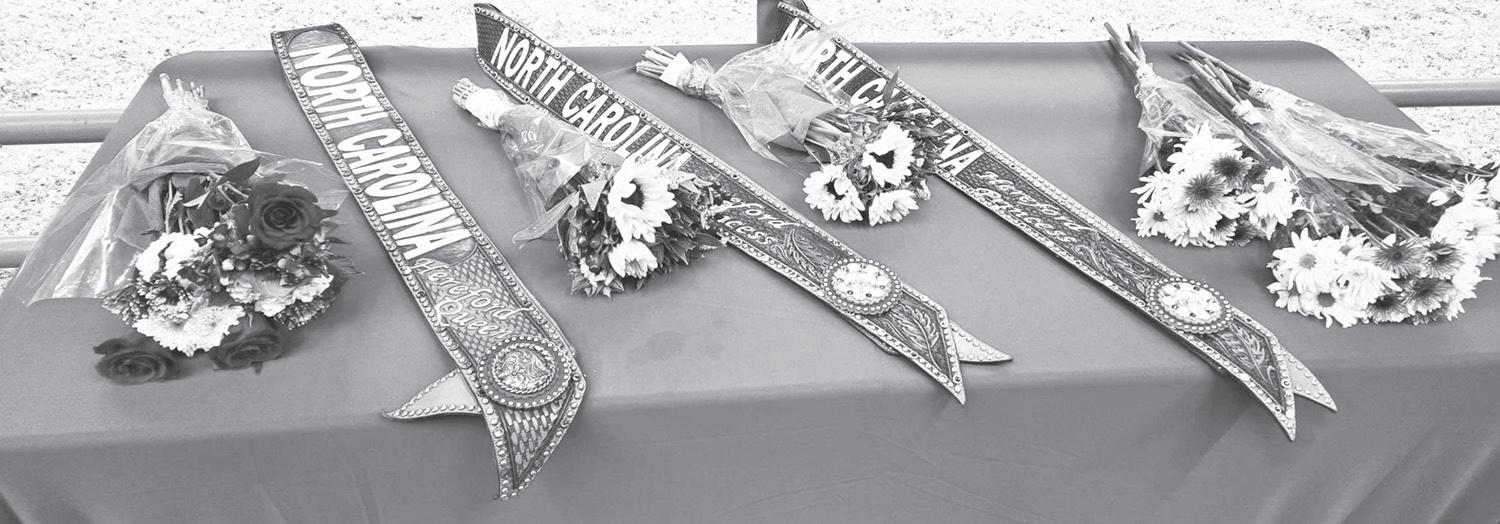
To commemorate 50 years in the Hereford business, two North Carolina Hereford producers were named Golden Breeders for their steadfast commitment to the breed during the American Hereford Association Annual Membership Meeting in Kansas City, Mo., on October 21, 2023.
High Country Farm, Sanford, N.C. - High Country Farm began with Claud Austin and his daughter, Claudia. Claud owned commercial first purebred Polled Hereford cow in 1969. Claud started showing cattle in 1971 at the Caldwell County Fair and did not miss a year until the fair stopped having an open show in 2009. Claudia joined him in the show ring at the age of 10. Afterward, Claud preferred to work the chutes and let his daughter do most of the showing. After Claudia graduated from N.C. State University, they expanded their show circuit to include shows in eastern Tennessee and North Carolina. With only 12 brood cows, they had several grand or reserve champions at these fairs over the years. When Claudia became too old to show at junior shows, Claud lent many show heifers to juniors over the following 30 years. Claudia has continued that tradition after Claud’s passing in 2014. Claudia still maintains a small Hereford herd in the North Carolina mountains and plans to carry on High Country Farm as long as she can, fulfilling Claud’s dreams.
Rhyneland Farms, Charlotte, N.C. - Bob Rhyne skipped class one day during high school in 1953 and went to the N.C. State Hereford Sale and purchased his first registered horned Hereford heifer. While he and his family already had some commercial Hereford cows, this was the beginning of his registered herd. From there, Rhyneland Farms continued to grow. Bob served as president and secretary of both the N.C. Cattlemen’s Association and the N.C. Polled Hereford Association. He bred sought after cattle and continued to build his reputation as a respected cattleman. Today, the farm is primarily operated by Bob, his daughter Kim Eudy, and granddaughters Alexis and Courtney Eudy. Bob instilled his love and passion for the breed in the girls. They currently run around 150 brood cows and continue to utilize artificial insemination and embryo transfer.


Most of the breed associations in North and South Carolina have stepped forward and renewed their contracts for Spotlight sections in The Carolina Cattle Connection for 2024. If your breed is not featured as a Spotlight section and you would like to inquire on any open months please feel free to contact me. Below is the tentative schedule for the upcoming year.
JANUARY CHAROLAIS FEBRUARY FORAGES
MARCH ANGUS
APRIL PIEDMONTESE
MAY BRAHMAN
JUNE HEREFORD
JULY GELBVIEH
AUGUST SIMMENTAL
SEPTEMBER SANTA GERTRUDIS
OCTOBER WAGYU
NOVEMBER BRANGUS
DECEMBER RED ANGUS
For more information about your breed’s Spotlight Issue, contact: The Carolina Cattle Connection 2228 N. Main Street • Fuquay-Varina, NC 27526 919-552-9111 • mail@nccattle.com

Hi, my name is Kaylee Revis. I am your 2024 N.C. Junior Hereford Association (NCJHA) Reporter. Our junior members are very active in participating in events throughout the year. We are already on the move and having a blast.
In February, the NCJHA hosted an annual judging contest as a fundraiser. Many FFA and 4-H teams from North Carolina and Virginia participated in this annual event. We also held our first junior meeting at the conclusion of the competition to discuss upcoming shows, events, and fundraising activities. Following the meeting, the juniors were treated to ice cream at the Howling Cow, where they also had a good time of fellowship and laughter.
In March, the juniors attended the N.C. Hereford Association Annual Banquet, as well as the North Carolina
Hereford Classic Sale. We served a hamburger meal as a fundraising opportunity to raise money for the Southeast Region Junior Hereford Show that will be hosted in 2025 at the WNC Ag Center in Fletcher. The Claxton family was very generous in donating a heifer for auction to help raise money for the juniors in memory of Dr. Claxton. After the sale, the juniors held their annual meeting and elected officers. The 2024-2025 officers are President - Jordan Mitchem, Vice President - Wyatt McCoy, Reporter - Kaylee Revis, SecretaryDaisy Brown, and Junior Beef RoundUp Representatives - Addison Revis and Erica Shutsky.
In April, the Hereford State Show was held in conjunction with Showdown in the Foothills in Lenoir, North Carolina. The grand and reserve heifers were shown by Jordan Mitchem. The grand

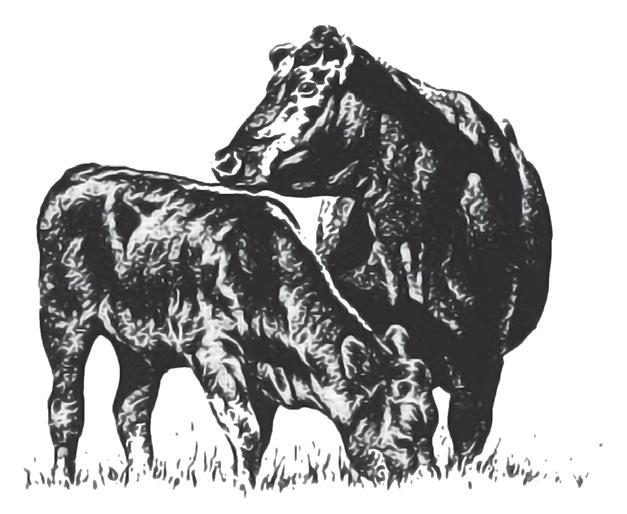
Our breed Spotlight special sections are excellent forums to reach producers and cattle industry insiders in the Carolinas and throughout the Southeast. Advertisers also receive a special discount for placing their message in the Spotlight.
champion bull was shown by Charleigh Birdsell. The reserve champion bull was shown by Chelsie Bobbitt. The grand champion cow/calf pair was shown by Jackson Hooker. The reserve champion cow/calf pair was shown by Daisy Brown. The grand champion steer was shown by Charleigh Birdsell, and the reserve champion steer was shown by Erica Shutsky. Keeping with the annual tradition, the juniors enjoyed an evening out at Bo’s Entertainment Center for a
time of fellowship and fun with bowling, laser tag, arcade games, mini golf, and pool. Even the Hereford adults got in on the action.
The juniors are looking forward to the upcoming activities and are excited to represent North Carolina at the Southeast Regional Hereford Show in Perry, Ga., and at the Junior National Hereford Expo in Grand Island, Nebraska.
It is my pleasure serving as the N.C. Junior Hereford Association Reporter.
Hello Hereford breeders! My name is Belle Westbrook, and I served as your N.C. Hereford Queen in 2023. I raise Herefords with my family at Four B Farm in Shelby, N.C., where I focus on our genetics and cow herd registrations. I was honored to be selected as Queen at the 2023 Hereford Classic Sale. Throughout this past year, I have attended several events where I have represented North Carolina. These events include the Junior National MAD DASH to the Hereford Bash in Madison, Wis., the Annual Hereford Association meeting and Ladies of the Royal Sale in Kansas City, Mo., and the N.C. State Fair in Raleigh.
While in Madison, Wis., I was introduced to many other Hereford Queens from all across the country. We toured the BoviTech headquarters where last year’s National Queen, Madison Katzenberger, works and enjoyed seeing all the juniors show their cattle. Being
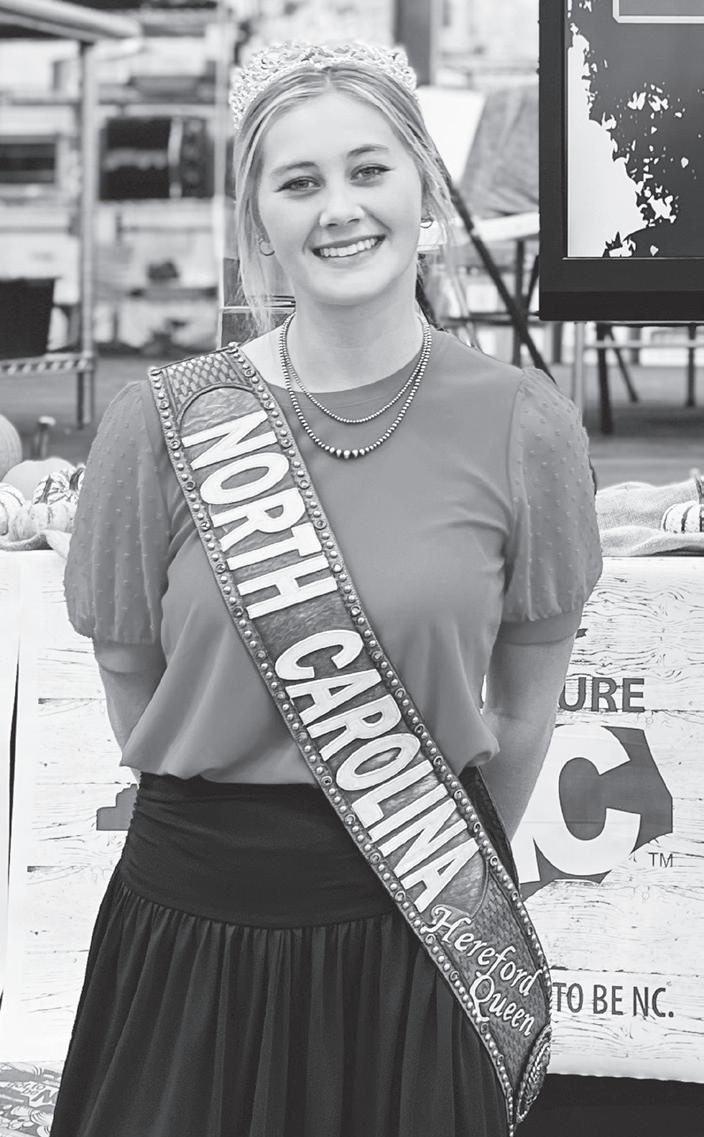
able to meet these ladies was truly a gift, and I have stayed in touch with several of them. The annual meeting in Kansas City was another opportunity to connect with the Hereford women and other state queens and meet breeders from all over the country.
As you can see, this has been an exciting year of travel, education, and growth, and it has certainly pushed me to step outside of my comfort zone at times. Through networking and building relationships, I gained valuable knowledge and insights into the cattle industry. Collaborating with experts, fellow breeders, and state queens has enhanced my understanding of breeding practices, genetics, and sustainable farming techniques. These newfound skills have not only enriched my own endeavors but have also allowed me to contribute positively to the Hereford community.
I believe that the Hereford breed, with its distinctive red coat and white face, stands as a symbol of strength, resilience, and adaptability. As a representative of this remarkable breed, I have witnessed firsthand the admiration and appreciation it garners from both farmers and enthusiasts alike. The Hereford breed’s ability to thrive in various climates and its exceptional meat quality have earned it a well deserved reputation in the cattle industry.
This summer, I plan to continue my activities with the juniors and attend the Faces of Leadership conference in Fort Worth, Texas. It is exciting to see all of the youth participating in the American Hereford Association, and I look forward to many more years of involvement with the Hereford breed, both locally and across the country.
I am Mazie Bunn from Zebulon, North Carolina. I am 16 years old and an active member of the N.C. Junior Hereford Association. Last year was a pretty amazing year for me. In 2022, we had a bull calf born on our farm. I knew I wanted to cut him and raise my first ever homegrown steer. His name was Carl,

and he gave me one amazing run as a show steer. Some of the banners that Carl helped me win were:
• 2022 reserve champion steerHanging with Ewe Halloween Spooktacular
• 2022 reserve champion steerWilson County Fair
• 2023 N.C. Hereford grand champion steer - Showdown in the Foothills
• 2023 third overall British steerN.C. State Fair
• 2023 reserve champion market steer - Wilson County Fair
The most amazing honor was being awarded the 2023 grand champion performance market steer at the N.C. State Fair! At every show he went to, he always placed well. He was a gentle giant.
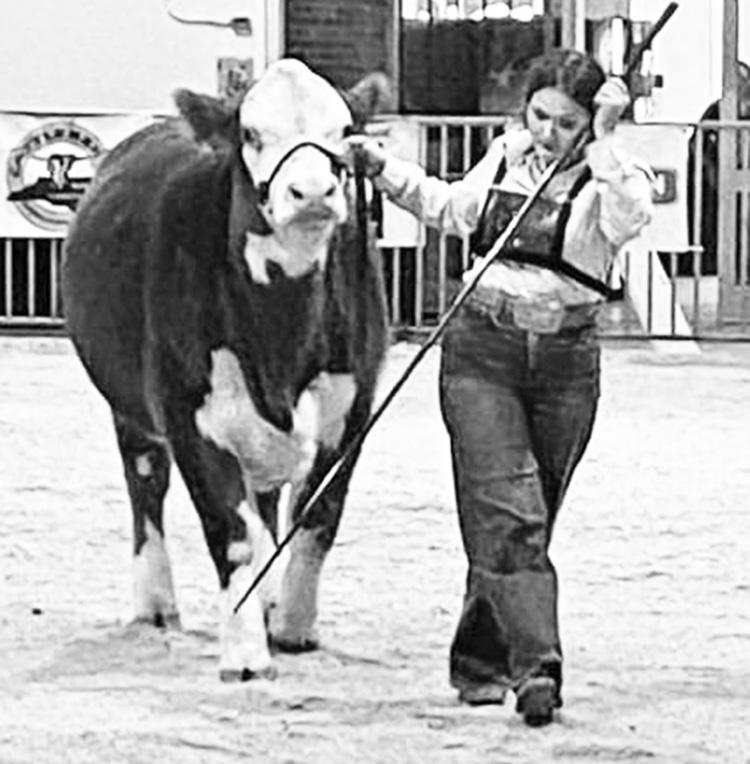
This boy also helped me place well in showmanship throughout his run. I was able to take him to my brother’s school to educate kids on where their food comes from. But most of all, I was able to raise
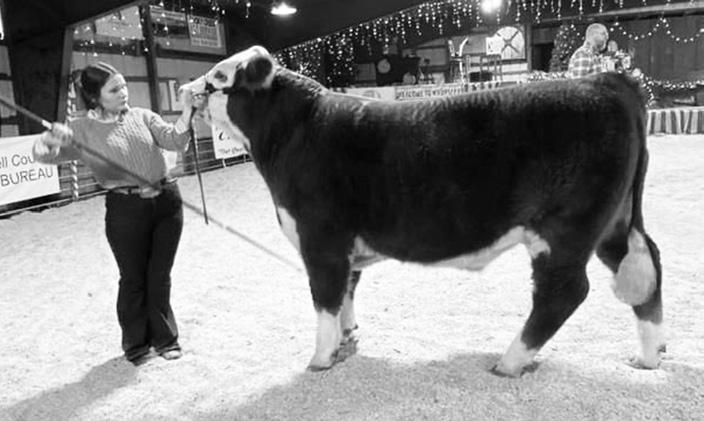
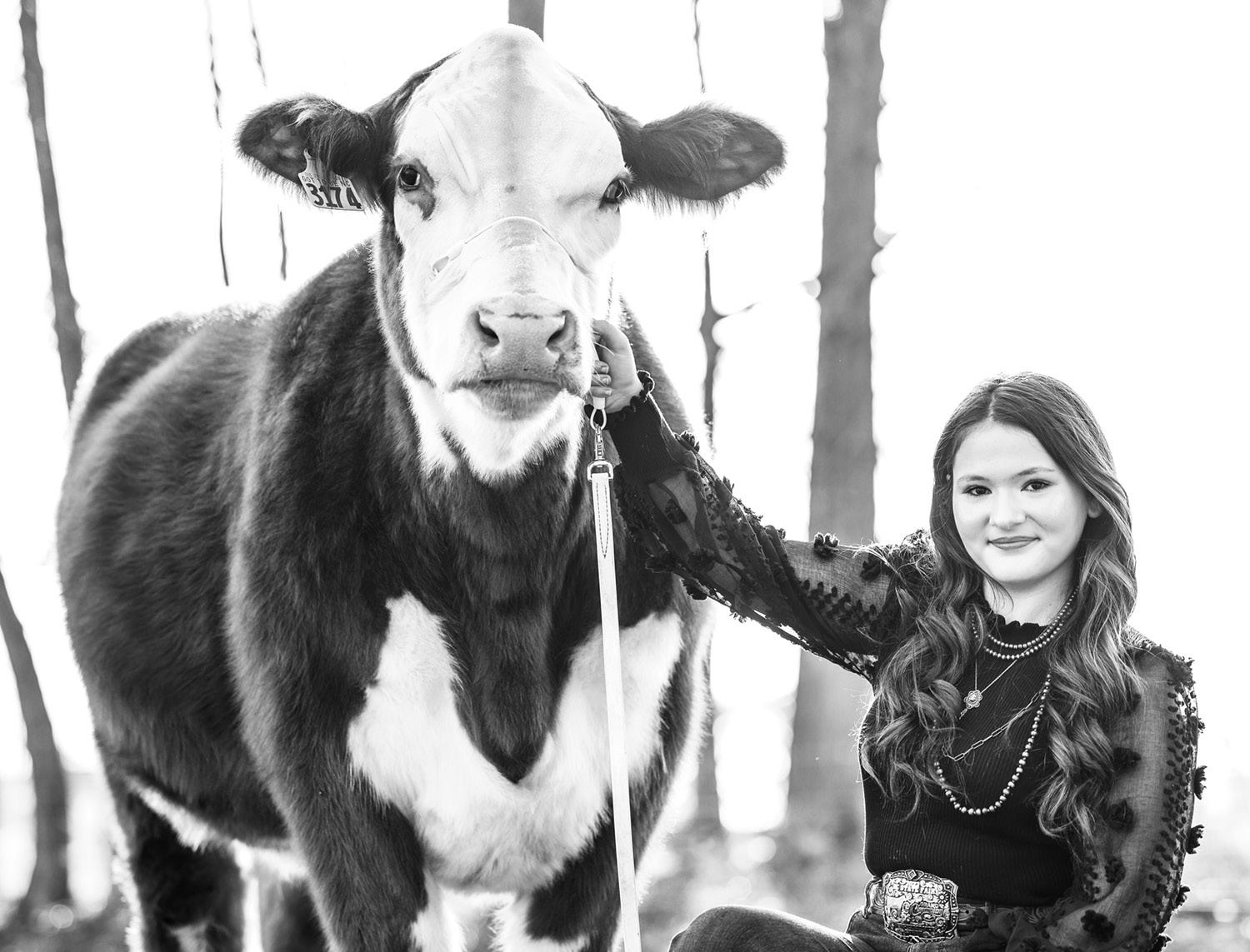

him to feed my family and two other families.
Yes, the goodbye was hard, but that was his job, and I was so proud of myself to be able to say I raised this boy from the very beginning. I absolutely love my herd of Hereford cattle. Being able to produce cattle that are show worthy and can go back in the pasture and make good mamas is what it is all about.


Regular copy deadline is JUNE 5 for the JULY issue Or else!
Spotlight material is due JUNE 1 for the JULY issue

Reality is an uncompromising teacher. Yet, many lessons in the cattle business are lost because the distance between genetic decisions and the consumer’s plate is so long and winding.
“Ninety percent of the people involved in the beef business are cow/ calf producers. They raise calves; maybe they wean them in the fall for 60 days or background them until spring. But very, very few of those producers ever follow them through the finishing phase,” says Lee Mayo, general manager of HRC Feed Yards (HRC) in Scott City, Kansas. “If more of them did, I think it would improve the industry.”
Improving their own genetics and management is the primary reason a growing number of breeders and producers participate in the American Hereford Association (AHA) Hereford Feedout programs, which include the Fed Steer Shootout for members of the National Junior Hereford Association (NJHA). All of the cattle are fed at HRC.
“We needed to find a way to make sure our genetics were doing what they’re

supposed to be doing. What better way to do that than to take calves that you’re raising at home and send them to the feedlot,” says Denise Loyning of L Bar W Cattle Co. in Absarokee, Montana. “Let’s get back carcass data. Let’s find out if our health protocols at home are working. Are the bulls that we’re selecting right for what the industry is needing today? Are those carcass bulls truly performing? Are all those things coming together?”
This is the third year L Bar W sent calves to the feedout. Data so far led them to shift some of the sires they utilize and health protocols they employ.
Likewise, Carlisle Braman, a junior Hereford member from Refugio, Tex.,



explains, “We’re really just wanting to be able to better ourselves.” She and her sister, Madeline, are the sixth generation on their family ranch. She and her family saw their second set of calves at HRC during the annual field day on April 12-13.
“It’s benefited me as a breeder because I get to see from the bottom line what I can do better and then how my program can grow,” Braman explains. “Comparing spreadsheets from last year, there were more respiratory issues in our cattle. So, as breeders what can we do better, even though I feel like this year it was more of a weather issue than anything else. But that’s how we truly benefit as breeders, finding out what we can do to make our program better.”
Moreover, Braman explains the feedout gives them an opportunity to experiment. This year, the calves they sent included some Hereford influence Brahman tiger stripes.
“Living so far south, where it’s so hot, black cattle don’t do well in the heat of South Texas. It’s really hard for them to stay on feed. We wanted to see if a crossbred that can grow some hair, not a lot, but some hair, can withstand the winter up here and then be able to slick off its hair and stay on feed in the summer.”
The Hereford Feedout programs provides Hereford breeders and commercial users of Hereford genetics the opportunity to send a few head or entire pens to feed at HRC Feed Yards. Participants learn more about the cattle feeding and beef packing sectors while collecting performance data from their cattle. This year’s programs include 2,379 head of Hereford and Hereford influenced steers and heifers from 103 participants in 20 states.
“Every person who raises a cow/ calf needs to send one group of calves so they can understand what they’re doing at
home,” Loyning says. “I think that people will be surprised at what they can learn, whether it’s about the bulls they’re buying or their health protocols at home. You don’t know to change it if you don’t know something is wrong or what’s broken.”
Field Day Leverages EducationTrey Befort, AHA director of commercial programs, believes Feedout participants who also partake in the annual Hereford Feedout Field Day receive the most benefit, whether or not they’re new to feeding cattle.
“The collective experience and industry leadership represented by presenters at each field day is truly amazing,” Befort says. “They are among the best in the industry at what they do. Whether it’s nutrition, animal health, cattle feeding, or beef packing, they are leaders who graciously share their knowledge and art.”
Educational sessions presented by industry leaders included cattle feeding basics, carcass value drivers, packer cattle procurement, feedlot rations and component identification, a hands-on necropsy demonstration, and Beef Quality Assurance training.
“There’s no other event like this,” Mayo says. “How could you not be excited when we can bring all these people together and provide a collaborative education for the young people in the Hereford breed.”
Collaboration also underscores the importance of relationships for participants.
“It’s about relationships you have to build these relationships,” Loyning says. “As the HRC veterinarian told us, ‘Build relationships with your veterinarian, your nutritionist, and HRC Feed Yards or whatever feedlot you’re going to, because this business is all about relationships. At the end of the day, that’s what it’s about.’”
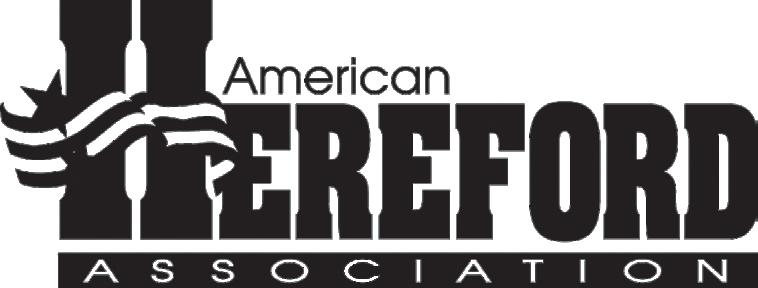
HPI Welcomes New Editorial Designer. The American Hereford Association (AHA) and Hereford Publications Inc. (HPI) added editorial designer Megan Underwood, of Kansas City, Mo., to the Hereford World and Baldy Advantage team on May 6. In her role, she will predominately assist with the layout, production, and design of Hereford World and Baldy Advantage
Underwood is a Kentucky native, former National Junior Hereford Association member, and lifelong Hereford enthusiast. In her previous position, she served as the American Gelbvieh Association’s communications coordinator. She’s completed internships with the Red Angus Association of America, Beef Improvement Federation, and Farm Journal. Underwood holds bachelor’s and master’s degrees from Kansas State University.
“I am excited to come home to Hereford and use my communication skills and talents to serve the breed that built me,” Underwood says. “I look forward to working with the talented Hereford World and Baldy Advantage staff to produce these prestigious publications to advance the message of the Hereford breed for years to come.”
In addition to working with the editorial team to set the visual style of publications and design layouts for Hereford World, Baldy Advantage, and other projects, Underwood will collect and format show and sale reports from AHA field staff and manage the archiving process for Hereford World and Baldy Advantage editorial.
“We’re excited to have Megan join our team,” says Wes Ishmael, executive editor of Hereford World and Baldy Advantage “Her industry experience and history in the Hereford breed, combined with her talents, will bolster both publications and our overall communications efforts.”
Underwood can be reached at munderwood@hereford.org
Hereford Junior Leaders Share at YBIC. National Junior Hereford Association (NJHA) directors joined leaders from other youth organizations to learn more about the latest industry trends and how to become stronger advocates for agriculture and the beef industry during the bi-annual Youth Beef Industry Congress (YBIC) on April 25-27 in Denver, Colorado.
“YBIC was an amazing experience. Throughout the conference, we explored the role of sustainability in the food supply chain and the importance of telling our story
about our own sustainability practices,” says Sam Birdsall, NJHA director. “It was also a great opportunity to network with other junior leaders representing various breeds from across the country.”
The YBIC mission is to provide young leaders of all breeds with the opportunity to hone their leadership skills, network with others, and learn new ways to advance agriculture. This year’s conference was hosted by the Red Angus Association and the Junior Red Angus board of directors.
Tour stops included Five Rivers Cattle Feeding LLC, Colorado State University, Leachman Cattle, and the National Western Stock Show campus. In addition to tour hosts, YBIC presenters included TJ Carlisle, National Cattlemen’s Beef Association (NCBA) director of beef sustainability research; Chandler Mulvaney, former NJHA member and NCBA director of grassroots advocacy and spokesperson development; John Hinners, U.S. Meat Export Federation; Doug Stanton, IMI Global; and Karissa Isaacs, Superior Farms American Lamb.
“This year’s YBIC provided a valuable platform for its members to forge meaningful networking connections and further their professional growth. Our board engaged with a diverse group of like-minded young professionals from various breed boards and cattlemen associations,” explains Tar Tut, NJHA chairman. “The event fostered excellent interactions and exchanges, broadening insights across different associations and promoting a closely connected community of emerging leaders.”
This year’s YBIC included more than 120 leaders from 18 junior breed and junior cattlemen’s associations.
“Working with and learning from
the leaders within other breeds made the YBIC conference one of the most unique opportunities I have been part of,” says Haley Mouser, NJHA Fundraising Chair. “It opened my eyes to the scope of the collective goal we all share, building the next generation of beef industry leaders, and gave me a new perspective on my role as a junior board member.”
Legacy Heifer Offering Pays Tribute to the Late James Bennett. Friends and colleagues of the late James Bennett paid tribute to the seedstock performance pioneer and long time patriarch of Knoll Crest Farms, Red House, Va., via choice of the top two bred heifers offered by Bill and Claudia Tucker, in their April 17 Tucker Family Farms Professional Replacement Female Sale in Amherst, Virginia. The Tuckers, long time Knoll Crest customers, made the offering in honor of Bennett, their friend and mentor, with all proceeds supporting the Hereford Youth Foundation of America (HYFA) and ongoing education and research projects.
When the final gavel fell, the choice of legacy bred heifers sold for $10,000 to a group of fellow Hereford breeders from across the nation, as well as Bennett family friends and colleagues from animal science academia and the beef industry.
After winning the bid, the group and supporters donated the heifer back to be resold and added to the memorial. The final bid for FHF Miss Acclaim K592F was $5,000, going to Walker Polled Herefords in Morrison, Tenn., and Sandrock Ranch Herefords in Benton, Wisconsin. All told the lot generated $15,000 in honor of Bennett.
Bennett passed in January 2024. He cast his positive influence across the industry locally, statewide, nationally, and internationally.
“The knowledge from this counsel will ring in my ears for the rest of my days and is an awesome gift from a great man,” says Bill Tucker.
Bennett’s accolades included being named the National Beef Improvement
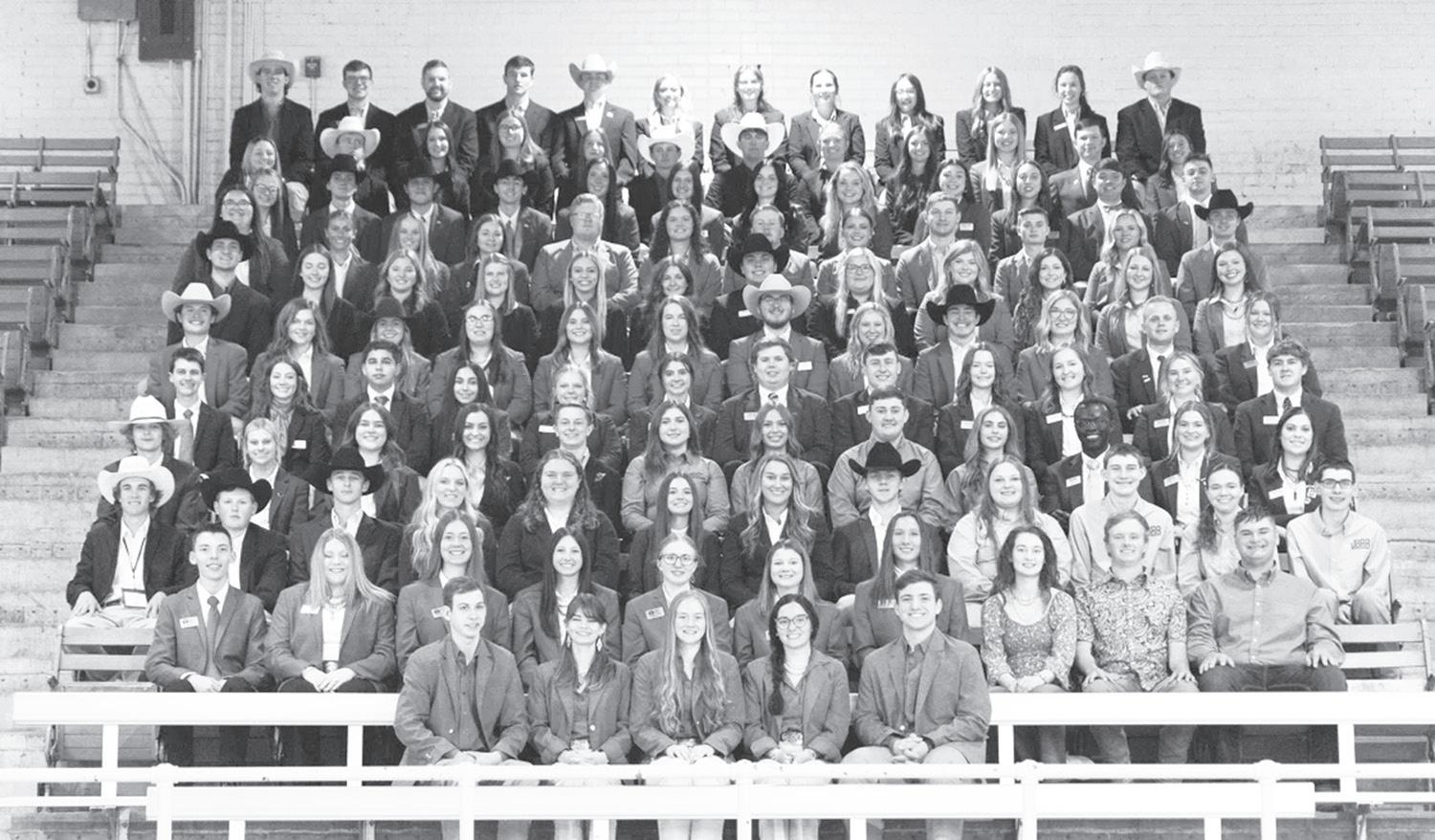
Federation (BIF) Seedstock Producer of the Year in both 1978 and 1998, induction into the American Hereford Association Hall of Fame, and the Virginia Livestock Hall of Fame. He also received both the BIF Continuing Service and Pioneer Awards. He spent decades serving on different industry boards, including acting as the chairman of the American Polled Hereford Association, President of BIF, National Cattleman Beef Board, Virginia Beef Expo, Dominion Bank, Central Fidelity Bank, and First Bank and Trust Agriculture Advisory Board.
“A huge HYFA thank you to the Hereford breeders and industry friends from across the country who came together to recognize James Bennett’s legacy and impact by supporting this wonderful tribute,” says Amy Cowan, Director of Youth Activities and Foundation for the American Hereford Association. “These proceeds will go a long way in benefitting the foundation’s research mission, which aligned so well with the passion of James Bennett.”
About the National Junior Hereford Association. The NJHA is one of the largest, strongest, and most active junior cattle programs in the country. Over the years, members of this association have gone on to earn international and domestic respect as models for youth organizational success. The NJHA, through its extensive educational programs, continues to lay the foundation for the beef industry’s future leaders. The traditions of the past, coupled with the energy of today’s board of directors, have created a progressive approach to further develop a meaningful and educational association focus.
About the Hereford Youth Foundation of America. HYFA was established in 1986 and is a not-forprofit 501(c)(3) corporation dedicated exclusively to scholarship and educational support of youth in the business of raising Hereford cattle. The mission of the Hereford Youth Foundation of America is to encourage, recognize, and reward the development of life skills and values in the next generation of leaders by providing education, scholarship, and leadership opportunities for Hereford Youth.
About the American Hereford Association. AHA, with headquarters in Kansas City, Mo., is one of the largest U.S. beef breed associations. The not-for-profit organization, along with its subsidiaries — Certified Hereford Beef (CHB) LLC, Hereford Publications Inc. (HPI), and American Beef Records Association (ABRA) — provides programs and services for its members and their customers while promoting the Hereford breed and supporting education, youth, and research. For more information, visit www. hereford.org
We’ve had a great spring with lots of events and opportunities to share beef information across the state. The largest and a fan favorite is the N.C. State University Farm Animal Days. This annual three day event is hosted at the E. Carroll Joyner Beef Unit. The location provides easy access for urban families and school groups alike to explore all things livestock on a farm. During the event, about ten thousand visitors participated.
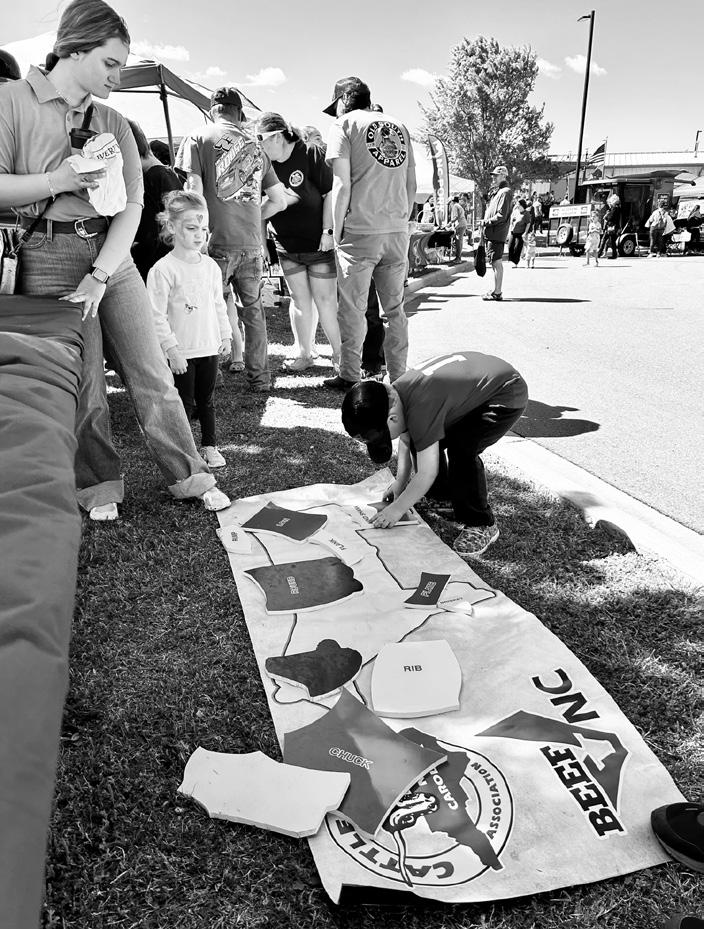
One of the elements we frequently notice is how interested folks are in learning about agriculture. They have chosen to give their time to soaking in all the knowledge and, in the process, share it with their family. We frequently see grandparents enthusiastically engaging

grandchildren in conversation about farming and raising food. It is a big help on our part that everyone is already eager to learn.
We truly enjoy helping visitors gain knowledge and feel confident, which translates to confidence in their food choices. Confident shoppers can make decisions based on knowledge from science, not fear. That translates to their children, making another generation of consumers who have learned to research food choices and not believe in advertising with an agenda. I truly feel that we “move the needle” in helping consumers understand beef after this event.
The N.C. Beef Ambassadors were a huge help at this event. We certainly appreciate the time and dedication of Lydia Hill, Emily Oberman, and Daisy Brown. They delivered big here!
Wayne County’s “We Dig It Ag Day” was another great event that beef ambassador Anna Hering and NCCA Executive Director Milo Lewis participated in. It was a windy day that was well organized by county extension staff. We are glad we had the opportunity to be there.
Another important annual event is our speaker sponsorship at the N.C. Academy of Nutrition and Dietetics ) AND). This year, our speaker was Lauren Twigge, a registered dietitian from Dallas, Texas. Lauren grew up on her family’s dairy in California, so she has a unique perspective on agriculture. The North Carolina AND selected the topic Modern
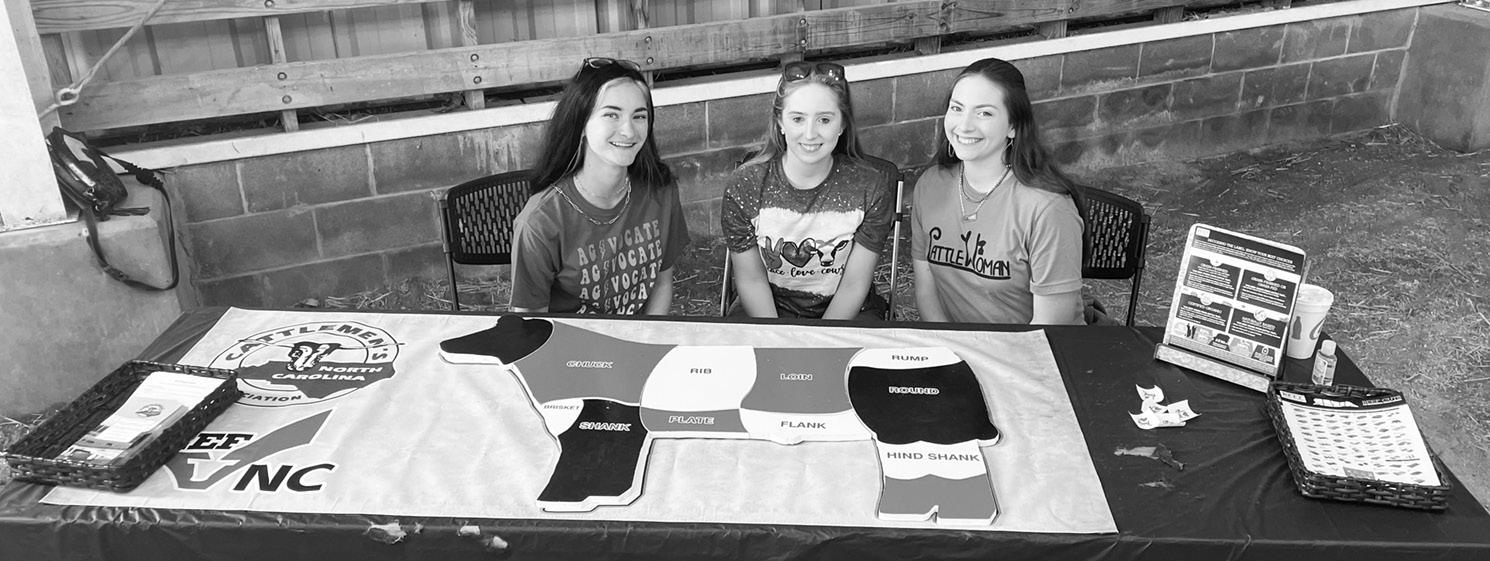
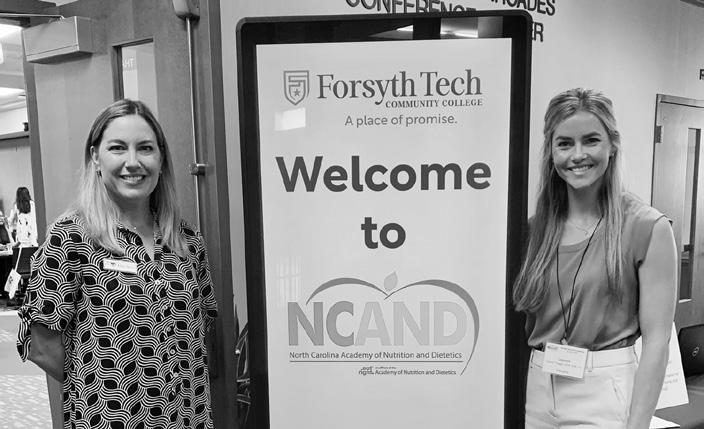
Agriculture, which fit perfectly with Lauren’s personal story.
Lauren shared her family’s history with photographs and illustrated the early days of milk transportation in open trucks without refrigeration. She shared the hardships and challenges of bringing their products to consumers. Framing the story of agriculture with our advances in food safety, farmer safety, product quality, and product quantity certainly helps everyone understand more about how our food is produced.
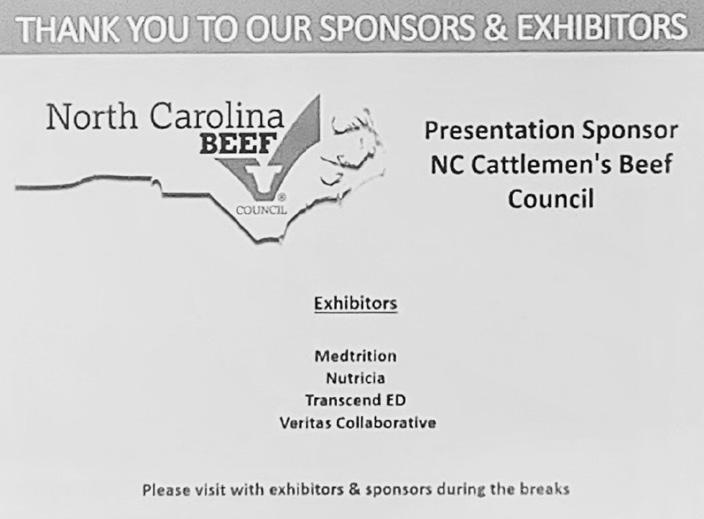
Lots of agriculture advocacy events took place this spring, and we were very excited to see our beef puzzle on WCTI Channel 12 in eastern North Carolina. A multi-county school farm-to-table day featured beef ambassador Emily Oberman and the puzzle. Emily reached thousands of fourth grade students and engaged them with discovering beef primals through the puzzle together.
Our Earth Day efforts to advocate for beef’s role in sustainability were also facilitated by N.C. Beef Ambassadors. On the N.C. Cattlemen’s Association Facebook page and @eatbeefnc Instagram account, you will find an Earth Day video message from ambassador Leelee Votaw. Leelee used farm scenes to
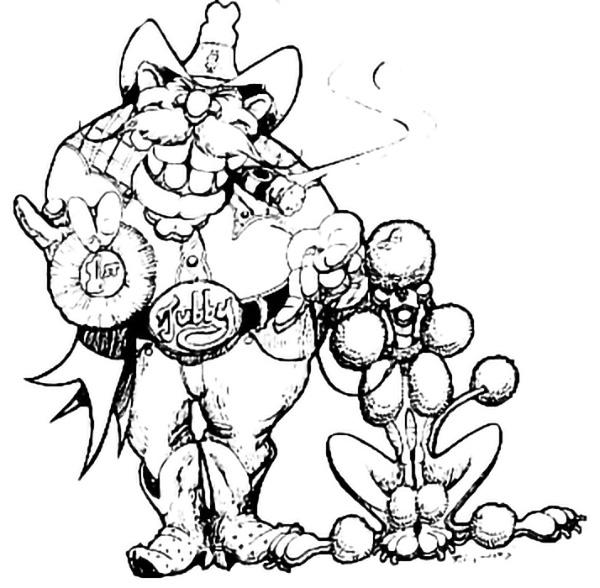

describe the ways raising cattle is helpful to the environment. She demonstrates the ability of cattle to turn forage into a high quality protein. Be sure to check out the video. She did an exceptional job.
It’s astonishing that we are heading into the second half of the year, and I hope you all are enjoying a summer with the right amount of rain and dry weather.
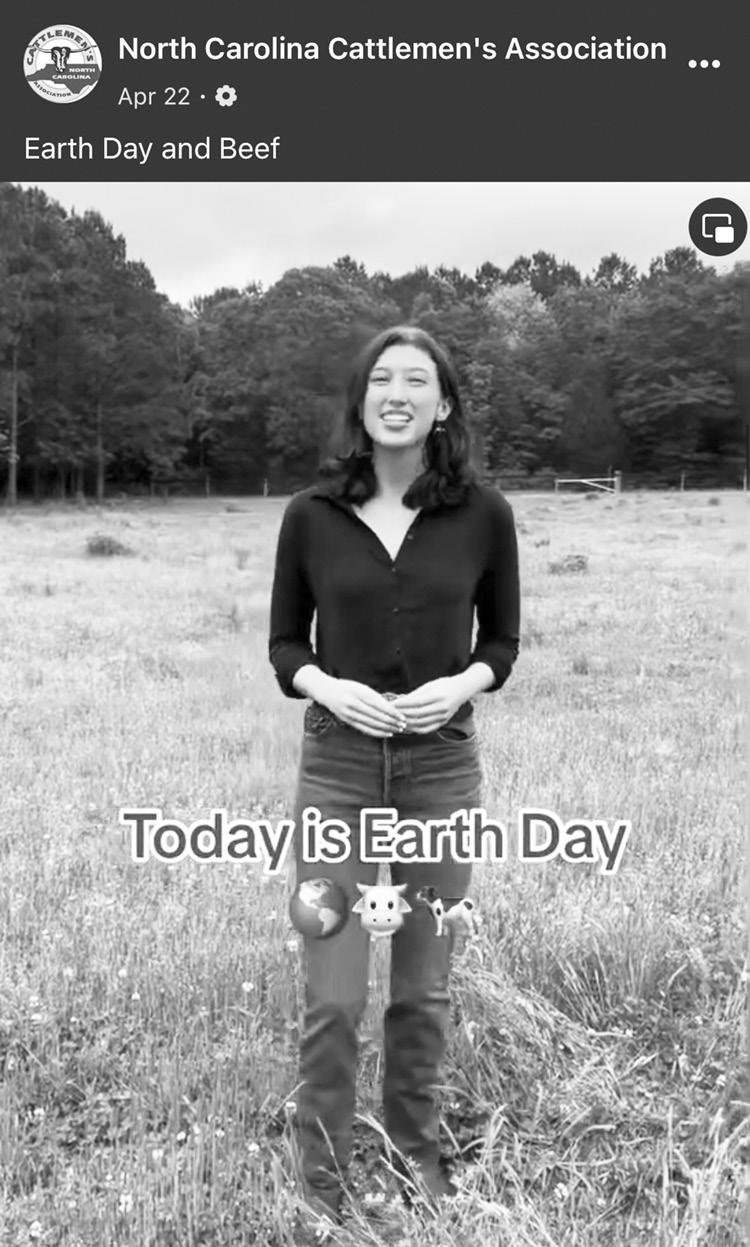
Our advertisers are
“Champions” too. For expert A.I., superior genetics, the best in purebreds and outstanding farm supplies, check the Classifieds in this issue!

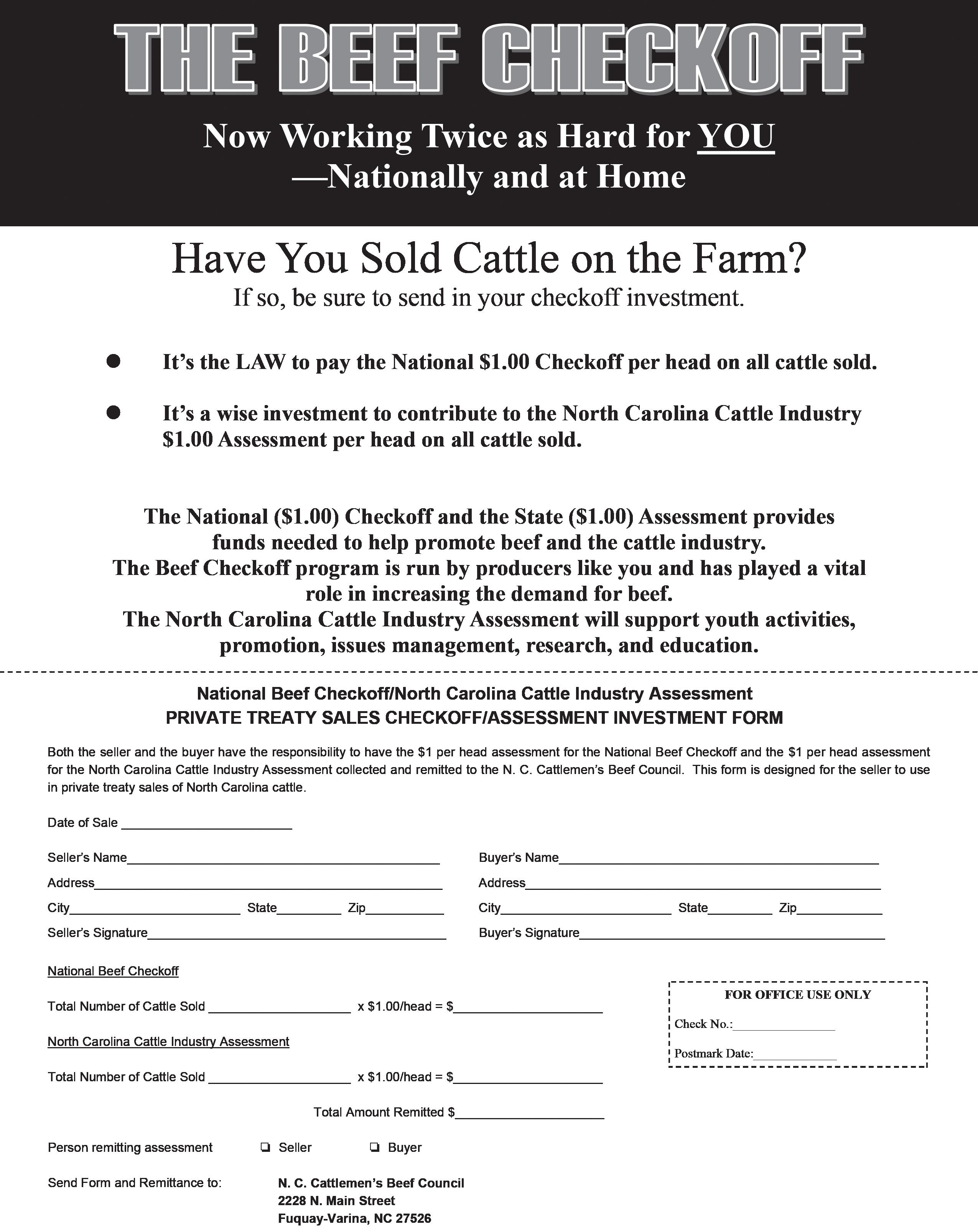
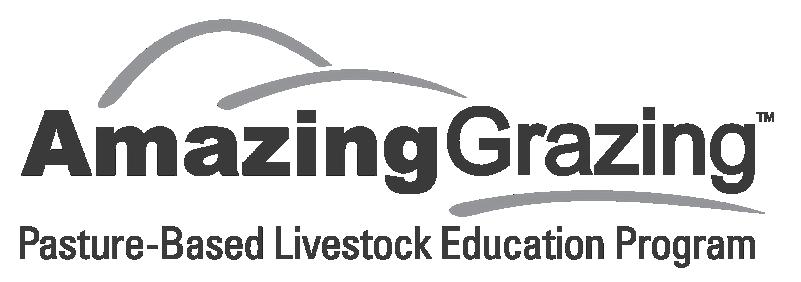 By JEFF BRADLEY & MATT POORE N.C. State University
By JEFF BRADLEY & MATT POORE N.C. State University
Note: The lead guest author, Jeff Bradley, is the County Extension Director and Livestock Agent in Rutherford County, North Carolina. He also cocoordinates the N.C. Beef Quality Assurance Program. Jeff has many years of experience working with farmers to help them improve their beef systems, and he also manages his own cattle farm.
As feeder cattle prices continue to reach for the heavens, it’s possible cattle producers might get a little too comfortable. For the next few years, marginal cows and calves are probably going to still make you

money. Also, there will be enough money in the bank to pay for increased levels of expensive inputs. Farmers that keep these marginal cows and use expensive inputs to increase their stocking rate will find themselves in a jam once prices moderate.
In order to make money in a lean cattle market, producers have to pay careful attention to all aspects of animal management. Sometimes, basic management strategies get put on the back burner during a high cattle market because it is easy to make money. A key example is calf castration. A steer
calf will always outsell a bull calf in the feeder cattle market, and you might think you could live without that $75+ per head difference in value. By continuing to pay attention to the basics and consistently following your management plan, even more money will end up in your pockets, which can be invested in your future.
A cow’s job is to raise a good calf every year. As producers, it is our job to set the cow up for success through proper bull selection, adequate nutrition, and a solid herd health program. If we do our job as producers to help her succeed, she has to do her job too. If she doesn’t, she needs to be culled so she can be replaced with a productive cow. As high as the cull cow market is, it makes no sense to keep these animals on the farm, and it is important to market these cows in a timely manner for maximum return. If you are somewhat overstocked, this strong market provides a great opportunity to correct that and receive a high price for a marginal cow.
Another thing that has been promoted for a long time is the importance of a sound preconditioning program. It doesn’t matter if the market is high or low. This is a practice that needs to be implemented on every farm and one that will be consistently rewarded. Bull calves should
be castrated before three months of age, weaned around 7-9 months of age, and vaccinated. Weaned calves should also be provided with high quality nutrition to get them over weaning stress and to prepare them for the next step in their life.
Feeder cattle buyers want calves that are castrated, weaned, and vaccinated and are willing to pay quite a bit more for these calves. A preconditioned calf is much more prepared to go to a backgrounding operation or feedlot and is less likely to get sick, which saves buyers money in treatment costs down the road. Why would you go to all this trouble when a 6-7 cwt steer will bring you $1,600? It is pretty much a no brainer: Many preconditioned steers this spring have brought over $2,000 per head!
Another investment that is sometimes overlooked is genetics. Many producers try to save money by buying inexpensive bulls. This costs you both on the next calf crop and then in the future because these marginal genetics flow over into the cow herd through a bull’s daughters. Buying a good bull is one of the best ways you can invest in the future. Purchasing high quality replacement heifers rather than raising your own can also be a very effective way of upgrading your herd in the near term.
It may also be a good time to add

artificial insemination for your heifers if you are a commercial producer. New systems of estrus synchronization and timed breeding can result in a high percentage of your heifers calving to very good bulls, with most heifers calving in a very short window. If you are a purebred producer, it may be time to go to more advanced reproductive strategies like embryo transfer that will accelerate your rate of genetic improvement.
All these things that could potentially help you improve your outputs will be difficult to track if you don’t have a good record keeping system. There are several good record programs that allow a producer to keep detailed cow records and access those on your phone when you are in the pasture or chuteside. Those systems seem expensive to some at $200/ year or so subscription cost, but the effort to use that kind of tool will more than pay off for itself because of the enhanced decision making it can support.
It is critical to note that as you work to improve system output, it is also important to watch input costs. Efficiency is the balance between inputs and outputs. To this point, we have talked mostly about outputs, but controlling inputs is also a critical aspect of improving efficiency. Be aware that along with this high priced market for cattle, input costs are also on the increase. Feed, fuel, fertilizer, and equipment costs are way up, and they will not go back down in the future when cattle prices inevitably decline. It is also critical to pay close attention to pasture management and forage production because both feed and hay are very expensive and are unlikely to come down much in the future.
Today, one of the most important things a producer can do to enhance their system is to upgrade their pastures. Many pastures in our region are in bad condition and could be much more productive, reducing the need for purchased hay and feed. A pasture renovation strategy starts with soil testing to determine lime, phosphorus, and potassium needs. Using some of your available funds to improve soil fertility will pay back for many years to
come. Renovating pasture to remove toxic tall fescue from part (or all) of the farm is a real opportunity to dramatically improve cattle performance without expensive inputs across much of our region.
State-of-the-art forages, including warm season grasses, novel endophyte tall fescue, or annuals, can be very useful in developing a great forage program with fewer problems from the toxic fescue. If you are not in “fescue country,” you are probably on a base of bermudagrass. Diversifying these systems with complimentary forages that decrease your hay feeding days is also a very effective strategy.
Improving grazing management is a key practice that can help you get more forage out of every acre and be more resilient to dry spells and high feed prices. Investing in infrastructure such as cross fencing, water development, and temporary fencing technology can lead to improved pasture condition and associated improved forage production. Rotational grazing improves forage utilization, which effectively increases your carrying capacity and reduces your hay feeding days. Adding clovers to your pasture if you don’t have much can also dramatically reduce your fertilizer bill while improving performance.
One common piece of advice during the 2014-2015 record market was to invest in the operation rather than taking profits from the system. Many producers bought new trucks, tractors, hay equipment, etc., and those were good purchases (assuming they needed replacing). Other timely investments made by many included building hay barns, fences, or working facilities. These investments are longterm and will make your operation more efficient and your life easier no matter what the market is doing. If you didn’t invest in those items before, you might consider it now. If you did, don’t be seduced by new bells and whistles, which will tempt you to spend your funds on things you don’t really need. Invest in things that actually increase your output or decrease your inputs.
We all wish this high cattle market would continue forever, but the cattle cycle is a predictable phenomenon.

Bluntly, no matter how optimistic you are, it is inevitable that prices will moderate at some point. Making management decisions that are more affordable now when you have extra money in your pocket will help you get through the times when cattle prices are lower.
Reducing stocking rate some by culling aggressively will improve your genetics and make room for pasture renovation. Using the available funds
from the cattle sales to upgrade your pastures, improve your genetics, or add a good record keeping program will help you strengthen your system for the future. Before you run out and buy a new truck or tractor, carefully consider what is most needed to make your operation more efficient. Producers that make investments to improve performance while reducing input costs will be very successful even when prices moderate.
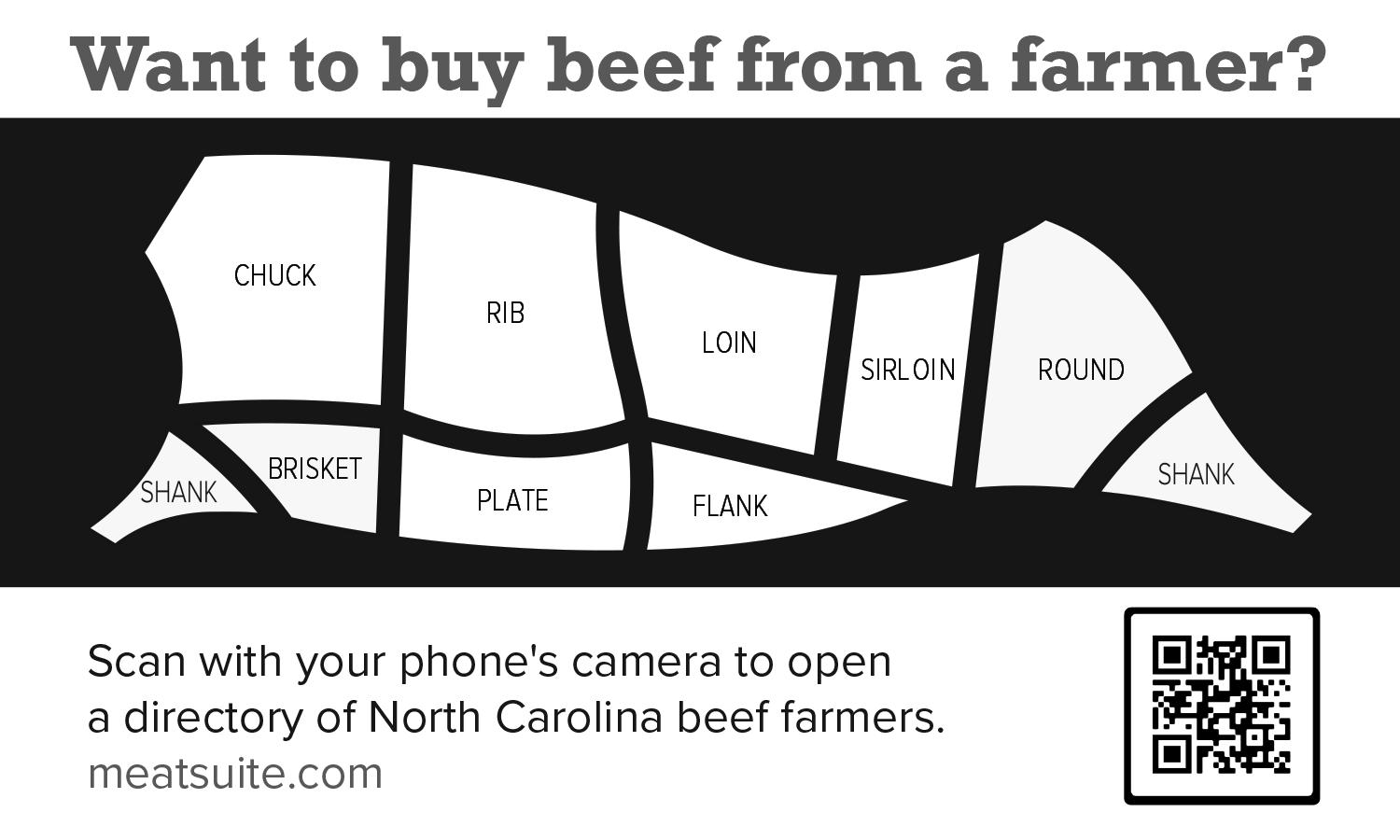
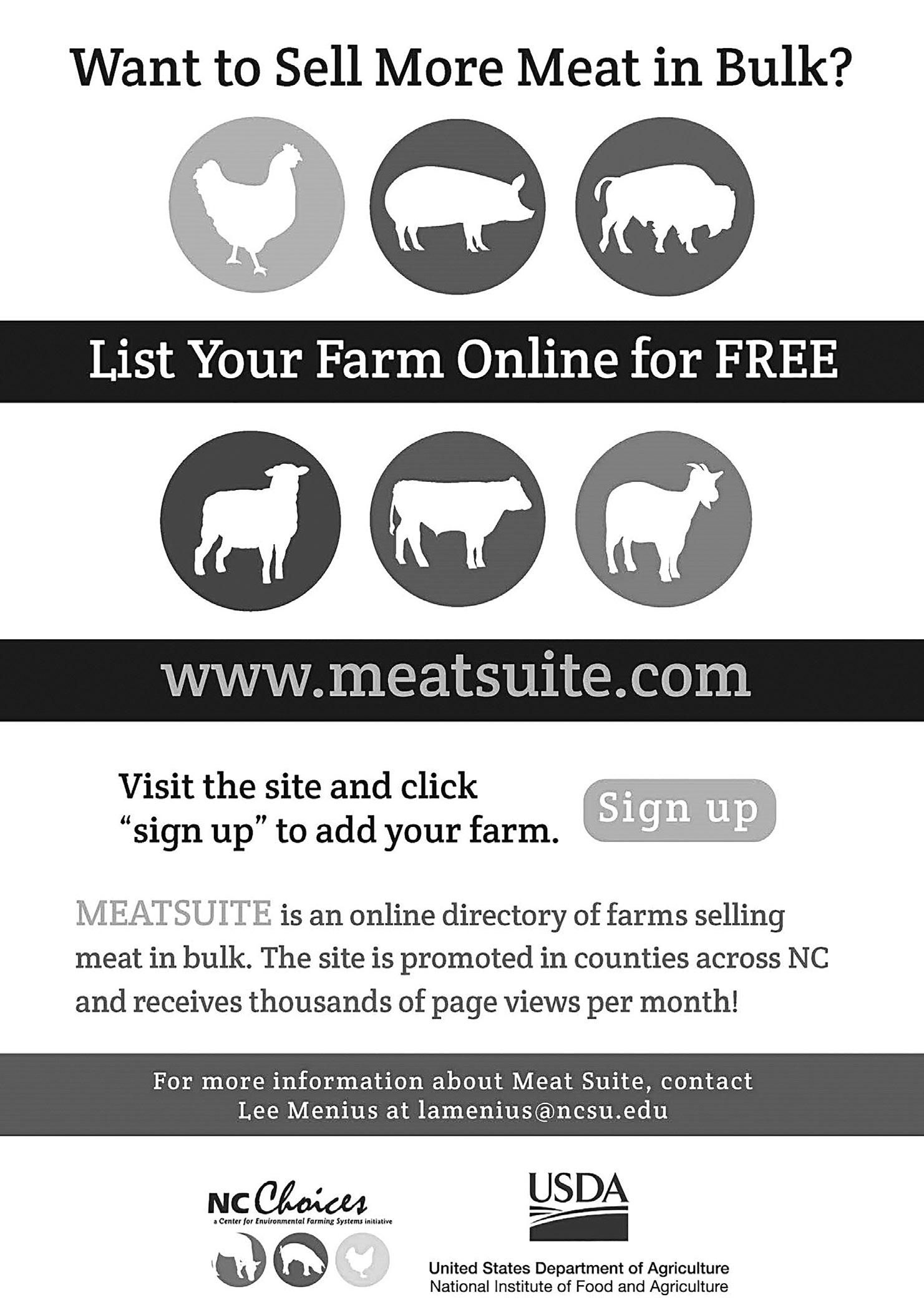
Sundays are usually my day to feed cattle and go to every cow pasture to check things over, and I have a good time doing it. This incident happened a few months ago. I headed out on the feed truck to the farm about six miles from the house to what we call the Walker Hill Farm at Lickskillet.
I usually follow the same pattern each time, which is a good habit as far as it gets the cows in a regular routine. I have been here at the farm at different times, and someone would be coming on the feed truck. When they cross the bridge about a mile before you get to where the cows are, the cows would hear it coming. You would see them throw their heads up and start heading toward the gate where the truck would be coming in.
My first stop is what we call the barn and the working corrals. As I pull in, there are cattle in the pasture on the right and pasture on the left. The last four or five cows to calve are in what we call the cemetery pasture. They originated from the Big Flat herd. We keep them in the cemetery pasture to calve. This pasture is about 30 acres of mostly open land, and it’s easy to check for new calves.
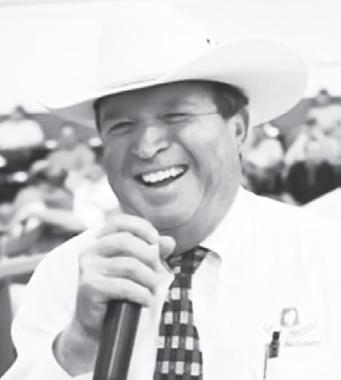
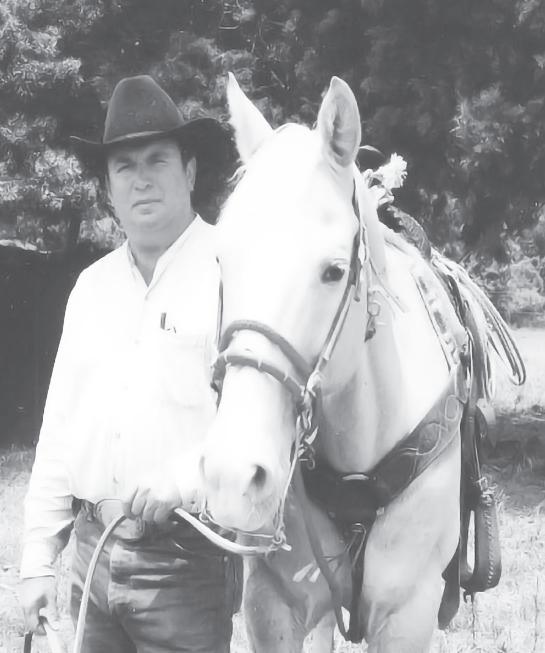
After they calve, we move them to the adjoining pasture known as the Big Flat.
I was going down the path toward the Big Flat herd, and I noticed this BWF cow coming toward the barn. Every now and then, she would stop and look back. I knew that she recently had a set of twins. I was just idling along, taking particular notice of her. Again, she would walk a few steps and look back. I thought she had probably hidden the twins, and she was going on up to the feed bunk and would pick the twins up on the way back. When I got to the Big Flat and was looking at everything over at the feed bunk, I heard a little calf hollering. You can listen to the sound they are hollering about. They are either hungry or misplaced by the tone of the low. When I got back there and looked around, the heifer twin had slipped through the hitensile fence and was over in the Big Flat with that cow herd.
I got to thinking about that thing. I took my time. That cow was not back there, but she was kinda telling me to look for that twin. I had seen the little bull calf lying between the fence to the

cemetery pasture and the Big Flat fence. After about thirty or forty minutes of me opening and closing gates and shutting gates, I got the little heifer calf out of the Big Flat back into the cemetery pasture. Now, mama had already made her way to the barn where they get fed. She saw the little calf coming, so she headed back to see her twin baby that had been astray. After I got it through the gate into the cemetery pasture, she was half way between cemetery pasture and barn, which made it about a quarter mile from the where the little bull calf was.
She greeted the heifer calf. It was hungry, so it went to nursing. The cow was not satisfied with just the heifer calf nursing. She had to work her way back toward the cemetery pasture and get the bull calf up so they both could be fed at the same time. She must have known in her Mother Nature instinct that each one had to feed at the same time so each one would get the right amount of milk. Mother Nature never ceases to amaze me.

“If you have cattle, pastureland, or raise hay like I do, you need to call Donna Byrum. In 10 minutes on the hood of my pickup, she signed me up for a program that I had no idea about. The next time she came by the farm, she brought me a check! ~ E.B. Harris


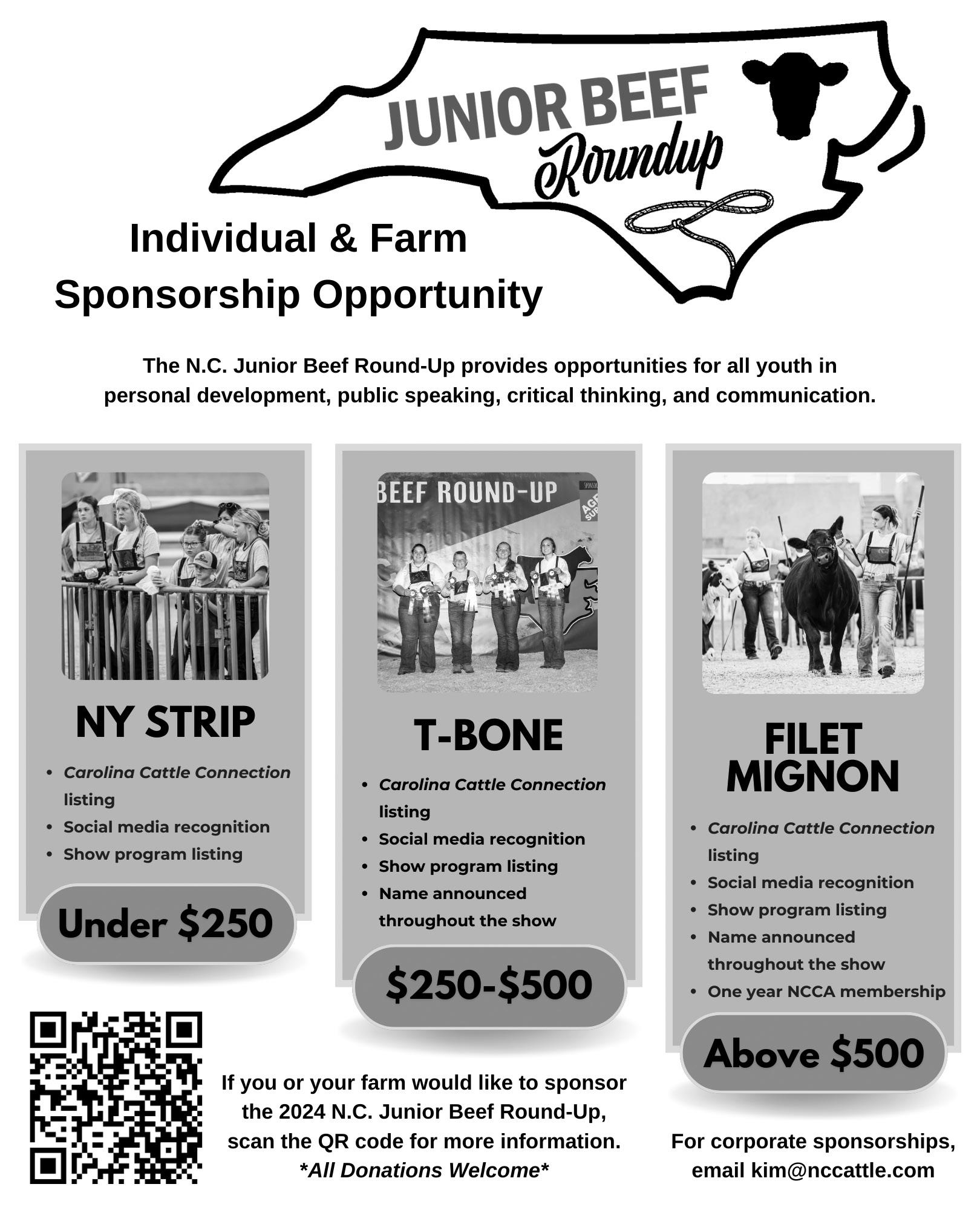

Psalm 94:16-19 - “Who will rise up for me against the evildoers? Or who will stand up for me against the workers of iniquity? Unless the Lord had been my help, my soul had almost dwelt in silence. When I said, my foot slippeth, thy mercy, O Lord, held me up. In the multitude of my thoughts within me, thy comforts delight my soul.”
Help and comfort or fear and anxiety! All four are certainly apparent in this troubled and evil world, but who gets what, when, and how? The adversary sure wants to add to any and all problems,
and if he can add fear and anxiety to our everyday problems, then he will certainly make the most of every opportunity. He also has a bunch of minions to add to the problems, which undoubtedly increases the fear and anxiety. As we see in our text, this is not a modern situation or something that is new to our human existence on this earth.
But as we can see in God’s holy word, the answer for these attacks and problems is from the adversary, his workers of evil, or from our own sinfulness and lack of standing strong against the devil. The
Psalmist clearly reveals the truth in his time, and this truth is still very active and effective in our time and has been throughout the ages. We will fall if we depend on our strength or abilities. And we may fall if we are unprepared for these attacks and merrily chase after the world and its sinfulness. We win only through and by the Lord and His power, strength, and might. We have uncountable amounts of mercy, grace, and love from the Lord, but we certainly need faith and His strength and ability to stand strong during times of attack. And you obtain as you seek, and you retain as you constantly seek, as being prayed up and studied up today will not win the battles of tomorrow.
But, and I mean a big but, you cannot win, you will not receive help, you will not receive comfort, and you are totally defenseless without the Savior and Lord, Jesus Christ. You are alone in this sinful world, and you are on your own; no help, no comfort, no Savior, and no Holy Spirit. Wait just a minute; I am not alone just because I haven’t made a decision one way or the other; I’m on the fence. Folks, Satan owns the fence and everything else in this sinful world except God’s children, and you
are either God’s child or you are not; one or the other, no in-between. And not only does the devil own the world, but he is seeking your soul to keep for himself, or better yet, to destroy, which is very clearly explained in 1 Peter 5:8 - “Be self controlled and alert. Your enemy, the devil, prowls around like a roaring lion looking for someone to devour.” But we have a Savior who responds immediately in the next verses and tells us what to do in 1 Peter 5:9-11 - “ Resist him, standing firm in the faith, because you know that your brothers throughout the world are undergoing the same kind of sufferings. And the God of all grace, who called you to his eternal glory in Christ, after you have suffered a little while, will himself restore you and make you strong, firm, and steadfast. To him be the power forever and ever. Amen.”
You can fight the fight of life alone or with the Savior, but the Psalmist declared that he was not fighting alone; he was depending on the Lord to fight his battles, because the Lord knows how to fight and He knows how to win. What about you? Do you want His help and comfort? Are you ready to win for eternity? God bless you as you choose, in Jesus’s name, Amen.
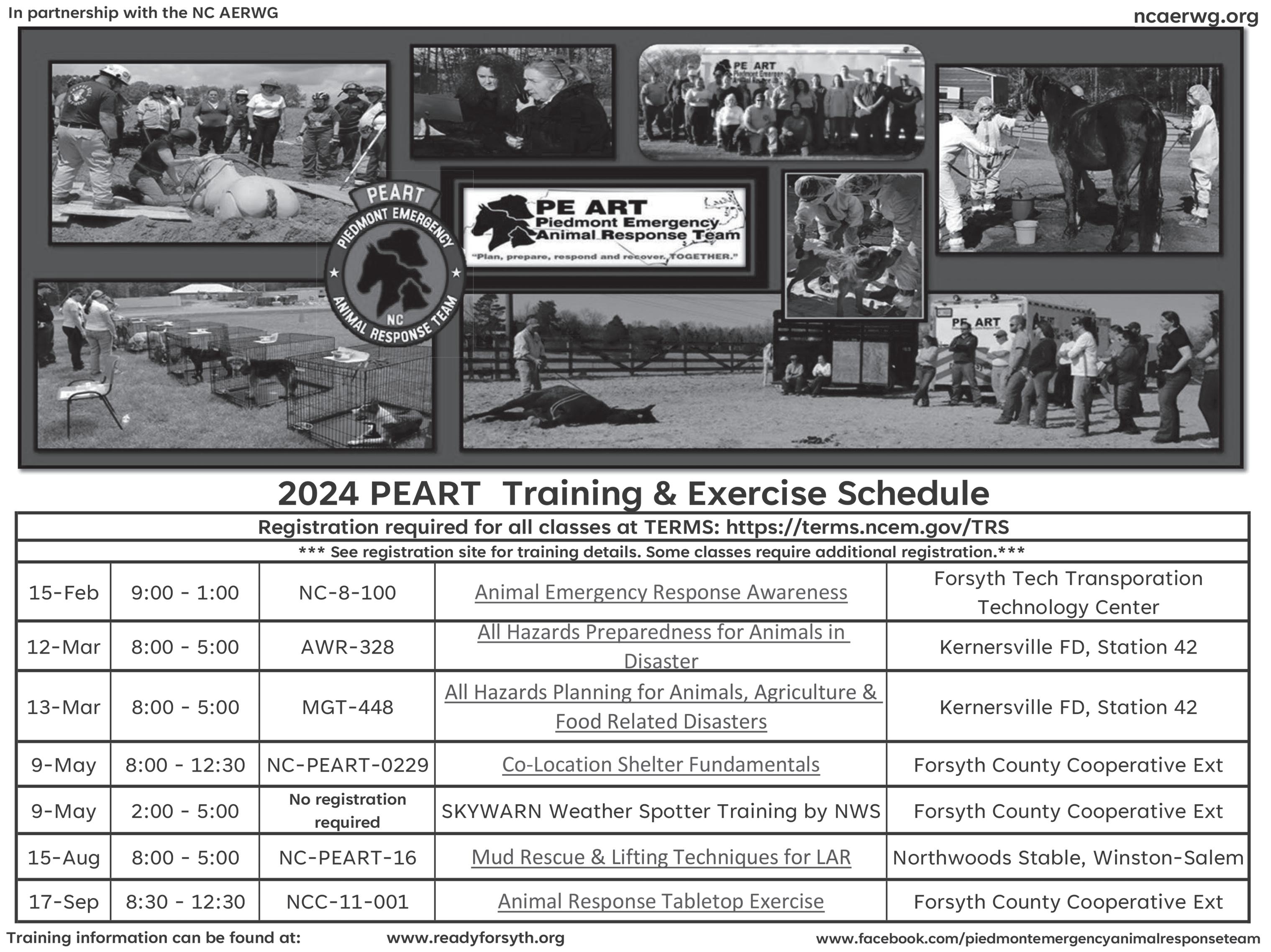
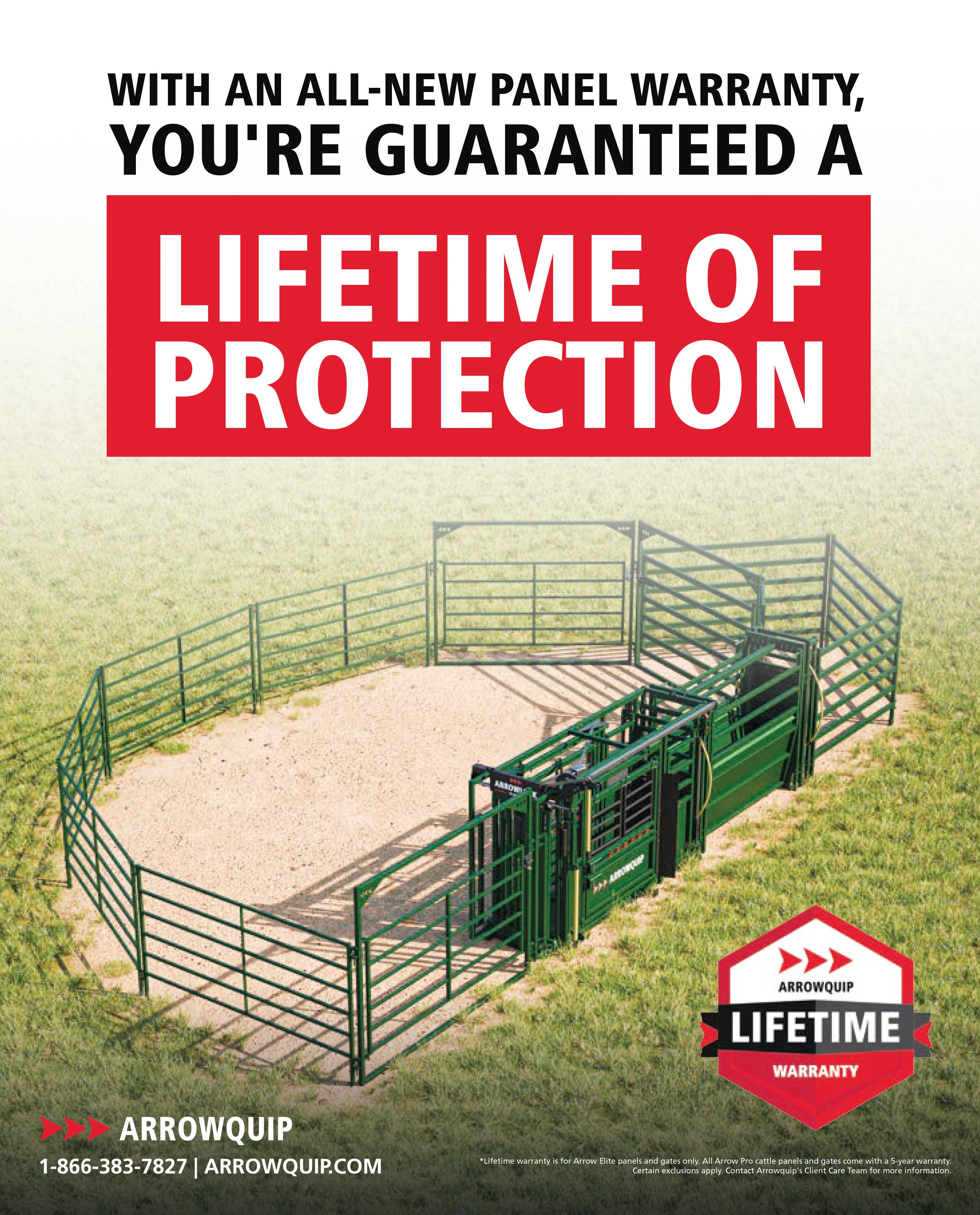
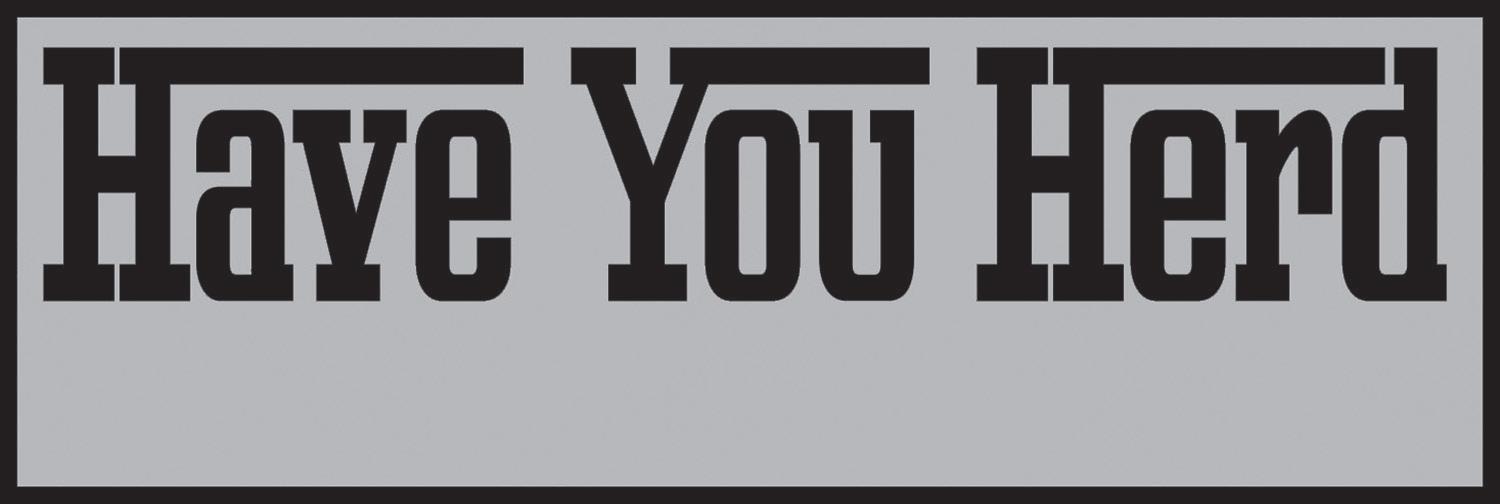 By BROOKE SWEDIN
N.C. State University -- ANS 402 Beef Management
By BROOKE SWEDIN
N.C. State University -- ANS 402 Beef Management
When you hear the term “genetically modified organism,” what do you think of? Some people may think of mutant animals with extra limbs or glowing skin that are dangerous for humans. In reality, many fruits, vegetables, and domestic animals have been genetically modified over thousands of years through selective breeding.3 Humans have bred animals with the goal to emphasize certain traits and eliminate others through selective breeding. The selective breeding process, however, can take years to produce desirable results.3
Recently, biotechnology has expanded to allow for direct genome editing. One tool used for this is the CRISPR/Cas9 system, a protein complex naturally occurring in bacteria. 5 Through the use of CRISPR (Clustered Regularly Interspaced Short Palindromic Repeats), certain genetic traits can be copied from one genome and pasted into another organism’s genetic code. The use of CRISPR for gene editing is still widely experimental, especially in animals. Numerous research teams have applied CRISPR technology to beef cattle,

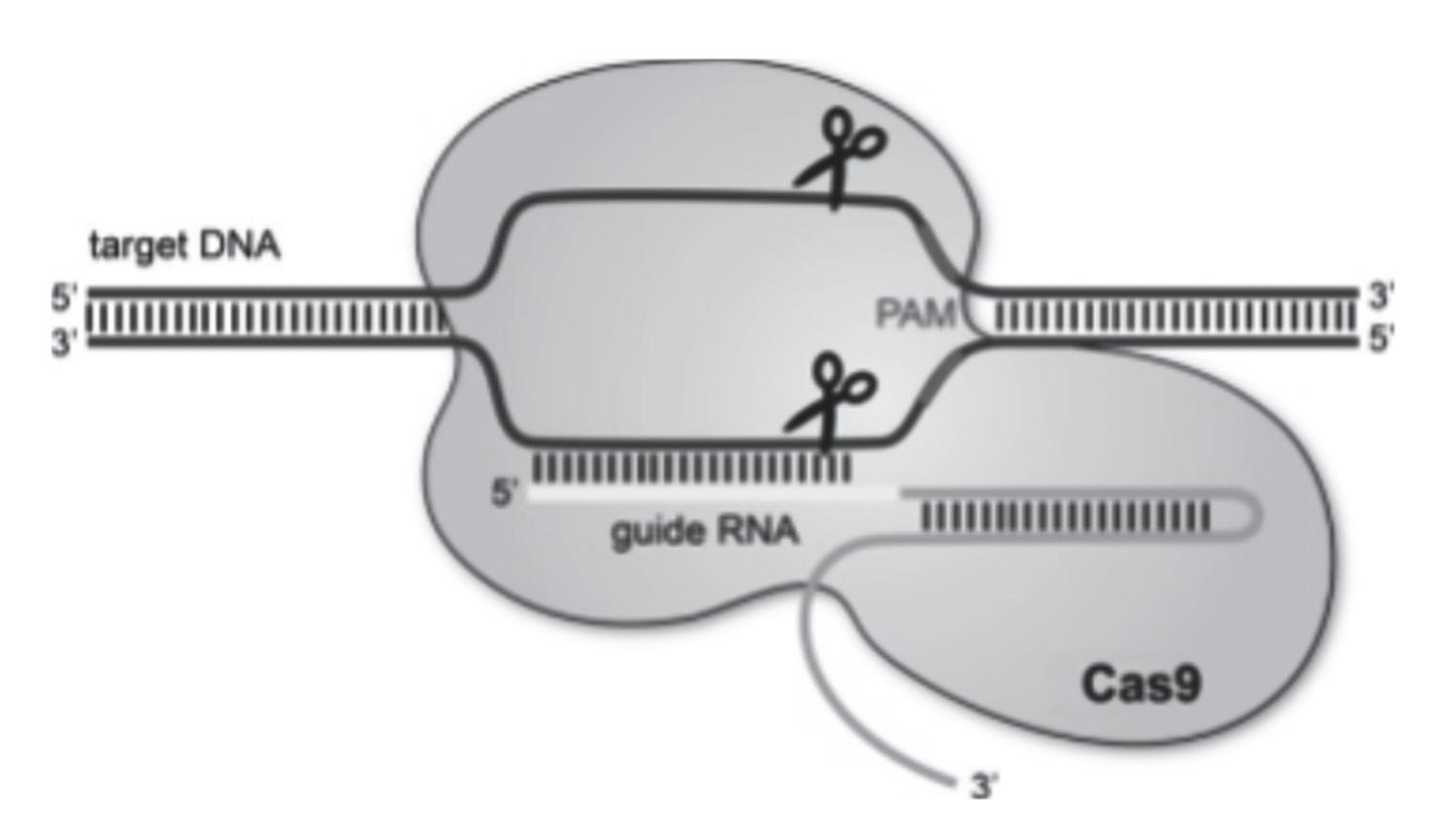
producing larger, disease resistant, and heat tolerant animals.1,2,4

The CRISPR/Cas9 complex is a natural tool used by bacteria to defend against viruses. The Cas9 protein encapsulates a DNA strand corresponding with guide RNA in the protein, allowing for precise targeting along the DNA, as seen in Figure 1. Once Cas9 has surrounded the strand, it makes cuts in the helix’s backbone and removes that portion of DNA.5 The cell then repairs its DNA in one of two ways. One option is non-homologous end joining, where the cell randomly inserts nucleotides into the DNA to fill the gap left by CRISPR.5 This method can cause unwanted results due to its randomness, and it’s very difficult to control. The other method of DNA repair is homology directed repair, where a homologous piece of DNA is used as a repair template. The Cas9 can carry a repair template in its nuclease, giving the cell a map to repair the DNA to exact specifications. 5 The homology directed repair method enables us to directly edit genomes. By inserting specific DNA sequences into the CRISPR/Cas9 nuclease as repair templates, we are able to edit specific cells’ DNA. As the cell divides, the edited genome is spread throughout the body.5 However, there are still many flaws in this technology.5 One fault is that CRISPR requires a vector to carry the Cas9 complex into cells. Historically, researchers have used viruses or plasmids from bacteria, which brings in concerns about transferring unwanted genetic material into cells.5 Offtarget effects from non-homologous end joining are also a large risk. Unintended results caused by random nucleotide repair can lead to health issues such as malignancy, spread of disease, and cell death.5 Despite the challenges that come with CRISPR, scientists in the industry have been exploring the use of this technology to produce more efficient beef cattle.
Alison Van Eenennaam, a researcher at U.C. Davis, attempted to use CRISPR as a
way to create females who only gave birth to phenotypically male calves. 2 Having all male calves would theoretically result in more meat production and better feed efficiency. 2 To achieve this, Eenennaam planned to integrate the SRY gene, which stimulates male development in utero, onto the X chromosome received by every calf from their mother.2 However, Eenennaam’s goal came with many challenges; CRISPR disables key developmental genes in embryos, and the team needed to transfer SRY into chromosome 17 instead to produce viable embryos at all.2 Incorporation of green fluorescent protein (GFP) from jellyfish with the SRY gene was necessary to reduce embryo damage, but it meant that any cattle produced were transgenic organisms. 2 Eventually, one successful pregnancy carried to term. Cosmo, the first and only calf from the “All Boys” project, was genetically male. Even though he already had the SRY gene on his Y chromosome, testing revealed that chromosome 17 also contained the SRY gene. Up to seventeen copies, to be exact. The team also found parts of the bacterial plasmid’s DNA and random repairs incorporated into Cosmo’s genome.2 The use of CRISPR wasn’t flawless, but Eenennaam’s research acts as a key stepping stone for future CRISPR usage in cattle.
In 2017, another research team used CRISPR to create cattle with increased resistance to Mycobacterium bovis, the bacteria causing bovine tuberculosis. 1 This was accomplished by inserting natural resistance associated macrophage protein-1 (NRAMP1), a protein from fetal fibroblast cells that limits the replication of M. bovis into embryos. 1 To avoid chaotic non-homologous end joining, the team used Cas9 to “nick” (not fully cut) the DNA. This method seemed to be successful; NRAMP1 was not found in other tissues, and the resulting cells had few mutations. 1 The research team
produced nine healthy animals, all of whom showed increased resistance to bovine tuberculosis when exposed, as seen in Figure 2. However, since NRAMP1 came from a different organism than the bovine species, these cattle are also transgenic. This designation prevents the animal from being sold for human consumption by the FDA.2 If cattle with modified DNA can’t be sold for human consumption, then they aren’t beneficial for the beef industry. Despite these government limitations, there is still a possibility that CRISPR technology can produce marketable cattle.
As of 2020, the FDA approved a line of genetically engineered beef cattle. The PRLR-SLICK line, developed by Acceligen, has a gene that produces a short, slick coat 4 that isn’t just for looks. This coat gives PRLR-SLICK cattle a higher heat tolerance, which is especially important for operations in more temperate climates. This, in turn, increases feed efficiency by reducing wasted energy, saving operations thousands in the long run.4 The slick coat gene was incorporated with CRISPR, just like other projects, and will be passed down through generations of offspring in the same way that innate genes do.4 What makes PRLR-SLICK cattle different from other CRISPR modified cattle? The gene that generates this slick coat does not come from another species; it’s a naturally occurring mutation in bovine DNA.4 As a result, the FDA designated PRLR-SLICK cattle as low risk. There are no food safety concerns surrounding the gene alteration because these cattle aren’t transgenic. Even though the PRLR-
SLICK cattle are genetically modified organisms, they can officially be sold as food animals. 4 Since the line has been approved by the FDA, PRLR-SLICK cattle products may hit grocery store shelves in the near future.
While the technology is still young, genetic editing with the CRISPR is making its way into the beef cattle industry. Its benefits, like more precise trait selection and faster herd improvement, shouldn’t be overlooked. However, major flaws in the use of the protein complex need to be overcome before widespread CRISPR application in food animals becomes a reality.
Sources
1Gao, Y., Wu, H., Wang, Y., Liu, X., Chen, L., Li, Q., Cui, C., Liu, X., Zhang, J., & Zhang, Y. “Single Cas9 nickase induced generation of NRAMP1 knockin cattle with reduced off-target effects.” (2017) doi. org/10.1186/s13059-016-1144-4
2Molteni, M. “A Crispr Calf Is Born. It’s Definitely a Boy.” (2020) www.wired.com
3 National Geographic Society. Genetically Modified Organisms. (2023) education.nationalgeographic.org
4Ostendorf, M. “What are the PRLRSLICK cattle?” (2022) www.agriculture.com
5Redman, M., King, A., Watson, C., & King, D. “What is CRISPR/Cas9?” (2016) doi.org/10.1136/archdischild-2016-310459
Have You Herd is written as a portion of the ANS 402 Beef Management course requirement at N.C. State University Department of Animal Science under the instruction of Dr. Carrie Pickworth. The opinions of Brooke Swedin are not necessarily those of N.C. State University or Dr. Carrie Pickworth.
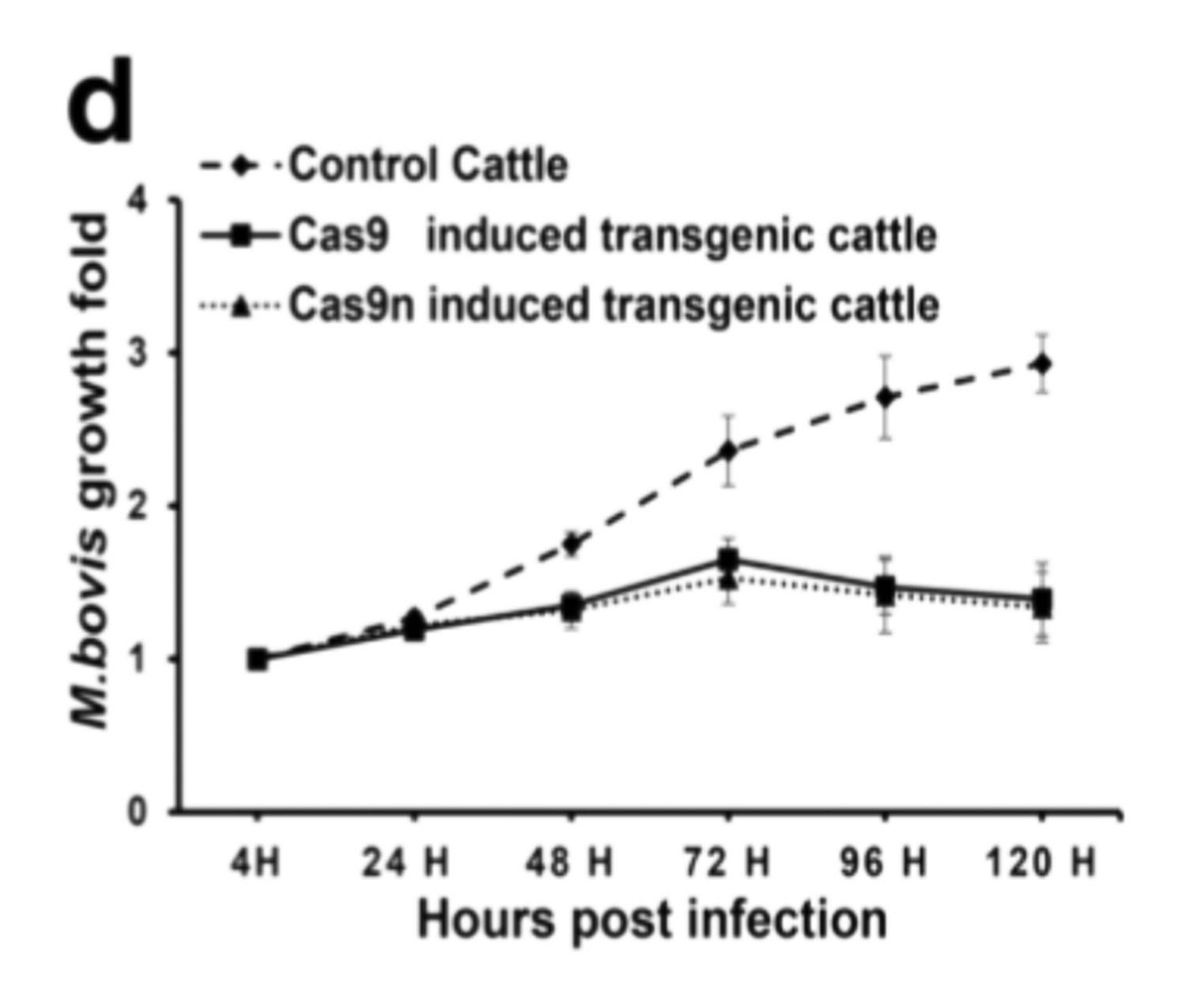
2. Graph depicting the limitation of M. bovis growth in non-transgenic versus transgenic cattle. The transgenic cattle lines show a clear decrease in M. bovis growth after 72 hours post infection.1
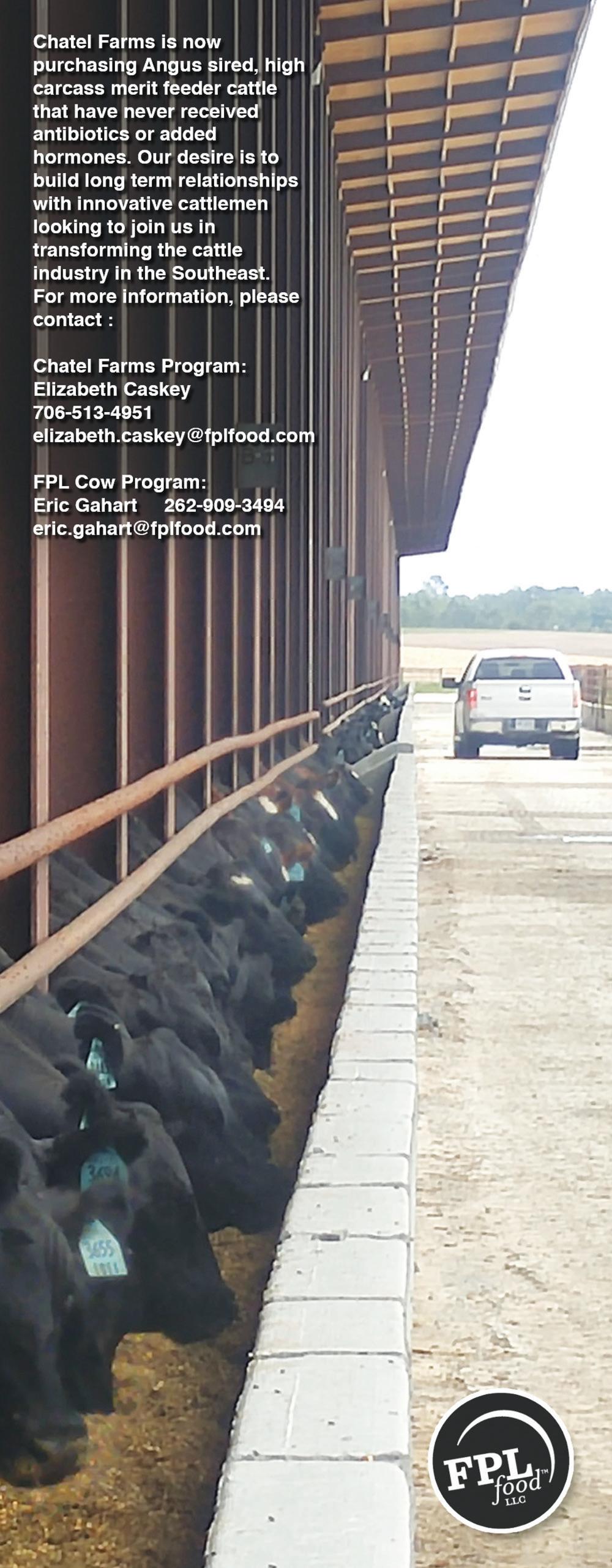
You Decide: Do International Investments Help or Harm? Recently, the Japanese Prime Minister visited North Carolina to celebrate a major new investment in our state by a Japanese biotechnology company that will spend over a billion dollars and create several hundred permanent jobs.
Such international investments aren’t new for North Carolina, which recently ranked ninth among the 50 states in direct foreign investment, tied with Texas and ahead of our surrounding states except for South Carolina.
Of course, when we think of any investment, we first think of jobs and salaries. This is a big reason why states and localities seek out foreign investors. But are there any downsides
to foreign investments that make them fundamentally different from investments by domestic companies?
Before I address possible downsides to foreign investments, let me address the upsides. Jobs and salaries are certainly one upside, especially if the salaries are higher than that of existing jobs. But the new jobs and salaries don’t stop with the foreign investment. If foreign investment is significant, supplier firms will likely also develop, and each of these companies brings their own jobs and payroll. Furthermore, since total local salaries are increased, local spending on typical consumer products will increase, as will jobs at the retailers.
When these two secondary impacts — from supplier firms and consumer
firms — are included, the total job and salary gains could ultimately be 2550 percent higher than from the initial foreign investment.
The new foreign investment will also pay taxes to the state and local governments. It is true that large business investments — whether from foreign or domestic sources — sometimes receive incentives that lower their tax payments. However, North Carolina’s incentives program is structured so that both the state and local governments can still come out ahead on taxes even after the incentives are subtracted.
Large foreign investments can lead to skill improvements for local workers. With technology being part of an increasing number of jobs, workers will often need special training to take new positions. North Carolina is lucky to have superb local community colleges that, if needed, will design specialized training programs to fit the new jobs. Of course, the same kind of skill and training improvements can result from domestic investments.
For decades, the U.S. has run a deficit in international trade. This means we purchase more products and services from foreign countries than we sell
products and services to them. Some economists worry that such deficits can lead to a lower valued dollar.
However, the trade deficit will decline if a foreign owned company selling to U.S. consumers moves its manufacturing from its home country to the United States. Why? Because a significant part of the product’s sales value will go to U.S. workers and U.S. suppliers. If the product was made in another country, most of the salaries would go to workers in that country, as would a large part of the suppliers’ costs.
There can also be more intangible benefits from foreign investment. Some say the investments improve understanding between the U.S. and foreign countries. Others say the investments can reduce the likelihood of conflicts between the two countries. The idea is that foreign countries having investments in another country have a financial interest in seeing that country survive.
Now, let’s move to the potential negative side of foreign investments. Probably at the top of the list is the issue of control. Foreign companies are usually owned by a majority of foreign individuals. One disadvantage from the

perspective of the host country is that it’s likely most of the profits flow outside the host country. Japanese companies investing in North Carolina have Japanese owners who will receive the profits from the investment. Of course, this is what would be expected, but the point is it means that less money from the investments stays in the United States.
Another cited disadvantage may be cultural differences. Countries usually have distinct cultures that can include expected behaviors and attitudes about work. If these differences aren’t known and considered, problems can develop between the foreign owner and the domestic management and workers. However, with increased understanding of different cultures, this issue is likely not as common as in the past.
A related potential disadvantage — and I emphasize potential disadvantage — is that with foreign owners making decisions about the company, the question is whether some of those decisions could be detrimental to U.S. interests. This is particularly the case for countries that have distinct geopolitical differences with the U.S., such as China. Would a country like China be motivated to use their U.S. based companies to gain information or to use the companies to hurt the U.S. in times of conflict between the countries?
Finally, there is some worry that foreign ownership of a new investment in the U.S. may simply displace a domestic owner. While this may be true, there’s never a certainty. For example, North Carolina tried for decades to attract an auto manufacturer, including domestic manufacturers. But it never happened. It was, therefore, understandable that when foreign owned VinFast expressed interest, the state jumped at it. But there’s the lingering question of whether a domestic owned auto manufacturer ultimately could have come to North Carolina.
Like almost everything, there are pluses and minuses to foreign investments. However, given the eagerness of states to lure foreign based investors, the perceived benefits appear to exceed the perceived costs. But, you decide.
You Decide: Is ‘Greedflation’ Keeping Prices High? Although the pace at which prices are rising has moderated, prices are still going up. In 2021, average consumer prices surged 7 percent; in 2022, they jumped 6.5 percent; in 2023, prices went up a more tolerable 3.4 percent, and the latest reading for 2024 shows consumer prices are up 3.5 percent from the same period in 2023. Cumulatively, this puts prices up over 20 percent since 2021.
As long as consumers’ financial
resources increase at the same or a higher rate than price inflation, then there’s no loss of purchasing power. But most people know this hasn’t happened. Indeed, from 2021 to now, the average consumer’s purchasing power is off by 5 percent.
I mention these statistics to show that inflation is still a problem, which is something most people know. The next question is, why is inflation still a continuing issue?
When inflation began its spurt in 2021, there was an easy reason — consumers were trying to buy more than sellers had to offer. Consumers were flush with cash as a result of the COVID-19 relief programs enacted in both 2020 and 2021. These programs culminated in $6.5 trillion being rapidly pushed into the economy. Initially, there were few buying opportunities as large parts of the economy had not yet reopened.
When consumers were able to buy, they had what economists call ‘pent up demand’ — meaning they wanted to buy a lot! Typically, this wouldn’t have been a problem, but there was another issue that had emerged: supply chain problems. So, in short, consumers wanted to really buy, but many of the shelves were bare. In this situation, it was inevitable prices would rise substantially, which they did.
But today, consumers have spent most of the COVID-19 money, and the supply chain has mostly been fixed. Yet inflation is running hotter than the 1.8 percent in 2019, before the pandemic. With inflation now at a rate of 3.5 percent, the question is why isn’t it closer to its pre-COVID-19 level.
There are a couple of potential reasons. One is strong economic growth. The economy in 2023 was as strong as it was in 2019, before the pandemic. Economic growth rates in the periods were virtually the same. Job growth has also been solid, with salaries from new jobs giving consumers more spending power. Even some sectors that were slowing have come back. Manufacturing is a good example. For almost a year, manufacturing activity has been declining. But in the last two months, the manufacturing sector has revived.
The point is that, even with the supply chain fixed, more consumer spending can put a limit on how much inflation can be curtained. And we continue to see solid gains in consumer spending.
There are some economists who argue the Federal Reserve didn’t raise interest rates enough to provide the necessary cooling in consumer spending that would have moderated inflation faster. Of course, the Fed has to balance aggressive interest rate hikes to combat
inflation against the possibility such actions may result in a recession.
The last reason I will discuss is taken from the title of today’s column. This is whether businesses are purposely keeping prices high to boost profits. This kind of action is called “greedflation.”
Before addressing the question, let me step back and talk about a business’s ability to set prices. I learned about prices in academia, but I also had hands-on training at a retail furniture store where I worked for seven years. Any business wants to maximize its profits, which is the difference between revenues and costs. You would think an obvious way to increase profits is to simply increase the price of what the business sells. For a furniture store, this would mean increasing the prices of sofas, chairs, dining room tables, beds, etc. If there was no change in what the furniture retailer paid for the products, then increasing the price of items for sale would boost profits.
But there’s a problem with this logic. If furniture retailer A increases its prices, but furniture retailer B doesn’t, then what’s to prevent people who were ready to buy from A to instead buy from B? Losing customers reduces sales and lowers profits.
Business owners know this. The furniture company I worked at would sell from their inventory because customers generally wanted their furniture soon. Worse than selling at a low price and making a low profit was to not sell and
make no profit. This is why my boss would often send me to rival stores to check their prices — remember, this was 50 years ago before computers and websites. It’s the realization that customers have options that ultimately keep prices under control.
Of course, if the furniture retailer finds it has to pay more to the manufacturers of the furniture it sells, then the retailer will likely increase its prices. This happened during the supplychain problems caused by COVID-19. But as prices for many inputs have come down — although not all the way to preCOVID-19 levels — retail prices have followed.
Hence, to claim that uncontrolled greed is causing retailers to continually push up prices goes against the reality of how prices are set in competitive markets, which dominate our economy.
A way to directly investigate if “greed inflation” is at work is to look at profit rates. The profit rate is simply the percentage of a company’s revenues that are profit. Today’s profit rates are in line with their historical average of the last 40 years, nearly 4 percent. Interestingly, profit rates were higher during the previous 40 years, between 1940 and 1980. The reason is likely the increased international trade, which has brought more competition.
There are several reasons why prices are still higher than we would like. But is “greedflation” one of them? You decide.



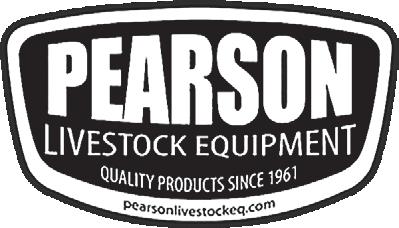
 By CORTNEY HOLSHOUSER, NCAA Executive Secretary
By CORTNEY HOLSHOUSER, NCAA Executive Secretary
The 40th Annual N.C. Angus Spring Fever Sale was held on April 27 at the Shuffler Farm Sale facility in Union Grove, North Carolina. It was a beautiful morning for potential buyers to view the cattle and evaluate the 77 live and frozen lots sold. The sale was a huge success, grossing $272,225 with an average of just over $4,537 on the 60 live lots. The sale was managed by Zach Moffitt Cattle Marketing & Consulting of Concord, North Carolina.
The consignors, along with Zach,
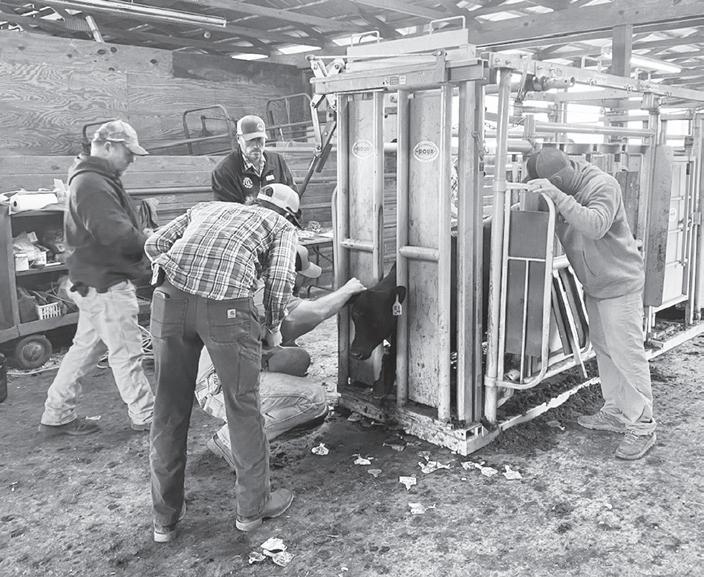
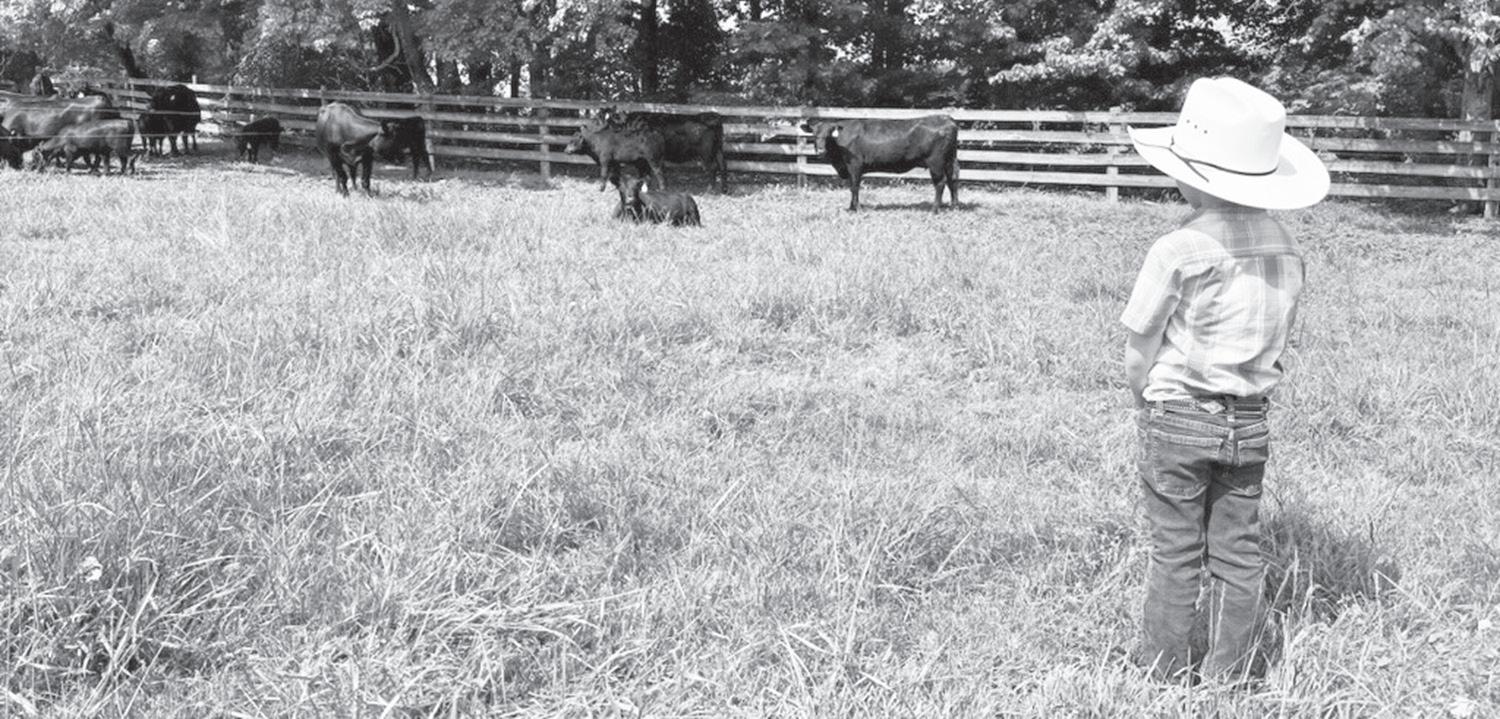
worked hard showcasing the females before and during the sale. The offering included fall cow/calf pairs, spring cow/calf pairs, bred cows, bred heifers, open heifers, N.C. Angus Elite heifers and show heifer prospects, as well as embryos. Consignors for this year included Black Cedar Angus, Chapman Cattle Company, Cox & Collier, McCarter Family Farms, English Farms, Goddard Family Farms, Goforth Angus, Haws Farms, Hill Angus Farm, J2 Cattle Farm, Legacy at Pine Hill Farm, Lucas Farm, Mill Creek Cattle Company, Ruckus Hill Farms – Smith, RWN Ag Enterprises, S&H Poultry, S&J Farms, Scarlett Farms, Shade Tree Farm, Shelton Angus Farm, Shuffler Farm, Simpsons Angus Farm, Triple LLL Angus, and Windy Hill Farms LLC. Several visitors came out on Friday afternoon to view the cattle, and lots more arrived early on Saturday morning. Between the crowd and the internet viewers, the sale reached bidders and buyers all over the country. The sale arena was full as Colonel Will Thompson kicked off the auction at noon.
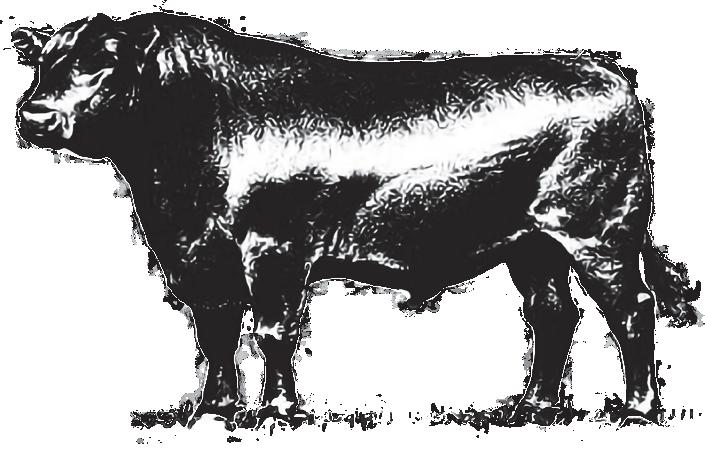
Thank you to the N.C. Junior Angus Association for preparing a wonderful lunch of chili with all of the fixings and banana pudding. Two cakes, a layered caramel cake and a blackberry wine cake, were auctioned for the juniors ahead of the sale. Terry Brown of Concord graciously purchased the first cake and donated it back to be auctioned again. Nichole Carpenter and Carson Family Farm purchased the two cakes.
The N.C. Angus Auxiliary once again decorated the sale ring with beautiful flowers from Blake Farms. They were auctioned before the sale to raise money for the Auxiliary’s projects. Thank you
to Zach Moffitt, Rick Ankrum, and Kevin Byerly for purchasing these. We appreciate the working partnership we have with these two groups.

The high selling lot in the 2024 Spring Fever Sale was Lot 2, WHS Growth Fund Burgess J2, consigned by Shelton Angus Farm of Gretna, Virginia. J2 is a first calf heifer sired by Deer Valley Growth Fund and a full sister to the Alta Genetics Roster member WHS Capital. She has a weaning ratio of 121 and a yearling ratio of 115. She ranks high for WW, YW, SC, CEM, Milk, Claw, Angle, HS, CW, $W, and $F. She is bred to calve in October to HPCA Veracious. J2 was sold to Eric Bray of Stars Peak Farm in Jonesville, N.C., for $8,500. She came to town with a GB Fireball heifer on her side that will have improved carcass traits. The calf sold for $6,000 to Mark

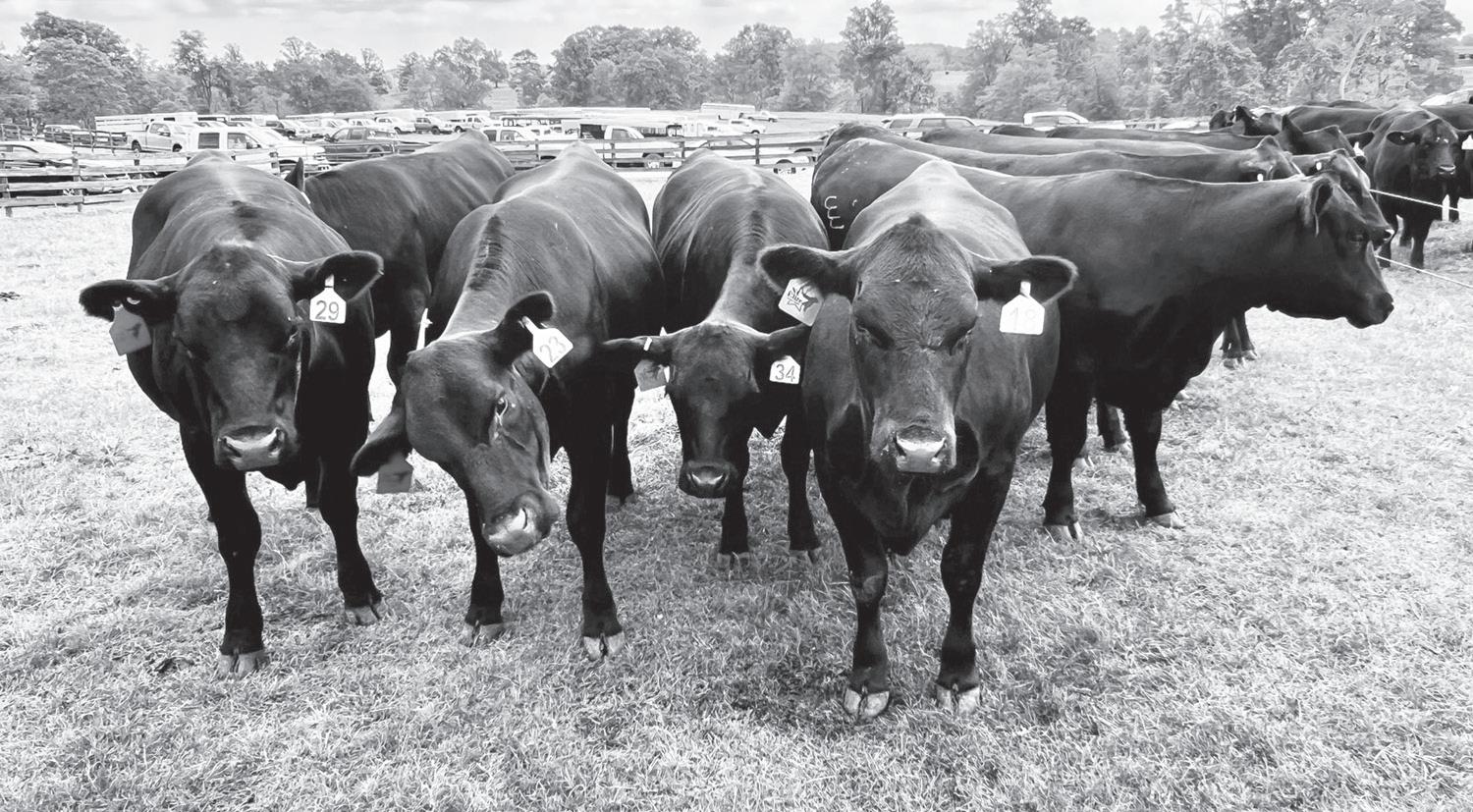
Tucker of Chatham, Virginia.
The N.C. Angus Elite Heifers were a sale feature once again. To qualify for the Elite Heifer status, the females must meet a stringent set of performance and breeding guidelines. The consignors continue to make the extra effort to have their top quality heifers meet the standards, and this year, ten of the bred heifer consignments were designated Elite. The N.C. Elite Heifers sold for an average of $4,450. Lot 18, WHS Thedford Lass 3K, was the high selling N.C. Elite Heifer at $6,000. She is a Hoffman Thedford daughter bred to the popular KA Kindred, consigned by Shelton Angus Farm. The 909 Ranch in Statesville, N.C., purchased Lot 18. Other N.C. Angus Elite Heifer consignors included Chapman Cattle Company, Windy Hill Farms, Black Cedar Angus, and Scarlett Farms.
The high selling bred heifer in this year’s sale was Lot 21, Chapmans – BBA Blackcap 216, a Deer Valley Optimum 9246 daughter consigned by Chapman Cattle Company and Butcher Branch Land and Cattle. She is bred to Connealy
Craftsman. She was purchased by Brian Owens of Thomasville, N.C., for $7,250. In total, 19 bred heifers sold for $88,750 for an average of $4,671.
Once again, there was a strong set of fall bred cows with big, stout calves. The top fall pair was Lot 2 and 2A, consigned by Shelton Angus Farm. Lot 2, WHS Growth Fund Burgess J2, was a daughter of Deer Valley Growth Fund with GAR Sure Fire on her maternal side. The cow was bred to HPCA Veracious for a fall calf. She sold to Eric Bray for $8,500. Her September heifer calf, WHS Fireball Burgess 25L, sired by GB Fireball672, sold to Mark Tucker for $6,000. Another Fall pair standout was Lot 6, Lucas Lady Know How M044S, consigned by Lucas Farm. The cow sold to Grant Miller for $4,500. Rickie Johnston selected the fancy heifer calf at side for $4,250. She is a daughter of Musgrave 316 Exclusive. The 12 fall cow/calf pairs sold for an average of $7,329.
The spring cow/calf pairs also sold
Continued on the next page

Backed by the world’s largest and most reliable genetic evaluation program.
Registered Angus genetics deliver better calving ease, more growth, and superior marbling.
4K FARMS
Richard D. Kirkman, DVM Siler City 919-742-5500 • rdkirkman@spectrum.net
BACK CREEK
Joe & Robin Hampton Mt. Ulla 704-880-2488 (Joe); 704-880-3572 (Robin) robinbackcreek@att.net
Facebook: Back Creek Angus
BILTMORE ESTATE
Kyle Mayberry - Manager Asheville 828-768-1956 • livestock@biltmore.com www.biltmorelivestock.com
CARSON FAMILY FARM, LLC
John, Callie, Isaac & J.R. Carson Laurel Springs 336-818-9087 • carsonfamilyfarm@gmail.com
CHAPMAN CATTLE COMPANY
Bryant Chapman Taylorsville 828-514-0526 https://.m.facebook.com/chapmancattleco
FOUR S FARMS
Kim & Connie and Jason & Robin Starnes Luther Lyerly - Manager Salisbury 704-640-5875 • kim-4sfarms@carolina.rr.com
GENTRY HOMEPLACE ANGUS
Howard & Donna Gentry King 336-413-6698 • whgentry@windstream.net
GRAGG FARMS
Paul, Chris & David Gragg Boone 828-268-4136 (Paul); 828-268-4137 (Chris) 828-268-4135 (David) gragg_farms@hotmail.com
H&H FARMS
Buddy & Jennifer Hamrick - Owners Bly Hamrick - Manager Boiling Springs 704-472-1912 • jennham@bellsouth.net
HI-LO FARMS, LLC
William “Monty” & Kate Reichert Fuquay-Varina 919-717-1903
HILL ANGUS FARM
Dr. Gary M. Hill Hendersonville 229-848-3695 • gmhill@uga.edu
Cortney Holshouser
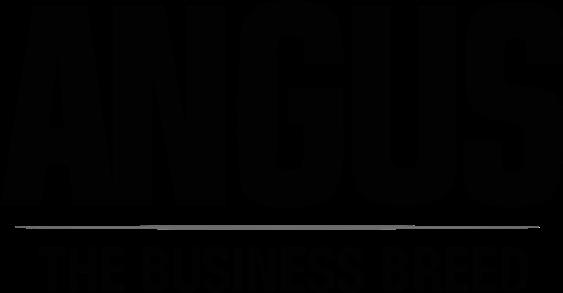

JACK KNOB FARMS
Karl, Janet & Logan Gillespie Franklin 828-371-2220 • karl@jackknobfarms.com www.jackknobfarms.com
JENKINS ANGUS FARM Jaime & Christy Jenkins Marshall 828-206-1345 • jenkinsangusfarm@gmail.com
KNOLL CREST FARM The Bennett Family Red House, VA 434-376-3567 • knollcrestfarm@knollcrestfarm.com www.knollcrestfarm.com
LANE ANGUS
Roger & Bundy Lane Bundy Lane - Manager Gates 252-398-7705 (Bundy); 252-398-7719 (Miranda) 252-357-1279 (Office) bundylane@hughes.net; laneangusbeef@gmail.com www.laneangusbeef.com
N.C. State University - E. Carroll Joyner Beef Unit Matt Morrison - Manager Raleigh 716-720-0227 • mdmorri8@ncsu.edu
PANTHER CREEK FARMS
John C. Smith, Jr. Pink Hill 252-526-1929 • johnsmith3982@embarqmail.com
S&J Farms
Steven & Julie Lung Nathan Lung - Manager Carthage 910-947-3414 • sandjfarms2013@gmail.com
SMITH CREEK ANGUS FARM Marty & Lynne Rooker Norlina 252-213-1553 • mrooker@mrookerlaw.com
SPRINGFIELD ANGUS Phil Goodson Louisburg 919-880-9062 • philgoodson2@gmail.com www.springfieldangus.com
TRIPLE LLL ANGUS Greg Little Monroe 704-219-1294 • greg.little@atimetals.com
VANDEMARK ANGUS Keaton & Janie Vandemark Spring Hope 252-885-0210 • keaton@vandemarkfarms.com
WINDY HILL FARMS, LLC Michael A. Moss Will Moss - Manager Ramseur 336-460-7451 • windyhillfarmsllc@gmail.com
WINSLOW GENETICS Ben & Kathleen Winslow Halifax 252-578-5487 • bensbulls@gmail.com
WOOD ANGUS FARM, LLC Russell Wood Willow Spring 919-275-4397 • rwood4400@gmail.com www.woodangus.com


There was a big crowd on hand for the sale, and bidding was in full swing.
well. The high selling spring pair was EWA 086 of 8306 Phoenix, consigned by McCarter Family Farms. She is a GAR Phoenix and sold with a heifer calf at side by E&B Wildcat. She sold to Andy Anders for $6,250. The six spring cow/ calf pairs averaged $5,000. Additionally, six bred cows averaged $4,250.
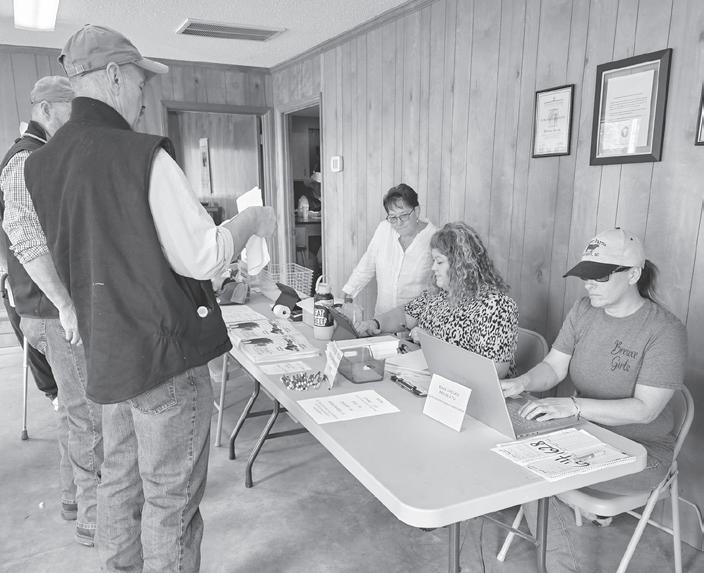
The ladies at the clerking table kept things running smoothly.
The frozen lots also made a positive impact on the sale. Lot 59, three IVF embryos by BNWZ Validity 2491 and Biltmore Erica 14G, was the high selling embryo lot at $2,250. The embryos sold to Goforth Angus. The 18 embryos averaged $579.
The top selling open heifer was HAF
Rita GF CCR 593, consigned by Hill Angus Farm. She is a September 2023 heifer sired by Connealy Craftsman. She sold to 3J Angus in Shelby, N.C., for $4,250. In total, eleven open heifers sold for an average of $2,691.
Volume buyers were Andy Anders with AM–PM Farms in Fountain Inn, S.C., Rick Ankrum of 909 Ranch in Statesville, N.C., Brian Owens of Thomasville, N.C., and Brian High of Taylorsville, North Carolina. CCi.LIVE hosted the sale online. Cattle and embryos sold into North Carolina, South Carolina, Virginia, Arkansas, and Texas. Thank you to all the buyers who bid and purchased from the sale.
We had a great sale day crew again this year. Thanks to Joe Hampton, Neil Bowman, and Bryan Blinson for serving as ringmen. A special thank you to Alicia Brenseke, Teresa Swisher, and Christy Perdue for helping to clerk the sale. Also, thank you to the Spring Fever Sale Committee, especially Brent Scarlett and Michael Jensen, and to Colonel Will Thompson and Zach Moffitt for making the sale a success.
We look forward to seeing everyone again next spring for the 41 st Annual Spring Fever Sale.
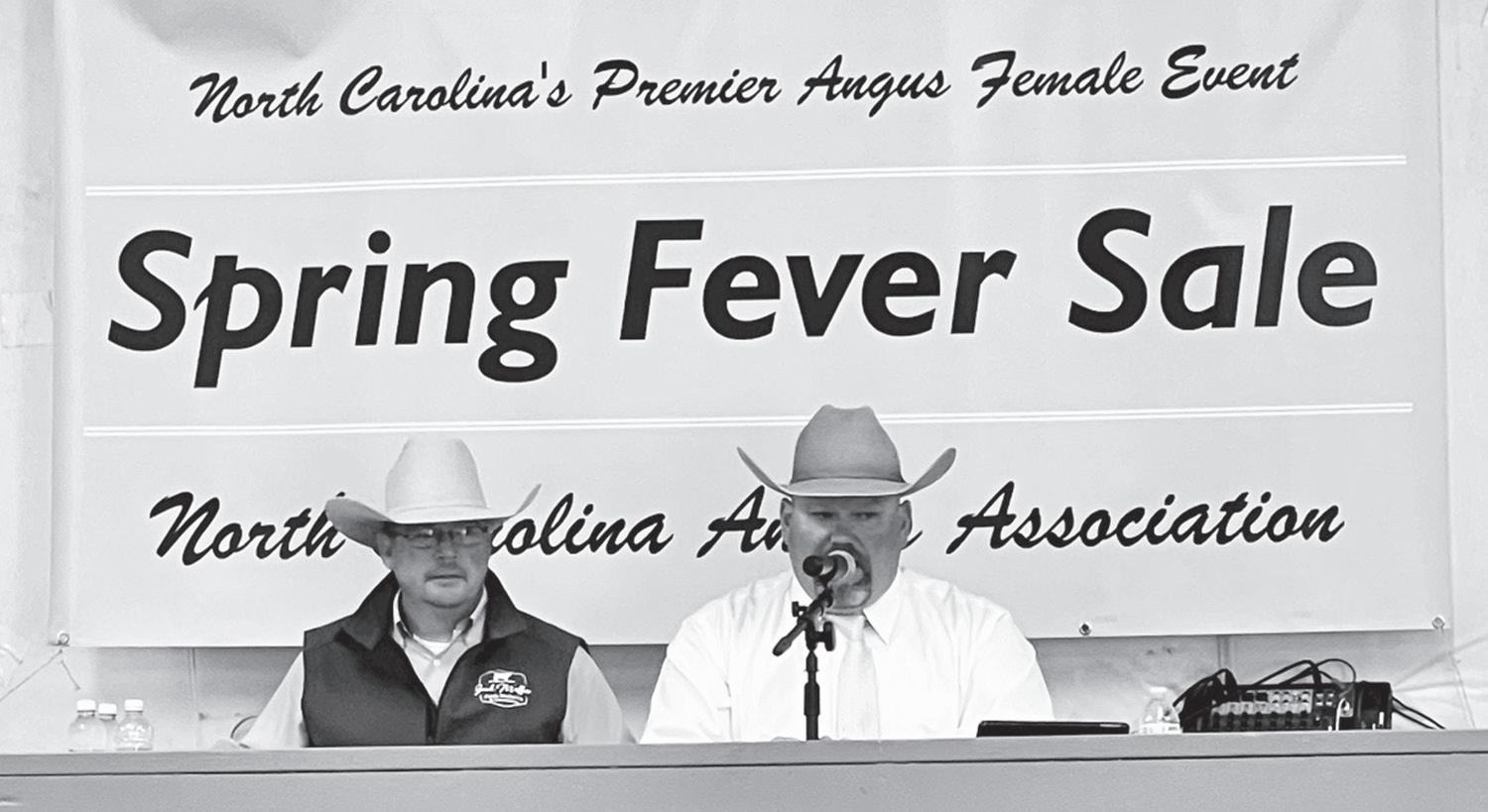

July 7, 1938 — April 22, 2024
Connie Mack Deal, age 85, a beloved husband, father, grandfather, great grandfather, and friend, passed away peacefully at his home in Alexander County on April 22, 2024. Born on Thursday, July 7, 1938, in Alexander County, Connie was a proud veteran who served his country in the United States Army. He was a member of St. Paul Lutheran Church.
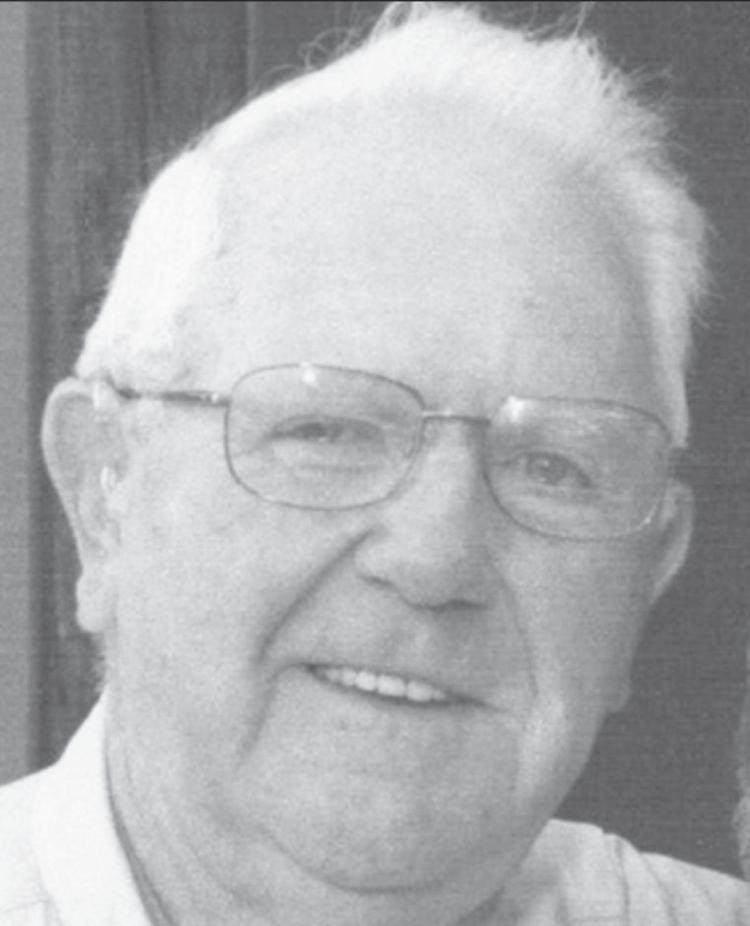
Connie will be remembered fondly for his love of family, especially his grandchildren, with whom he enjoyed spending countless hours creating cherished memories. His interests were as varied as they were deep; he found joy in working with and breeding black Angus cattle, as well as finding solace in the serene pastimes of fishing and hunting deer and groundhogs.
He is preceded in death by his parents, Bryan Deal and Dolly Wike Deal, along with his brothers Haskel, Carl, and Roy Deal, and sisters Ruth Deal, Marie Wike, and Eloise Jolly.
Left to cherish his memory are his devoted wife of 43 years, Virginia Deal; loving children Paula Dishmon (Rickey Ham) and Tommy Blackburn (Michelle Brunett); grandchildren Corey Dishmon (Desiree), Heather Sipek (Timothy Dancy), Kayla Bowman (Garrett), Sean Dishmon; great-grandchildren Skylar Sipek, Brinley Oxentine, Graylen Oxentine; sister Carol Fox (Jarvis); sisters-inlaw Effie Deal and Wanda Deal; special friends Clell Seitz (Rene); along with several nieces and nephews.
Connie Deal’s legacy of love for family and friends will continue to live on in the hearts of all who knew him. May he rest in peace.
$400 - Open Rate
$375* - 6 Ads Annually
$320* - 12 Ads Annually *per month
$575 - Open Rate
$530* - 6 Ads Annually
$460* - 12 Ads Annually *per month
$225 - Open Rate
$200* - 6 Ads Annually
$180* - 12 Ads Annually *per month
$200 - Open Rate
$185* - 6 Ads Annually
$160* - 12 Ads Annually *per month



Producers to be paid grid premiums for AngusLink Beef Scores. The American Angus Association, National Beef Packing Co., IMI Global, and U.S. Premium Beef announce new grid premiums to take effect in August and December, based on genetic merit data.
For the first time, cattlemen can earn grid premiums based on the genetic merit of their cattle, stemming from their investment in superior genetics. National Beef Packing Co. (NBP) announces the addition of new premiums on their U.S. Premium Beef (USPB) grid for qualified cattle based on their AngusLink Genetic Merit Scorecard (GMS). AngusLink value added programs are administered by the American Angus Association in partnership with IMI Global.
Effective for cattle harvested on August 5, a grid premium of $5 per head will be paid for cattle with a Beef Score of 100 or greater on the AngusLink GMS. This will be exclusively available for cattle marketed through USPB and delivered to NBP plant locations in Liberal and Dodge City, Kansas.
On December 1, a second grid premium, $10 per head for cattle with a GMS Beef Score of 150 or greater, will take effect. Those scoring 100-149 will continue to receive the $5/head premium. These premiums will be in addition to all other premiums and discounts available based on grading and carcass performance.
“National Beef is pleased to offer U.S. Premium Beef members this grid premium and new program in cooperation with the American Angus Association,” said Chad Barker, vice president of cattle procurement with NBP. “We’re excited to be adding another chapter to our history of creating innovative ways to reward producers for high quality cattle.”
Mark Gardiner, of Gardiner Angus Ranch and chairman of the USPB board of directors, said this announcement is revolutionary. He hopes it will inspire others to feed better beef by supporting advancements in genetics.
“This is revolutionary from the standpoint that there has never been a grid incentive based upon genetic merit,” Gardiner said. “We’re very thankful for National Beef and U.S. Premium Beef recognizing the value of genetics as
identified by the AngusLink program.”
Brian Bertelsen, USPB vice president of field operations, said, “For over 26 years, the USPB value based grid has rewarded cattle that excel in carcass quality. This new program is an incentive for cattle feeders who market on the USPB grid to seek out and buy feeder cattle that are genetically designed to not only excel in carcass traits, but also growth and efficiency.”
The GMS objectively describes performance potential across four areas using a range from 0-200, with the industry average being 100. Beef Score predicts genetic potential for feedlot performance and carcass value and is calculated using the Association database and genetic information on sires and the cow herd.
“This is a significant step for the industry and speaks to the continued evolution of value based marketing,” said Mark McCully, CEO of the Association. “National Beef understands the importance of genetics and is directly rewarding producers for their investment.”
USPB also said the third party verification provided by IMI Global was a key factor in the decision to move forward with these plans.
Doug Stanton, senior vice president of sales and business development with IMI Global, said, “This new value added opportunity rewards commercial cow/ calf producers for the superior Angus genetics they have developed over the years in their operations. The Genetic Merit Scorecard values, along with third party Age and Source verification, provide a complete package of product predictability and traceability to the beef industry and our loyal consumers.”
Cattle will need to qualify with their GMS Beef Score at least two weeks before harvesting. Most cattle currently receive a GMS prior to leaving their ranch of origin.
In addition, USPB is instituting a $1 per head premium, effective May 13, for each low frequency EID tag that is read and assigned to a carcass ID number within each lot. No minimum number of tags will be required within a lot.
There is no additional cost associated with the GMS program, aside from IMI Global’s Age and Source verification
enrollment, which includes an EID tag.
Troy Marshall, director of commercial industry relations with the Association, said the timing of the announcement is beneficial for cow/calf producers.
“Not only will previously enrolled cattle be eligible starting the first part of August; but as we enter the summer video sale season, it will also provide an additional incentive and additional buyers for those cattle selling with the GMS,” he said. “Cow/calf producers will have the opportunity to enroll and take advantage of this program with this year’s calf crop. The investment in time and money to enroll in AngusLink is extremely small and the ROI is growing exponentially as the market continues to embrace the scorecard.”
To qualify for the GMS, sires must be predominantly (50 percent or more) registered Angus, and 75 percent of the bull battery must be registered.
“Obviously, this is a transformative change, but the real impact will be longer term,” Marshall said. “This is a big step forward in rewarding producers for investing in genetics and will help to facilitate information flow and feedback between the segments of our business.”
Bertelsen also said feeders can lease USPB delivery rights, when available, to market cattle through USPB. Those interested should please call USPB at 866-877-2525 or visit www.uspremiumbeef.com for more information.
For questions about the GMS or AngusVerified, call 816-383-5100 or contact AngusLink via email at anguslink@angus.org . IMI Global can also be reached to help start enrollment at 303-895-3002, or producers can complete its contact form to get started at www. imiglobal.com/contact.
Angus Auxiliary Hosts 7th Biennial Women Connected Conference. Angus women gather from across the country to network and learn more about Certified Angus Beef. Raising livestock is a way of life few are privileged to experience, and busy schedules and onfarm responsibilities can make it difficult for farmers and ranchers to prioritize networking and educational opportunities.
On March 25-27, 33 cattlewomen from 14 states gathered to connect and learn from one another at the Certified Angus Beef Culinary Center in Wooster, Ohio, for the seventh iteration of the Women Connected Conference.
“When I applied for Women Connected, I knew it would be a group of women passionate about the Angus breed, but I wasn’t sure what to expect,” said Bree Hawkins, a Women Connected
attendee who is just beginning her journey with the Business Breed. “After the conference I realized I had not only connected with an amazing group of women who welcomed me without question, but that I also understood more about Certified Angus Beef, the brand and the breed as a whole.”
Hosted by the American Angus Auxiliary and underwritten by the Angus Foundation, the conference was started in 2012 with the purpose of bringing women involved in the Angus breed together to engage in learning about the industry and to network with other cattlewomen.
“The unrestricted Angus Fund helps make educational programs such as Women Connected possible for those who share a passion for Angus cattle,” said Jaclyn Boester, executive director of the Angus Foundation. “The Foundation is proud to support this great educational and networking program for the Angus Auxiliary.”
Staff and attendees kicked off the week at the Culinary Center with a welcome reception, hearing from Women Connected chairman Anne Lampe, American Angus Auxiliary president Karla Knapp, and president of Certified Angus Beef John Stika. The conference program also featured an overview of the American Angus Association, the Angus Foundation, and the Certified Angus Beef brand, including the brand’s programs and marketing efforts.
Moving over to the meat lab at the Culinary Center, Diana Clark, assistant director of research and education for the brand, showed attendees the science behind the sizzle. She instructed teams in hands-on training on how to break down top sirloins that would be served the following day for lunch. Clark also presented to the group, by way of a steak tasting, about the differences between USDA quality grades, Certified Angus Beef product, and Certified Angus Beef Prime.
Throughout the event, the Culinary Center’s executive chef, Venoy Rogers III, and his team featured various dishes designed to either utilize cuts of beef in unique ways or to stretch products to feed larger groups of people. Rogers also oversaw a beef cook-off for conference participants. Attendees chose from various cooking methods and ingredients to create their own Certified Angus Beef coulotte and sirloin centered meal.
Women Connected also sampled other local wine and fare with a tasting at Troutman Winery followed by dinner at City Square Steakhouse, a Certified Angus Beef licensee in downtown Wooster.
On the final morning of the event,

discussions surrounding sustainability and protecting the brand led to roundtable brainstorming sessions centered on what conference attendees took away from their time at Certified Angus Beef.
“This program is an opportunity to bring together women from across the United States who come from different backgrounds and demographics, but all share the common bond of Angus cattle,” said Lampe, noting that the event is open to any woman within the Angus breed.
“The number of qualified candidates grows each year, and we encourage any women who are interested to consider applying in 2026.”
Ladies are selected, based on a written application, to attend the conference, which is held on even numbered years in either St. Joseph, Mo., at the American Angus Association headquarters or in Wooster at Certified Angus Beef.
For more information about the
American Angus Auxiliary and for programs supported by the Angus Foundation, visit www.AngusAuxiliary. com and www.AngusFoundation.org
About the American Angus Auxiliary. For over 60 years, the American Angus Auxiliary has been working with the American Angus Association and the National Junior Angus Association to promote youth and the Angus breed. The American Angus Auxiliary has worked to develop a number of educational and promotional programs to benefit everyone involved in the Angus industry. The American Angus Auxiliary presents more than $15,000 in scholarships each year to ten young men and women involved in the Angus industry. As a member of the American Angus Auxiliary, you can play an important role by working to promote our youth and the Angus industry, meet the challenges of today’s society, and work toward developing our Angus youth into tomorrow’s leaders. The American Angus Auxiliary offers individuals interested in the welfare of the Angus breed the opportunity to work together to provide educational, promotional, and social
programs and activities.
About the Angus Foundation. Established as a 501(c)(3) organization in 1980, the Angus Foundation remains focused on its mission to support Angus education, youth, and research. The organization has distributed more than $3.5 million in youth scholarships since 1998 and has also invested more than $1.3 million in beef cattle research throughout the past decade. For more information, contact the Angus Foundation at 816-383-5100 or visit www.angusfoundation.org
Angus Means Business. The American Angus Association is the nation’s largest beef breed organization, serving nearly 22,000 members across the United States, Canada, and several other countries. It’s home to an extensive breed registry that grows by more than 300,000 animals each year. The Association also provides programs and services to farmers, ranchers, and others who rely on Angus to produce quality genetics for the beef industry and quality beef for consumers. For more information about Angus cattle and the American Angus Association, visit www.angus.org.
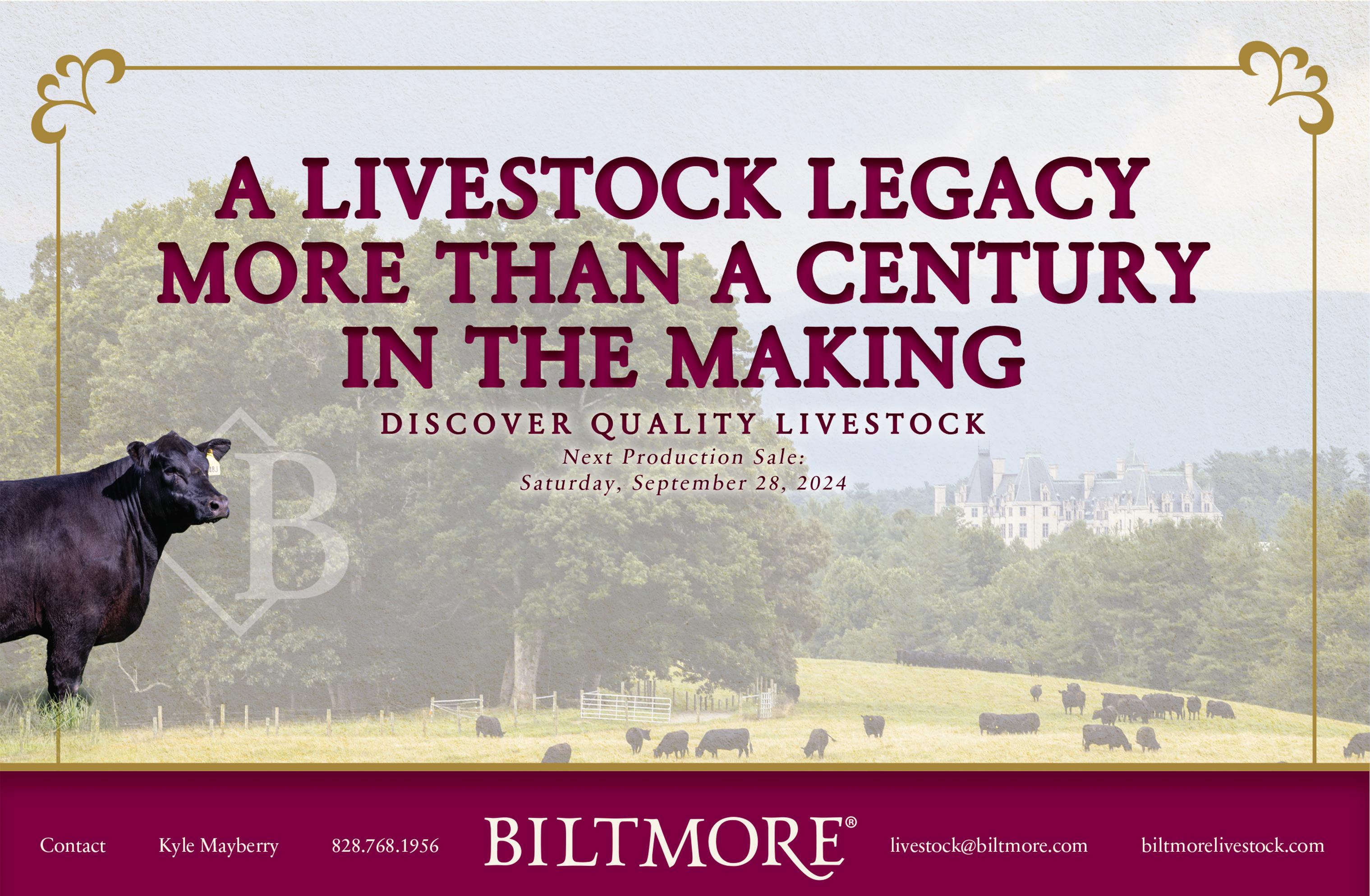








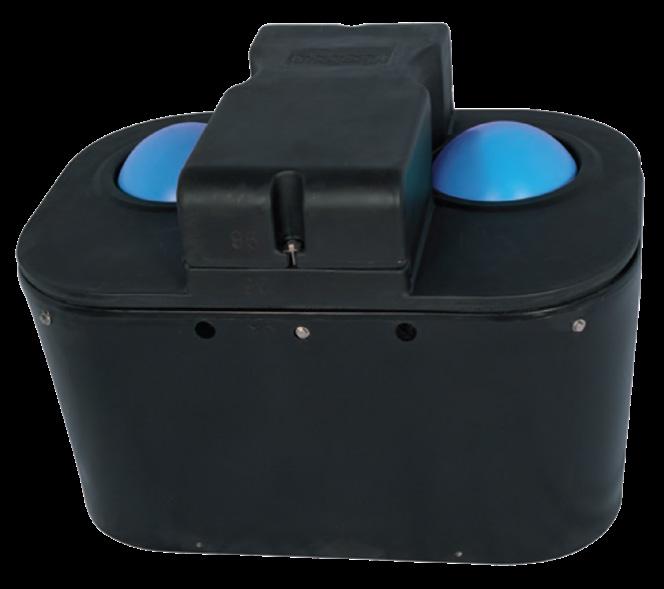



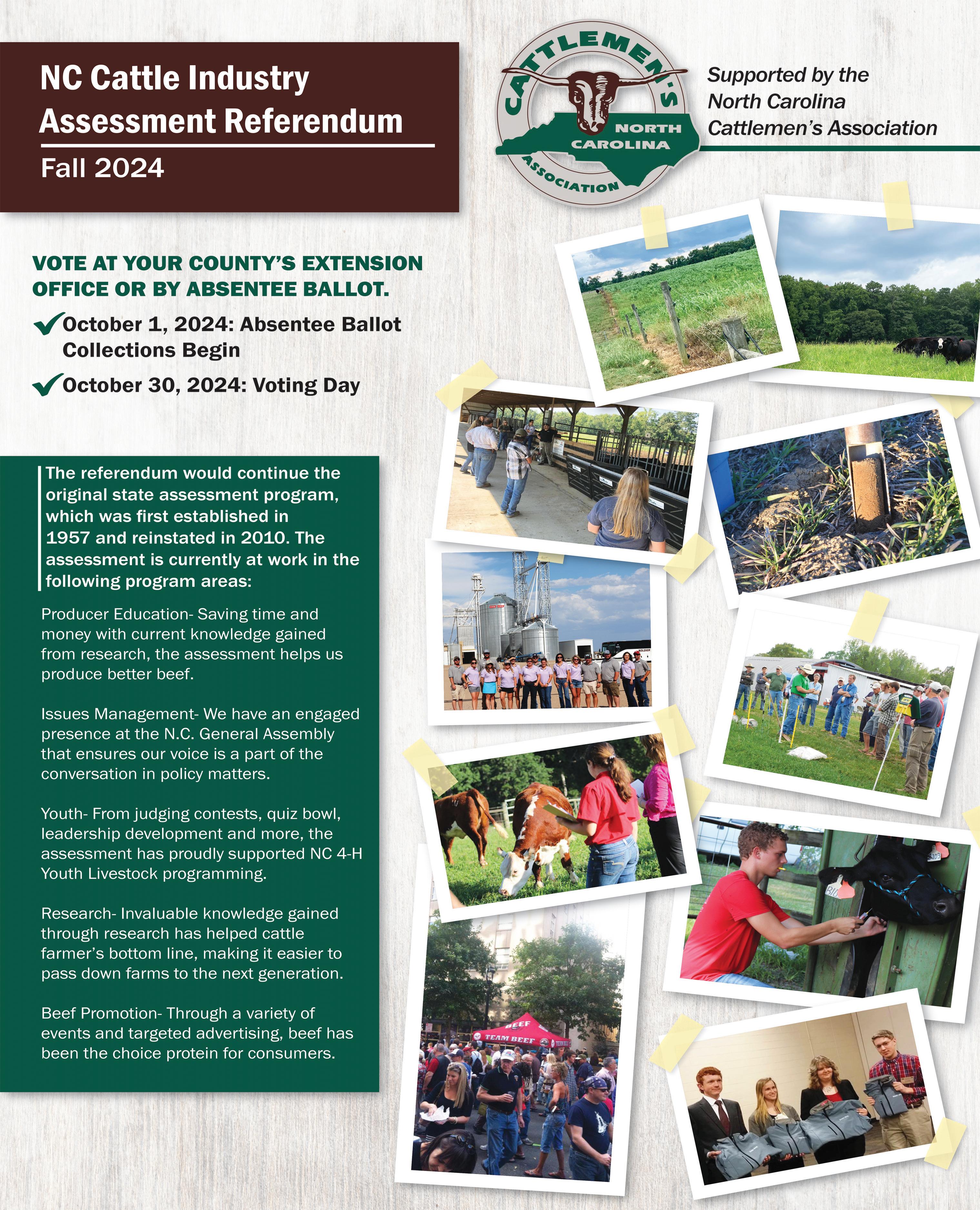
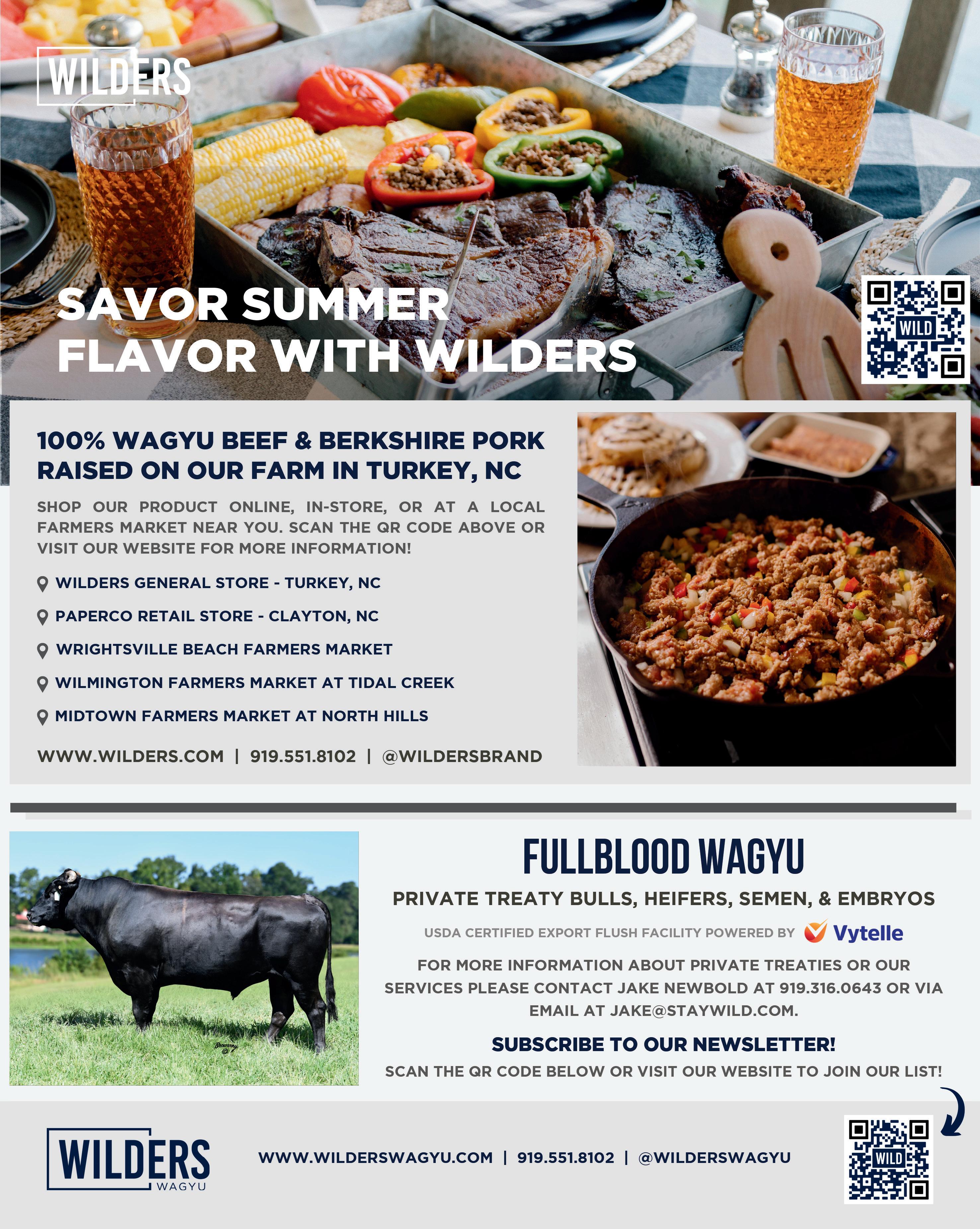
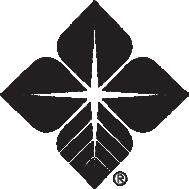
AGAware Farm Finance Workshops 2024. We are excited to announce that AgSouth Farm Credit is hosting our first AGAware Farm Finance Workshop in North Carolina this year! For more than a decade, AgSouth has been offering this farm financial training to young, beginning, and small farmers in Georgia and South Carolina.
Our plan is to have three workshops in our territory this summer. The July 16 workshop will take place at the Georgia Grown Innovation Center in Metter, Georgia. The August 8 workshop will take place at the Union County Ag Center in Monroe, North Carolina. The August 22 workshop will take place at T&S Farm in Batesburg-Leesville, South Carolina. The classes are all free and held from 9:00 a.m. - 4:00 p.m., with lunch provided. The workshops are certified for FSA borrower credits as well.
The AGAware Workshops introduce farmers to a variety of financial related topics critical to running an operation. These topics include balance sheets, income statements, family finance and budgeting, risk management, accrual income, applying for financing, preparing a business plan, technology and record keeping, FSA/SBA, and other programs. AGAware is also certified for FSA Direct Borrower Training Credit in all three states.
For more information, visit AgSouthFC.com/AGAware
AgCarolina Farm Credit
Distributed their 2023 Patronage with Members. AgCarolina Farm Credit returned and celebrated a patronage distribution of $49 million. AgCarolina Farm Credit recently celebrated another strong patronage distribution, disbursed directly to its members. The all-cash 2023 patronage distribution of $49 million returned approximately 30 percent of interest accrued by the member in 2023.
“As your local lending cooperative, the member elected board is passionate about delivering a strong patronage as it reflects the strength and health of the Association. The opportunity to put our profits back in the pockets of our membership in the form of patronage returns, is a valuable benefit of being a part of your local lending cooperative,” said CEO of AgCarolina Farm Credit, Evan Kleinhans. “By distributing our profits to our members, it reduces the effective cost of borrowing in our agriculture and rural lending cooperative.
Our 2023 patronage refund equates to an average interest rate reduction of 1.75 percent for members and it further proves the distinct financial benefits of doing business with a local lending cooperative.”
In addition, AgCarolina Farm Credit partnered with Barnes Equipment to give away a Kubota RTV520 as part of this year’s patronage celebration. Members who participated in local branch celebrations were entered into a drawing to win. Al and Vanessa Murray, members of AgCarolina Farm Credit, were announced as the winners.
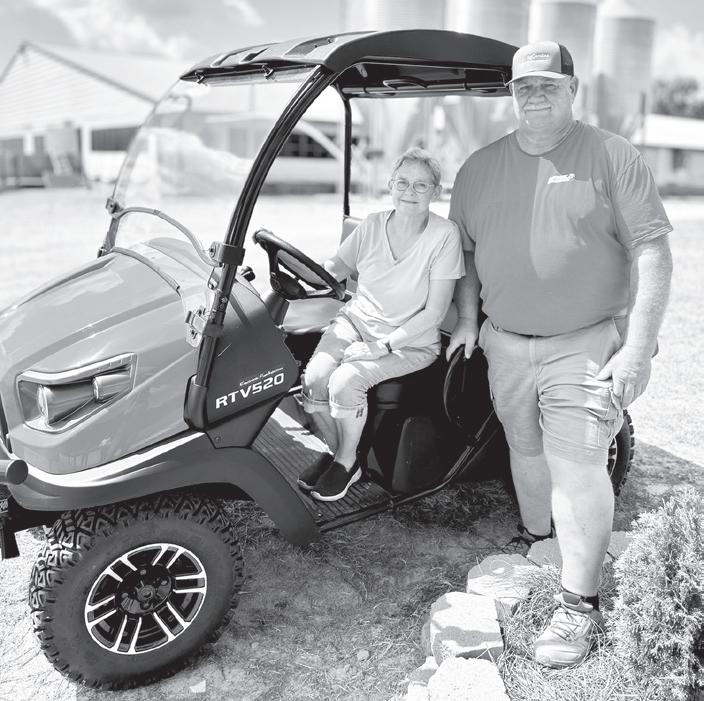
“As members of AgCarolina Farm Credit, we are thankful and appreciative of their partnership and support of our local farming operation. My loan officer, Eve Honeycutt, and all of the AgCarolina Farm Credit team are knowledgeable about agriculture and the financial needs of farming operations,” includes Al Murray, AgCarolina Member in Greene County, North Carolina.
Murray continues, “The team at AgCarolina Farm Credit is committed to serving rural communities and passionate about agriculture. That is evident in each interaction with their team and all that they do within the community we live.”
AgCarolina Farm Credit is honored to serve its members, agriculture, and rural communities throughout central, eastern, and southeastern North Carolina. The commitment to strong patronage returns is one of the many values of partnering with the local lending cooperative.
About AgSouth Farm Credit. AgSouth Farm Credit is an agricultural lending cooperative owned by its member-borrowers and is part of the nation-wide Farm Credit system. AgSouth provides loans for land, production agriculture, farm equipment, crop insurance, leasing, and home
mortgages. The Association serves 147 counties across the states of Georgia, North Carolina, and South Carolina and is headquartered in Statesville, North Carolina.
About AgCarolina Farm Credit. AgCarolina Farm Credit is a memberowned financial cooperative with headquarters in Greenville, North
Carolina. They are the leading provider of credit to full and part time farmers in central and eastern North Carolina. AgCarolina Farm Credit has nearly 6,000 members across their 46 county territory from 20 local branch locations. Federally chartered and a part of the national Farm Credit System, AgCarolina Farm Credit is locally owned by their members.

Total Time - 30 minutes
12 ounces shredded cooked beef chuck pot roast
1 cup sliced green bell pepper
1 cup sliced onion
¼ cup fresh lime juice
2 tablespoons olive oil
2 teaspoons minced garlic
½ teaspoon salt, divided ¼ teaspoon ground black pepper
Hot cooked rice, black beans and lime wedges (optional)
Combine the beef chuck pot roast, bell pepper, onion, lime juice, oil, garlic, ¼ teaspoon salt, and black pepper in a large bowl. Marinate in the refrigerator for 15 minutes or up to 1½ hours.
Heat a large, nonstick skillet over medium-high heat until hot. Spread ⅓ of the beef mixture in a thin layer in a skillet. Cook until crispy in spots, turning several times, 2-3 minutes. Remove from skillet. Repeat twice with the remaining beef mixture.
Season beef with remaining ¼
teaspoon of salt. Serve with rice, black beans, and lime wedges as desired.
Alternative Cooking Method - This recipe can be made in an 8 quart air fryer. Heat the air fryer to 375°F. Spread 1/3 of the beef mixture in a thin layer in the basket. Cook until crispy in spots, turning several times, 6-8 minutes. Remove from the basket. Repeat twice with the remaining beef mixture. Season beef with the remaining ¼ teaspoon of salt. Makes 4 servings.

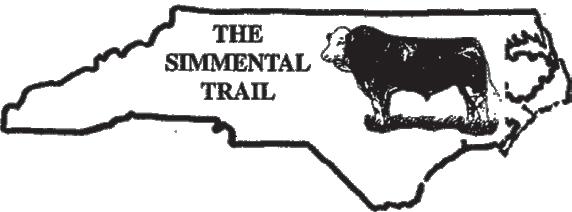
50 th Simmental Celebration. On September 6-7, the N.C. Simmental Association will be celebrating our 50th Consignment Sale. We are doing some extra special things this year by holding a Field Day beginning on September 6 at noon with vendors and educational events. We will have a breeding soundness examination demonstration and other educational events. We will have extra special viewing of the sale cattle offered at this historic sale (the longest running state Simmental consignment sale). We plan to have some things for the youth to do, like corn hole and some other learning opportunities. Supper will be a great beef dinner and maybe even entertainment. Dr. Wade Shafer, the executive director of the American Simmental Association, will
By JENNIE RUCKER Executive Secretary N.C. Simmental Associationbe our keynote speaker. We invite you to consign your BEST cattle to this sale and will also accept some Simmental influenced quality commercial cattle. Make definite plans to attend this one time 50th event. Invite other purebred or commercial cattlemen to this event.
We have several important sponsors already. Our Premier sponsors are the Fred Smith Company Ranch in Clayton and Bear Creek Beef in Bear Creek, North Carolina. Our Gold sponsors are Pasture Management Systems in Mt. Pleasant, AgSouth Farm Credit, and Morrison Farm in Rockwell. Our Silver Sponsors are Southern States in Waco, Heritage Farm Supply in Weaverville, and Lonesome Valley Investments in Alexander. Bronze level sponsors include Rocking F Farm in Climax, Neogen, Farm Systems, Inc.
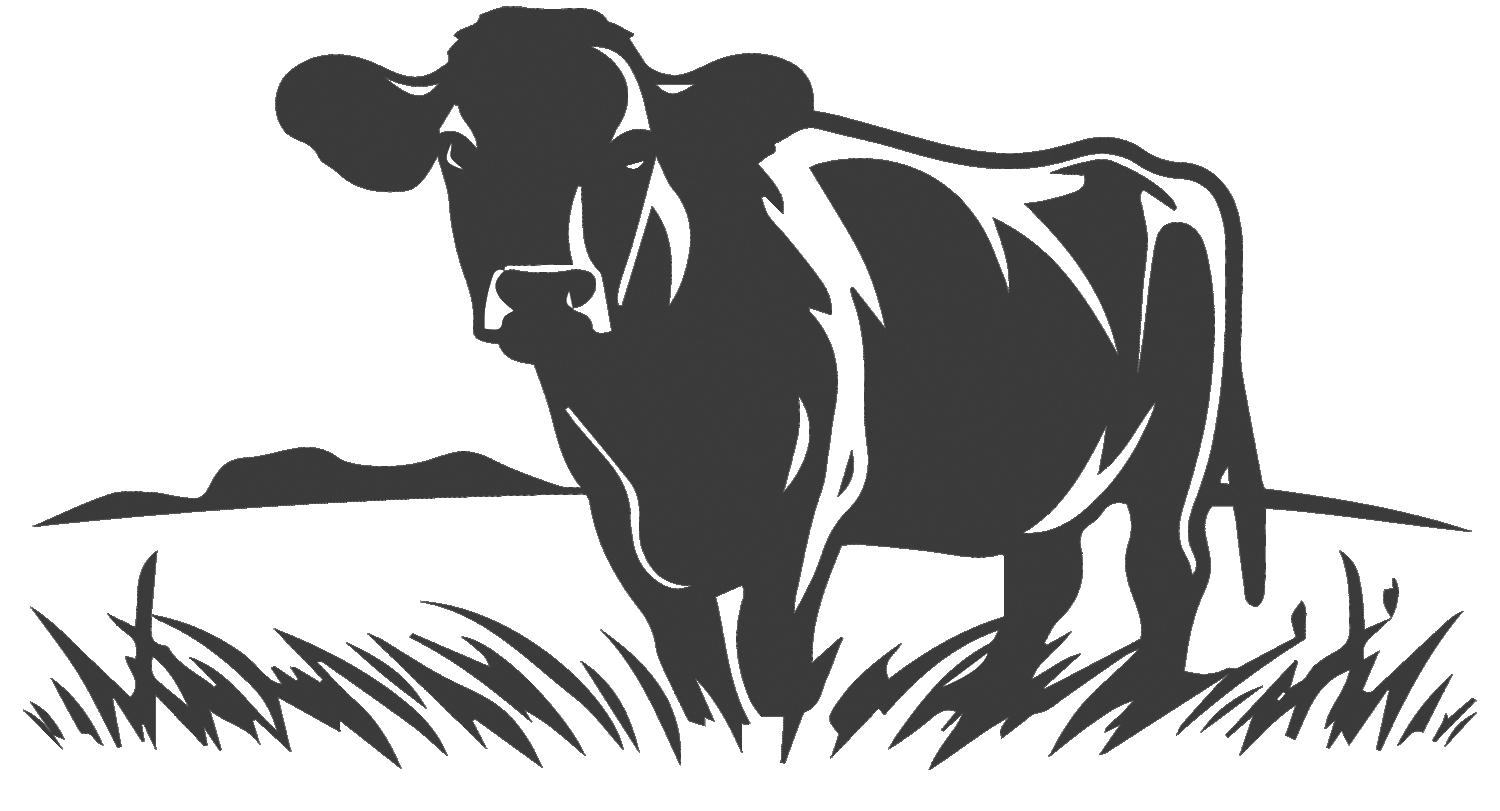
in Statesville, and the Iredell and Union County Farm Bureaus. If your business or farm is interested in being a sponsor, please contact the N.C. Simmental Association office at 336-468-1679 or email ncsa@yadtel.net. We would love to have you help us make history! Our sponsors also get advertisement in our directory, sale catalog, and on our website and can set up a booth for two days of this event. Please consider being a sponsor.
Jim Graham Junior Simmental Scholarship. The N.C. Simmental Association is proud to offer a scholarship to a student planning to pursue a career
in an agricultural related field of study. The scholarship will be given to a well deserving student who is a resident of North Carolina. The amount of the scholarship is $500.
Preference will be given but not limited to students actively involved with Simmental cattle. Applicants in high school or college must enroll or be enrolled in a field of agriculture or in an agriculturally related field. The two year Agriculture Institute at NCSU qualifies. Community colleges and technical institutes will also qualify. Applicants must apply by July 15.
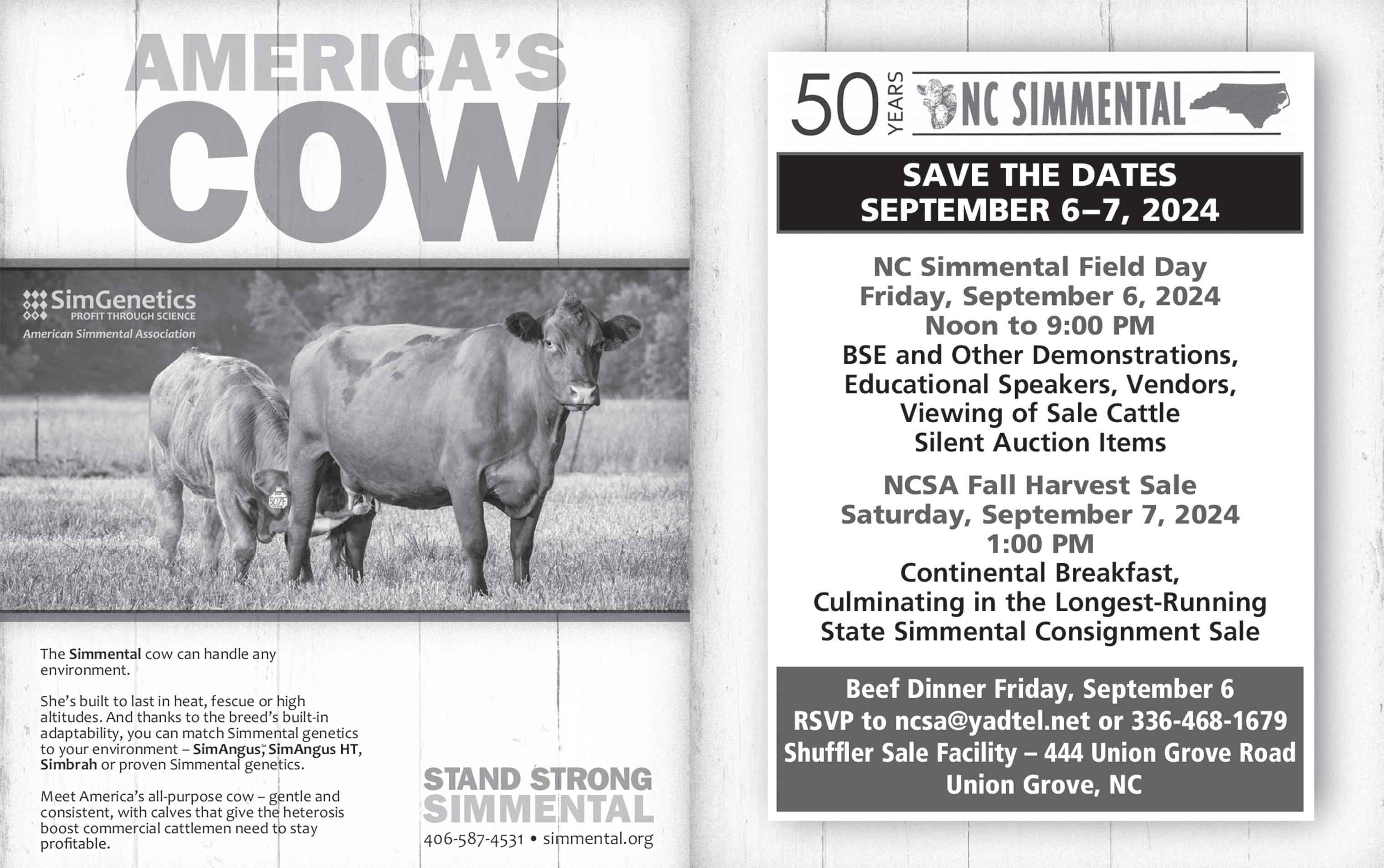
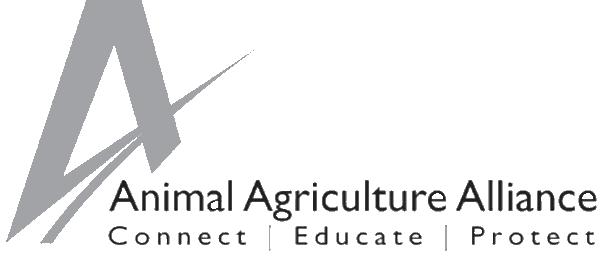
The 2024 Stakeholders Summit addresses engaging allies, ballot initiatives, legislative trends. Key themes addressed at the Animal Agriculture Alliance’s 2024 Stakeholders Summit included advancements in technology, animal welfare, antibiotic use, and transparency. Speakers also covered issues, including legal and legislative trends and animal rights activism. The 2024 Summit, themed “Ready, Set, Solve! Advancing Animal Agriculture,” was held May 8-9 in Kansas City, Mo., and attracted more than 260 in-person attendees.
The 2024 Summit included an impressive lineup of speakers from across the food supply chain and was “teed off” Wednesday morning by Joel Leftwich, chief strategy officer at Kansas Farm Bureau and president of the U.S. Agriculture Partnership Fund. Leftwich discussed the importance of identifying allies not directly involved in agriculture: “We have to have more than just the farm vote if we want to win elections.”
Leftwich shared that the number of farms and farmers in the U.S. continues to decrease. However, the general public is increasingly interested in issues such as food affordability and availability. According to The Harris Poll, about 90 percent of Americans are concerned about food prices, which have skyrocketed due to animal rights-led ballot initiatives like California Proposition 12. “We know that folks who are now concerned about the price of food, they’re paying more attention to food policy…and now they’re starting to see the impacts of some of these ballot initiatives,” said Leftwich. “We have folks out there, more people who didn’t grow up on farms, more people from those highly populated states…who are paying more attention to the price, who are paying more attention to the availability of food… How can we work with them?”
Ballot initiatives and legal issues were also discussed on Thursday morning in a panel featuring Brianna Schroeder, partner at Janzen Schroeder Agricultural Law LLC; Chelsea Good, vice president of government, industry affairs, and legal at Livestock Marketing Association; and Rick Stott, president and CEO at Superior Farms. Panelists discussed ongoing litigation related to right-to-farm laws, the impacts of Proposition 12, and a Denver initiative banning processing plants in the city, set for a vote on the November ballot.
Speakers agreed that ballot initiatives like Proposition 12 and the Denver initiative set a dangerous precedent for passing similar legislation in other places. “It’s a slippery slope,” said Good. Schroeder expects this trend to continue, stating, “It’s hard to get something to pass on a national level…so I think we’re going to see more state, county, municipality rules and regulations get passed.”
Many of these ballot campaigns impacting animal agriculture are initiated and spearheaded by animal rights extremist groups. In Denver, Superior Farms is the only facility that will be impacted, but if passed, the initiative will set a precedent that can be replicated elsewhere. Superior Farms, which has been operating in Denver for nearly 80 years, employs roughly 160 people. According to an impassioned Stott, the animal rights extremist groups behind the ballot initiative are seeking to place animals ahead of people. “They’re willing to sacrifice jobs, people’s families, retirements. They don’t care what happens to people,” said Stott. He concluded that if initiatives like this can happen in Denver, a town built on agriculture, it can happen anywhere.
When it comes to issues in agriculture, consumer engagement continues to play a vital role in shifting public perceptions by increasing awareness and understanding. Similar to Leftwich, Wendy Reinhardt Kapsak, president and CEO of the International Food Information Council, agreed that agriculture needs to find allies to speak on its behalf that can also meet consumers in new and creative ways. Dietitians and health professionals are key influencers when it comes to conversations around food and nutrition – although all voices are needed. She argued, “If you choose to remove yourself from situations that make you uncomfortable, you will have your story told for you.”
Other sessions covered topics such as advancements in technology and animal welfare, responsible antibiotic use, building transparency in the supply chain, and distinguishing between animal rights and animal welfare.
The 2024 Summit would not have been possible without the support of our sponsors: Farm Journal , Meatingplace, Successful Farming , U.S. Poultry & Egg Association, Watt Global Media, Cargill, Zoetis, American Feed Industry
Association, broadhead. + Filament, Merck, United Soybean Board, CoBank, Dairy MAX, Farm Credit Council, National Pork Producers Council, Pet Advocacy Network, Rabobank, Smithfield Foods, The Partnership, United Egg Producers, AdFarm, Agri-Pulse, American Farm Bureau Federation, American Veal Association, Cal-Maine Foods, Cobb, Edge Dairy Farmer Cooperative, Kemin, National Cattlemen’s Beef Association, National Chicken Council, National Pork Board, Phileo Lesaffre Animal Care, Progressive Dairy, Protect the Harvest, Eocene Environmental Group, Trans Ova

Genetics, Vivayic, Eggland’s Best, and N.C. Farm Bureau.
About the Animal Agriculture Alliance. The Alliance safeguards the future of animal agriculture and its value to society by bridging the communication gap between the farm and food communities. We connect key food industry stakeholders to arm them with responses to emerging issues. We engage food chain influencers and promote consumer choice by helping them better understand modern animal agriculture. We protect by exposing those who threaten our nation’s food security with damaging misinformation.
American Simmental Association
Executive Vice President Dr. Wade Shafer Announces Retirement. The American Simmental Association Board of Trustees Chairman, Chris Ivie, reports that the Executive Vice President, Dr. Wade Shafer, announced his retirement at the conclusion of the April board meeting, effective on June 30, 2025.
Dr. Shafer’s leadership and vision have been key to positioning the American Simmental Association and International Genetic Solutions at the forefront of the beef industry. His unwavering commitment to sound and credible science as the linchpin for commercial success is widely known. This mindset permeates the Simmental business, its breeders, and its staff and is widely credited for the Simmental resurgence in recent decades. Dr. Shafer’s stewardship of this approach, along with his humility and constant openness to collaborations with other like minded individuals and organizations, has directly benefited the business at large and personally impacted the lives and futures of innumerable farm and ranch families.
Dr. Shafer often states that “data is our lifeblood.” His institution of policies and approaches have helped establish the largest data pool and the only large scale, multibreed genetic evaluation in the global beef business - International Genetic Solutions. A collaborative IGS is crucial to sound science, but even more, it is vital to allowing independent beef producers access to the genetic tools needed to ensure success for them and their families. The team that Dr. Shafer has assembled

embraces his call to make sound, thoughtful business decisions while using that business to aid the industry at every turn. This commitment well into the future will be Dr. Shafer’s Simmental legacy. The Executive Committee serves as the search and hiring committee for the Executive Vice President position. Watch for additional details at www.simmental. org
About the American Simmental Association. Founded in 1968, the American Simmental Association is headquartered in Bozeman, Montana. ASA is committed to leveraging technology, education, and collaboration to accelerate genetic profitability for the beef industry. In keeping with its commitment, ASA and its partners formed International Genetic Solutions — the world’s largest genetic evaluation of beef cattle. Learn more at www.simmental.org
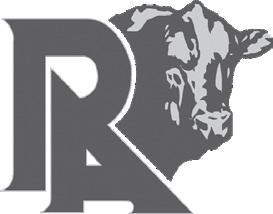
RAAA announces two staff promotions. The Red Angus Association of America is pleased to announce two staff promotions within its communications and DNA departments. Katie Martin, based in Torrington, Wyo., has been promoted to director of communications, while Ariana De La Garza of Greeley, Colo., assumes the role of DNA programs manager.
Martin transitioned into the assistant director of communications role last May following seven years of serving on RAAA’s commercial marketing team. The strong relationships developed with RAAA’s members, commercial customers, industry partners, and staff during her tenure will continue to yield dividends as director of communications. She holds a master’s degree in animal breeding and genetics from the University of NebraskaLincoln and has a lifetime of beef industry expertise garnered from involvement in her family’s ranching operation, Ochsner
Roth Cattle Company. Martin enjoys traveling and spending time with her husband, Devin, and daughter, Winona.
“Katie is known for her attention to detail, writing ability, organizational skills and aptitude for numbers, which will serve the association well given the budget and management responsibilities of the position,” remarked Tom Brink, RAAA CEO.
De La Garza is a 2018 graduate of Kansas State University holding a bachelor’s degree in animal science, with a focus in communications and marketing. After a stint as a consultant in the oil and gas sector, she redirected her career back to the cattle industry, joining RAAA in July 2023. De La Garza has swiftly demonstrated her strengths in the DNA department and has emerged as a valuable asset at RAAA’s headquarters in Commerce City, Colorado.
“Ariana has previous management
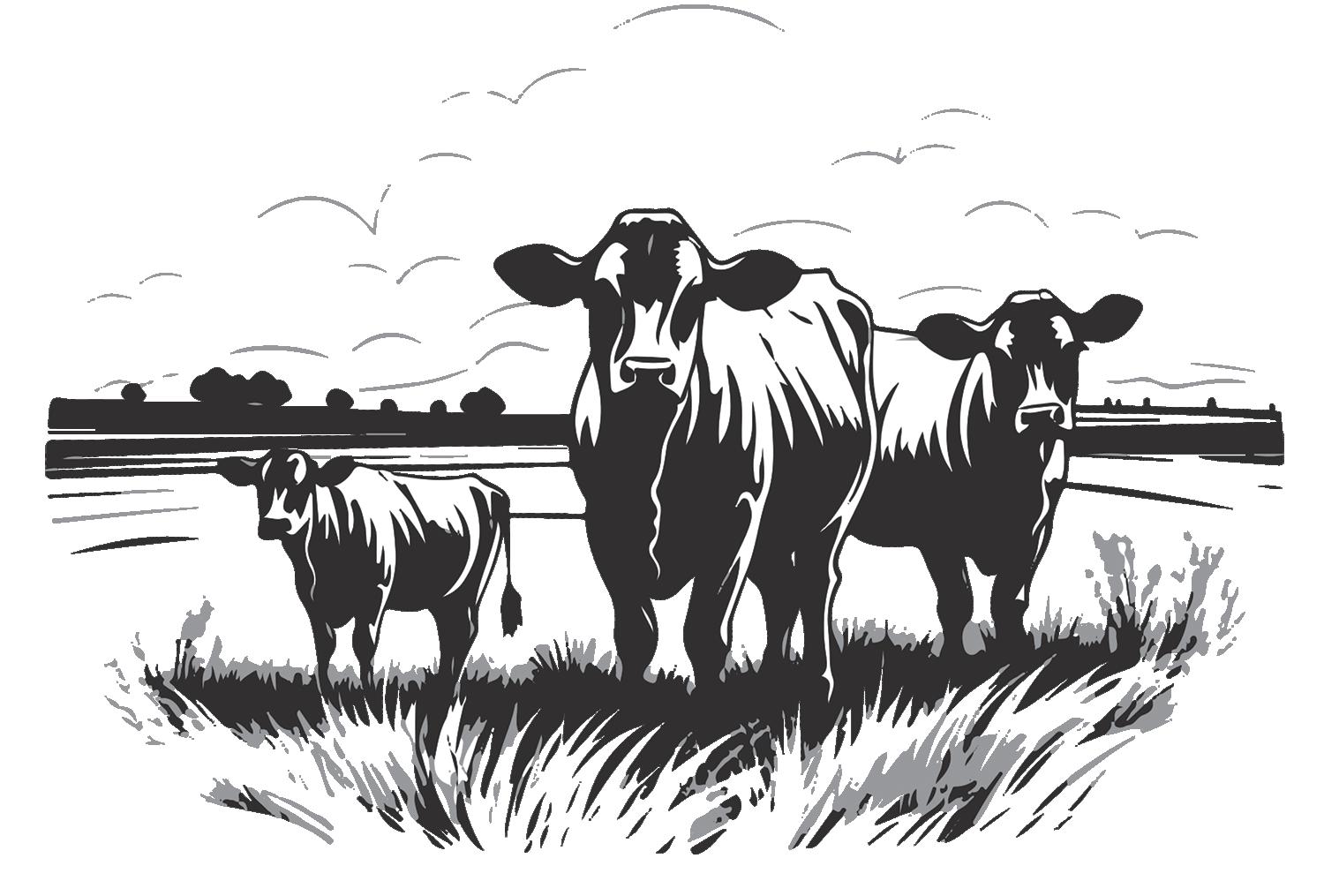
experience and has exhibited exceptional performance since joining the DNA team last July,” shared Brink. “Her promotion to lead the department is well deserved, and she will do a great job at it.”
For more information about the Red Angus Association of America or marketing programs for Red Angus influenced cattle, visit RedAngus.org
About the Red Angus Association of America. The RAAA serves the beef
 Cole Maness, President - scmaness3@gmail.com
Cole Maness, President - scmaness3@gmail.com
industry by enhancing and promoting the measurable advantages of Red Angus and Red Angus influenced cattle. The RAAA provides commercial producers with objectively described cattle by implementing new technologies and using scientifically sound principles that quantify traits of economic importance to beef producers in all segments of the beef industry. For more information, visit www. RedAngus.org
Contact these RAAC members to learn more about Red Angus genetics and how they can fit into your herd.
HARDROCK BEEF CATTLE
Ronnie & Donna Holman
4613 Hickory Nut Ridge Road • Granite Falls, NC 828-302-8659 ronnie@hardrockbeefcattle.com
JK RED ANGUS
Jeff Banfield & Madison Adams 331 Tee Jay Farm Road • Aberdeen, NC 910-315-3821 jkredangus@gmail.com
LANGDON RED ANGUS & SIMMENTAL
John & Eileen Langdon 7728 Raleigh Road • Benson, NC 919-796-5010 johnlangdon5@gmail.com
ROGERS CATTLE COMPANY
Johnny & Sharon Rogers 945 Woodsdale Road • Roxboro, NC 336-504-7268 rccbeef@gmail.com
PRESNELL RED ANGUS
Jonathan & Jacob Presnell 368 Whitaker Road • Shelby, NC 704-473-2627 (Jonathan) • 704-616-8775 (Jacob)
BULL HILL RANCH
Jim & Alvina Meeks • Raymond Prescott, Manager 1986 Trinity Church Road • Gray Court, SC 864-981-2080 bullhill2@prtcnet.com • www.bullhillredangus.com
COUNTRY BOY FARMS
David Miller 316 Key Road • Edgefield, SC 706-840-3709

Information is required by (7 CRF 1260.201). Failure to report can result in a fine. Information is held confidential (7 CRF 1260.203).
Today’s Date: ________________
Seller’s Name: ____________________________
Address:
City: ________________ State: ____ Zip:
Seller’s Signature: _________________________
Buyer’s Name: ____________________________
Address:
City: ________________ State: ____ Zip: ______
Buyer’s Signature: _________________________
Both the seller & the buyer are responsible for making sure that the $1.50 per head assessment is collected and remitted to the Beef Promotion & Research Board.
Total Number of Cattle Sold: ___________________ x $1.50 Per Head = $

* State of Origin of Cattle: * If the cattle purch ased came from another state within the last 30 days, indicate from which state the cattle were purchased.
Checkoff funded research programs provide the solid foundation of knowledge required to promote and protect our industry. As a contractor to the national beef Checkoff, NCBA’s Scientific Affairs team manages scientific research on product quality, beef safety, beef sustainability and human nutrition with Checkoff dollars. This month, I would like to dive deeper into the work we do on human nutrition research to advance the understanding of beef’s role in a balanced and healthful diet.
Our collective cattle and beef

industry goal is to build beef demand. To do that, we have to go beyond great taste and beef’s heavenly aroma. We must provide data and facts to illustrate to the consumer that they can feel confident when it comes to the nutritional value of beef. However, we do not stop there. Our scientists go deeper to understand the emerging issues for beef, look at nutrition and diet trends, and to improve the overall quality of the nutrition science being conducted by others. To do that, our research programs are committed to rigor, integrity, and transparency.

Many days, it seems we see yet another study questioning beef’s nutritional benefits. Our research, coupled with our work to improve the quality of the nutrition research of others, provides the ammunition we need to fire back with accuracy. Our work on diet and its relation to cancer has weakened the evidence being used to try and link beef with that disease. That alone is a huge win for us as producers and more than justifies the Checkoff investment in this area.
Beef and its impact on heart health are also hot topics, especially among those who promote diets that do not include beef. The Beef in an Optimal Lean Diet, or BOLD, study shows that 4-5 oz. of lean beef in a daily diet supports good health and can improve cholesterol and other heart health risk factors. February was proclaimed by the president as American Heart Month, and to help promote beef’s status in a healthy diet, we sent more than 700 toolkits to cardiologists and family physicians in 48 states to be used as educational materials for themselves and their patients. While research data is important, we must also find ways to get the information into the hands of consumers, producers, scientists, nutritionists, and more so it can be put into practice.
Beef nutrition research is best known for the work done to keep beef as part of the Dietary Guidelines for Americans. Most of you remember the old Food Guide Pyramid, or maybe you are familiar with the My Plate graphic used today. Both were graphical representations of the dietary guidelines. In 1977, the U.S. Senate Select Committee on Nutrition and Human Needs established the Dietary Goals for the United States. After a second report was published in 1980, the process for establishing dietary recommendations has been reviewed every five years. Now, I would bet very few of you have ever looked at the Dietary Guidelines, much less followed them. I would argue most Americans are in the same boat. However, the Dietary

Guidelines for Americans influences what is served in every federal food or nutrition program. That is why they are important and why we must be at the table. Work is going on now for the development of the 2025-2030 Dietary Guidelines for Americans, and Checkoff funded research is being used to keep beef in the center of the plate.
In 2020, the Dietary Guidelines for Americans recognized the importance of foods rich in iron and zinc as being important for the transition to solid foods for infants around the age of six months. This guidance was supported by the American Academy of Pediatrics and the World Health Organization. This was a significant development for us and led to the successful “Beef in the Early Years” campaign.
In the past five years, the nutrition research program has generated 71 research papers that have been reviewed more than 570,000 times. That is not media attention but rather the attention of scientists, researchers, and academics. At the American Society for Nutrition’s annual conference in 2023, the largest gathering of nutrition scientists in the U.S., there were 14 presentations based on Checkoff-funded studies. Beef nutrition research was also presented as part of an international symposium on dietary protein for human health coorganized by the Food and Agriculture Organization of the United Nations. Your Checkoff funded nutrition research is playing at the highest levels in highlighting the role of beef in the diet. Our efforts are paying off. In addition to the examples above, the Checkoff funded Consumer Beef Tracker shows the majority of consumers agree that beef is nutritious and a great source of protein. The Scientific Affairs team is committed to providing factual, scientifically supported information about beef to help consumers make informed choices about what they eat. The facts and figures provided by beef nutrition research make it easy for consumers to keep choosing beef!
You shouldn’t have to have a gun held to your head to take advantage of the expert A.I., superior genetics, the best in purebreds and outstanding farm supplies featured in the Classifieds in this issue!



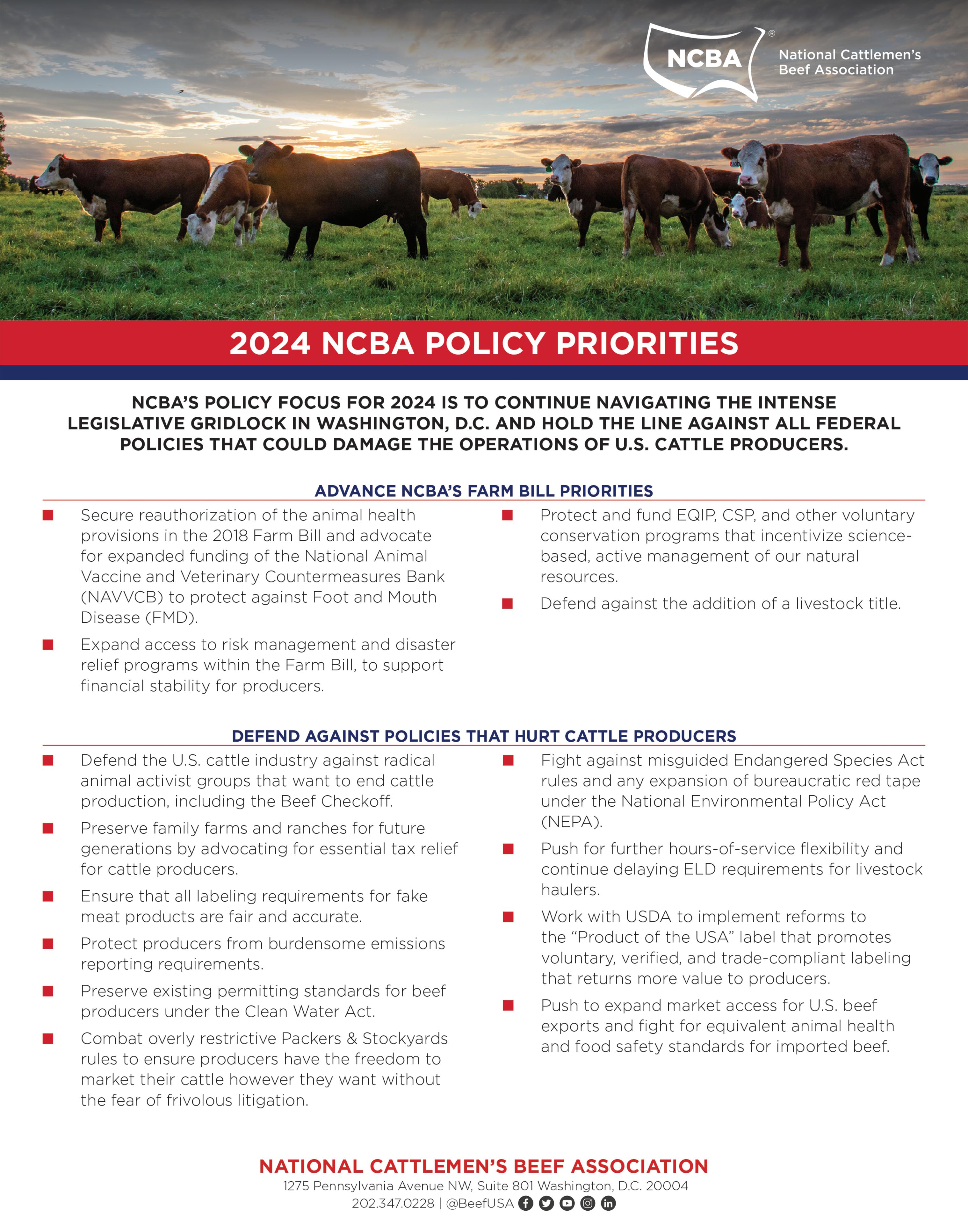
The NCBA Spring Legislative Conference is always a highlight of the year. Despite the turmoil in Congress, this year was extremely beneficial for the cattlemen and women who traveled to Capitol Hill. One of my priorities as president is to expand NCBA’s partnership opportunities. For more than a century, we have partnered with cattle producers across the country to protect and defend our common interests and this critical way of life we enjoy as stewards of cattle and the land. Those partnerships include state associations, and the strength of our bond was on full display in Washington, D.C., as more than 30 state associations worked together to advance the interests and needs of our members. It’s this effort and these relationships that should instill pride in each of us.
Cattle producers have always been independent, and we always will be. Still, there are too few of us to leave our future to chance, and that’s why opportunities to present our situation to members of Congress and federal agencies with
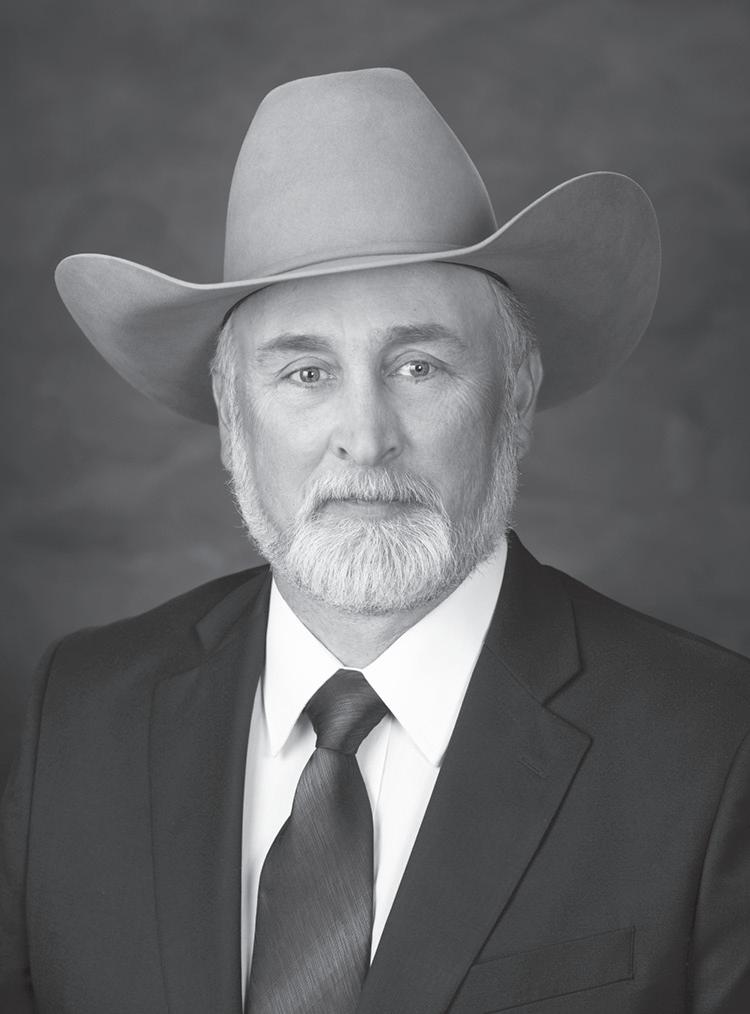
jurisdiction over farmers and ranchers are critical to our past and future success. NCBA is the one national organization with the respect and ability to make progress on the challenges we face in producing beef. I am proud to report that the partnerships NCBA’s leadership has forged with members of Congress and key agency personnel are strong, and our priorities are moving forward in a way that will both advance the industry and protect us from government overreach.
The Farm Bill is a key priority for NCBA members this year, and both state and national leaders had countless discussions with our members of Congress during visits on the Hill. We also had the opportunity to hear directly from House Agriculture Committee Chairman G.T. Thompson, who remains committed to advancing a Farm Bill this year. His leadership and partnership on the Farm Bill, combined with the work of the cattlemen and women who were present for the Legislative Conference, will help complete this important task
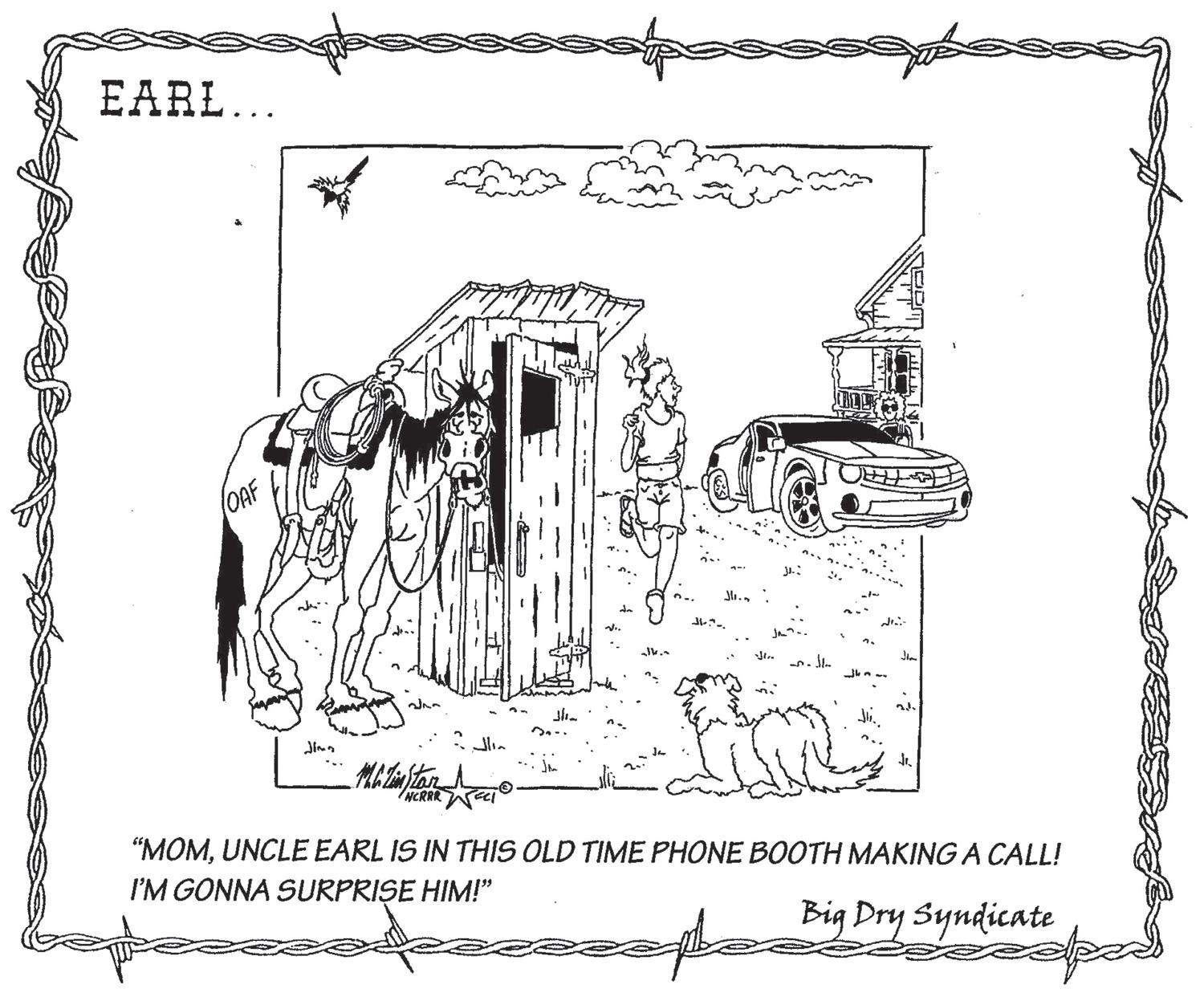
despite the ongoing turmoil preventing many other groups from advancing their agendas. Without partnerships on both sides of the aisle, the strong bond between NCBA and state associations, and the commitment of grassroots cattle producer members of both state and national organizations, we wouldn’t be nearly as successful as we have been in protecting our future.
Each of us has a different leadership path in life, but each path is critical, and if you’re not engaged with your state association, you should be. Fewer than two percent of Americans are engaged in agriculture, and our voices could easily be overwhelmed by the majority if we fail to work together on important issues. State cattle associations are the front line in protecting our way of life. If you haven’t been to your state association meeting, I would strongly encourage you to take that first step and attend. The opportunity to work with neighbors and like-minded cattlemen and women is invigorating and important to ensuring the future of your family business is protected. If you’re already a state leader, I want to thank you for the important work you’re doing and encourage you to take the next step and
join NCBA’s leaders in working at the national level. We’re always in need of grassroots members who will share their stories, engage in committees, and serve as leaders of the association.
The work we do at the local, state, and national level advances our interests and protects our future. Our industry’s ongoing survival and ability to thrive depends on women and men like you sharing your story with decision makers at every level of government. By working together to strengthen our partnerships and our voice, NCBA and your state associations can build on more than a century of advocacy work that has overcome turmoil, change, and time to make sure cattle producers thrive despite all of those who have aligned against us throughout past years.
There is no doubt our industry is strong, but it can always be stronger. I hope you’ll take the first step and make sure your local, state, and national membership dues are paid. Once that’s done, reach further and get involved. As we head into summer, NCBA leadership will be traveling across the country to state meetings and working with state leaders, so I hope I’ll see you there.
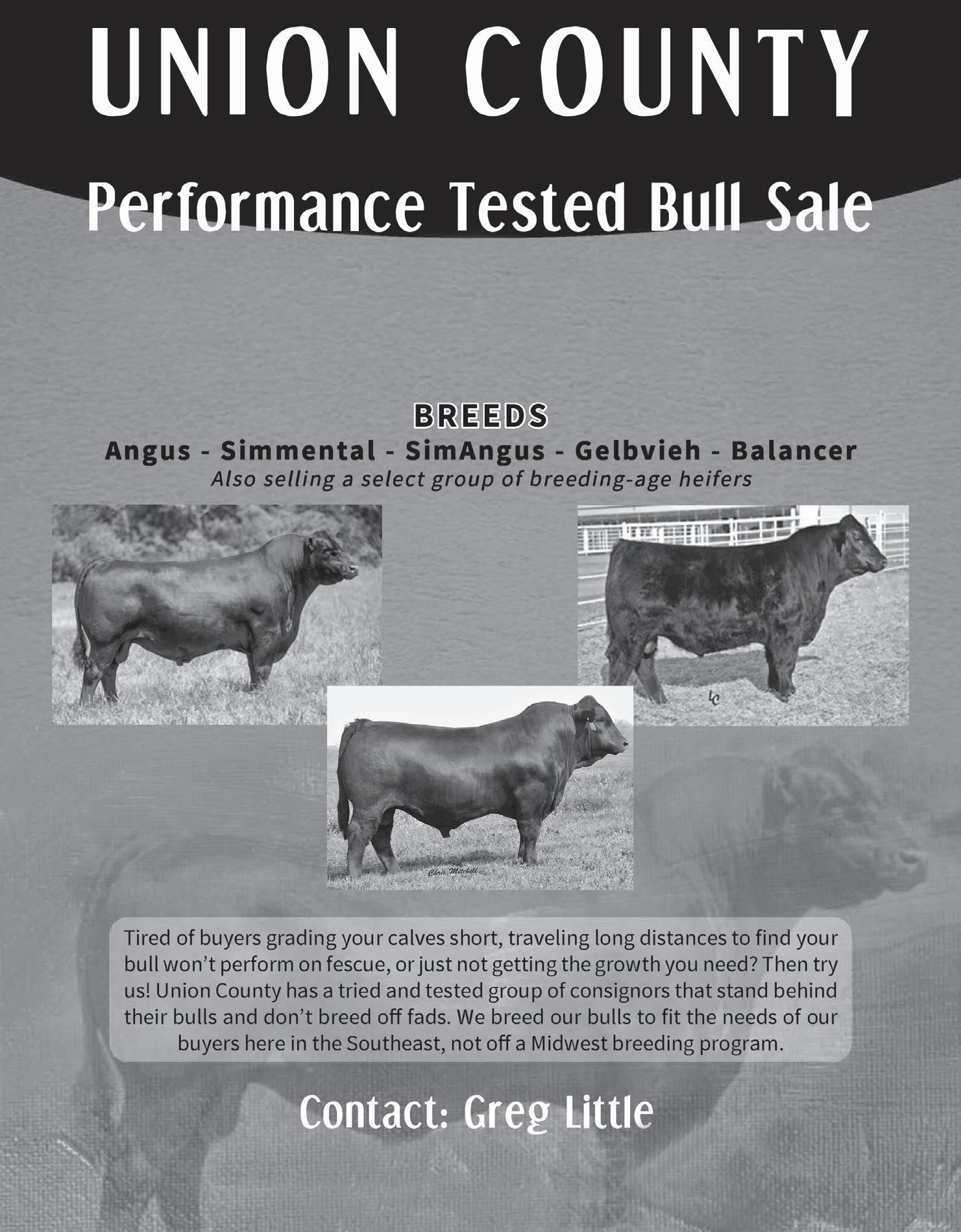

On-farm Severe Weather Safety. “Our risk for severe weather and some tornadoes has gotten enhanced for tomorrow – can you give me about ten minutes? I’ve got to get a forecast out,” News on 6 chief meteorologist and rancher Travis Meyer asked over the line.
It’s storm season in the heartland.
A meteorologist of more than 40 years, Meyer grew up on a farm in southcentral Nebraska. His family of German heritage settled the ground more than 140 years ago. “I wish they could have known that it doesn’t rain in south central Nebraska as much as it does in eastern Nebraska,” he said. His fascination with weather began as a threeyear-old, sitting on the front porch next to his grandfather while his dad worked the farm. They would watch the storms and pray for rain. He recalled, “You would see the lightning out of the southwest, and you’d be waiting, hoping.”
He’s passionate about weather and getting the information right. As meteorologists are surrounded by data and weather maps, often, “You don’t get to really be in the elements, so to speak, because we live on a computer screen. I mean, that’s our world, that’s our life. But
I can’t do that,” Meyer said. “Being out on the ranch is what saves me. It just puts me in the weather, in the outdoors, and I just love it.”
Meyer has a cow/calf operation, and the family also used to be involved in reining horses. “I love AngusHereford cross, and Black Baldies are kind of my favorite. They’re pretty good temperament, and when you’re older, you can’t jump fences,” he said, laughing. “I’ve tried to stay away from spring calving because severe weather happens in the spring, so all of mine are fall calving.”
When asked if he had ever been caught at the farm during severe weather, he didn’t hesitate. “I’ve been caught out in bad storms many times. You know, you’re trying to get the cattle in, and especially get our horses into their stalls and all safe and secure before the bad storms were hitting.”
When a solid home, tornado shelter, or basement may be miles away, and you’re caught in a severe storm, keep in mind these on-farm severe weather safety tips.
Safety Tips for Farmers, Ranchers, and Horsemen - Download a trusted weather app. “I think that’s a very good precursor to the actual storms happening.
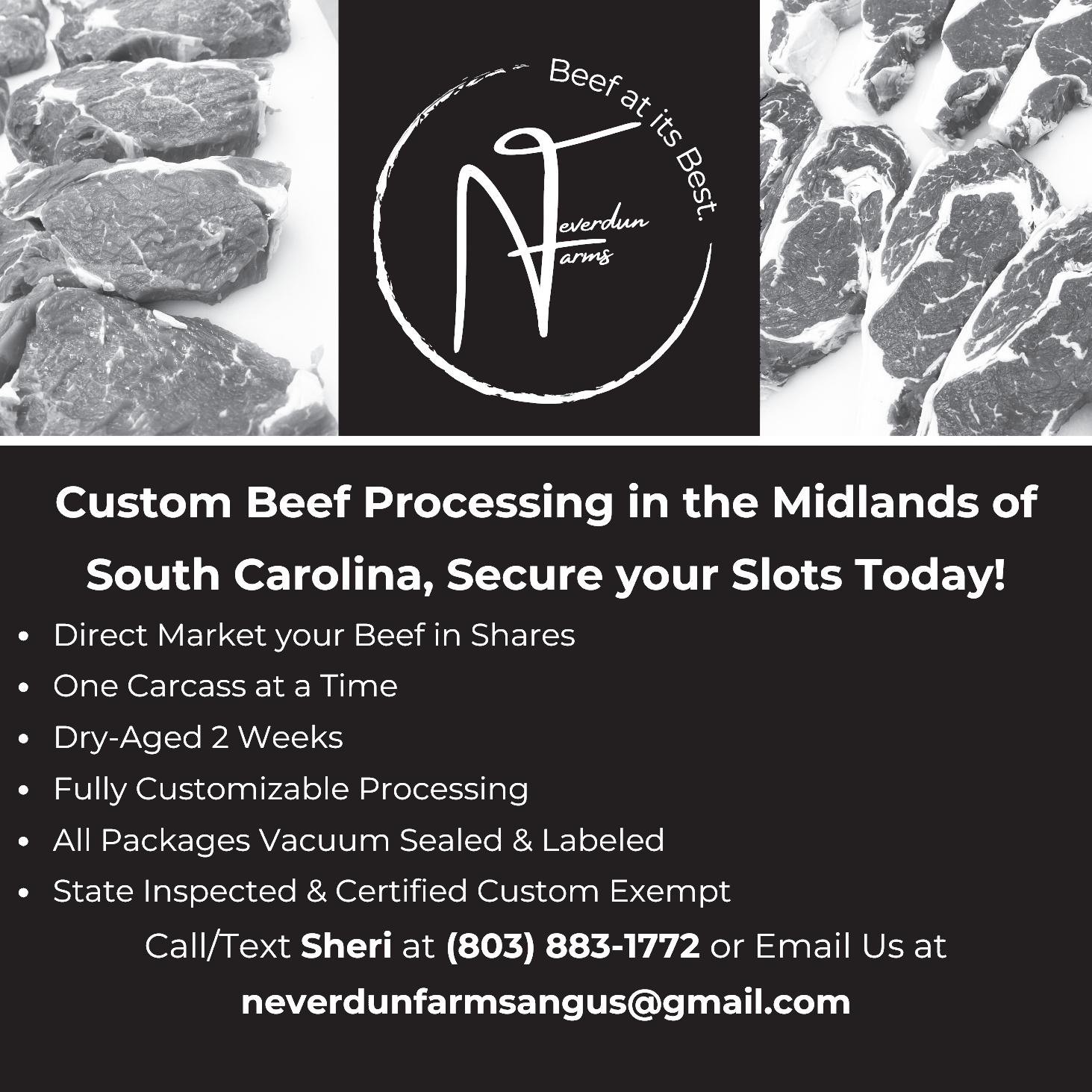
A weather app helps inform them and keeps them ahead of the storm,” suggests Meyer. Another benefit, he adds, is if you have multiple farms or family and friends in other towns, you can set up notifications for several areas.
Identify a safe place before you need it. If severe weather catches you at the farm, where will you take cover? Meyer says, “A barn is not really a safe place at all. You have to look for a reinforced structure, and most barns are pole barns, and they’re not quite as structurally sound as you could find in a brick home with many walls. In my barn, we originally had a wash rack for our horses. So, I know that there was some plumbing on the walls that was reinforced. Being in your vehicle is also not a good place.”
Meyer recommends that those facing immediate tornado risk look for lower elevations, ditches, or culverts. If flood water from heavy rain is a concern, and you’re nowhere near a basement or reinforced structure, you can try to outrun it (very strategically so). “Look at the storm, and if you’re face-to-face with a tornado, you want to go at right angles away from the tornado using a vehicle,” recommends Meyer. “Hurry up and get into a ditch if you can’t outrun it.”
But what if there just isn’t enough time? Meyer recommends, “If you don’t have time and you’re in your barn, you have to wrap yourself into blankets and especially your head. Find something very sturdy, like a feed room, and then surround yourself with anything that is excessively sturdy. The problem is that if you’re in a tornado, debris is what’s going to get you. It’s not the wind. It’s what’s falling on you; it’s what’s blowing into you. If you can alleviate that as a problem, there’s a high probability you’re going to walk out with a few scratches versus a broken body.”
Overall, find a reinforced area or get down low below the ground surface so debris will blow over you.
Ask yourself if you should take that risk. From experience, Meyer says the greatest risk often presented to farmers and ranchers is getting just one more thing done before the storm blows in.
“I need to get that tractor in. I need to put the pickup and horse trailer up... You’re thinking of all these other things that you’re trying to get accomplished, and the countdown clock to an actual storm or lightning strike is on – even though you might know it. You’re trying to beat the weather elements, and I think that’s where it’s very dangerous and where I recommend ranchers and farmers be more cognizant of,” said Meyer. “That’s probably the biggest thing that I tend to see with ranchers, farmers, and
folks who work outside. They push the limits, even though they’re smart and use a lot of common sense. You push limits a little bit because you know that you’ve got important and expensive stuff sitting out there, and you want to protect it. But I do think that’s a place where you have to stop and go, OK, here’s the situation. Do I want to take that risk?”
Safety Tips for Livestock and Horses
• If possible, bring animals in during a severe weather watch. Don’t wait until it’s a warning. Kris Hiney, PhD, Oklahoma State University assistant professor and Extension equine specialist, specializes in disaster preparedness for horses and livestock. When asked whether to keep horses stalled or turn them loose in a pasture for better hopes of survival, Dr. Hiney replied, “It’s a hard call to know what’s best during severe weather. Overall, being sheltered is better. But it really depends on how sturdy the barn is. We advise to not have any loose material that could be a flying projectile and to have everything locked down tight.”
• Have basic first-aid items on hand, such as wound care spray, gauze pads, and vet wrap, should they be needed for any injuries caused by debris during the storm.
• When severe weather is predicted, take steps to prepare well in advance. Dr. Hiney recommends that you:
º Have items safely secured in the barn to avoid more debris.
º Store enough fresh water to provide 5-10 gallons per horse per day should the water shut off.
º Have a current photo to prove ownership when relocating, in case they are turned loose or are separated from the property.
º Microchip horses for the best chances of reuniting.
º Label contact information using livestock paint by writing with a Sharpie on their hooves or braiding a luggage tag into horses’ manes.
Continue learning about livestock and horse care at ValleyVet.com
About Valley Vet Supply. Valley Vet Supply was founded in 1985 by veterinarians to provide customers with trusted animal health solutions. Building on over half a century of experience in veterinary medicine, Valley Vet Supply serves equine, pet, and livestock owners with thousands of products and medications. With an in-house pharmacy that is licensed in all 50 states and verified through the National Association of Boards of Pharmacy (NABP), Valley Vet Supply is the dedicated source for customers’ horse, livestock, and pet needs. For more information, please visit ValleyVet.com
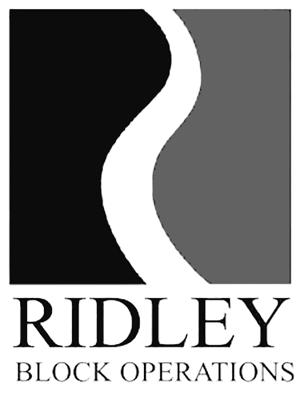
You won’t regret it - I think we all have regretted something we did or didn’t do at some point in our lives. Maybe you have regretted buying that truck because it has only been problems. Or you regretted eating that piece of pie after you’d eaten your fill, and it put you over the edge. Or you regretted not going back to make sure you chained the gate.
Living with regret isn’t fun, and it often comes with consequences. Finding out you had more opens this year compared to years past isn’t fun either. So, what can you do to help avoid that? Management and nutrition.
Many factors come into play when it comes to pregnancy rates and breedbacks. Bull breeding soundness, semen quality, cow body condition—the list goes on and on. What I will focus on here is supplemental nutrition, which can help avoid the regret of not supplementing.
Minerals - When it comes to fertility, a complete mineral supplementation program will help drive success.
Phosphorus is a macromineral that plays a role in a variety of metabolic functions. When metabolism and hormone levels are maintained, improved conception rates result. Phosphorus deficiency directly impacts reproductive performance, often resulting in infertility, irregular estrus cycles, silent heats, or delayed conceptions.
Trace minerals are also important when it comes to improving cattle
fertility. Four Bioplex organic trace minerals — zinc, manganese, copper, and cobalt — are available in Blueprint products and the newly reformulated Crystalyx Balanced line of products. These Bioplex organic trace minerals are more bioavailable to the animal, allowing them to be more effectively and efficiently utilized to help drive reproductive success.
• Zinc repairs the reproductive tract, allowing the cow to get ready to conceive again. It’s essential for proper functioning of reproductive organs.
• Manganese is an important contributor to necessary reproductive hormones, in order to produce viable eggs and reduce inflammation of the recovering reproductive tract.
• Copper helps in shortening the calving interval and is a critical component for early embryonic survival.
• Cobalt increases fiber digestibility of the forage to extract more energy for the animal. Used in the rumen to synthesize vitamin 1B2, it ultimately gets absorbed and used for glucose production and energy metabolism.
Consumption - Outside of the nutrition itself, mineral supplementation is only good if the cattle will consume the product. This is where Crystalyx wins, hands down. Previous research has tracked cows using GPS collars and found that 95 percent of grazing beef cattle consumed a Crystalyx mineral

supplement, compared to 55 percent of cows consuming a conventional dry mineral. Imagine what it can do for your pregnancy rates if more cattle are actually consuming the mineral you are providing to them! With its improved palatability and weatherability, yet being a natural self-limiter through the hardness of the block, you won’t regret the minimal waste and overall consumption of Crystalyx getting to your cows at a controlled intake.
Other additives - Crystalyx brand supplements are also good at multitasking. One way this holds true is that various Crystalyx formulas can provide additional additives, such as Bio-Mos 2, fly control, high magnesium, and so on. Additives have their time and place, and especially
during breeding season, it is important to utilize these technologies and added ingredients to increase your success rate on the reproductive performance of your herd. Don’t regret not using these additives during the breeding season and into the summer months.
We know calf prices are high, and with reproductive efficiency being the main profit driver in a beef cow operation, we’re confident that supplementing your cows with Crystalyx will provide the needed nutrition for the greatest breeding success. It’s something you won’t regret come preg check time, or down the road as you sell more calves.
Find Crystalyx barrels at your local dealer and get them out in front of your cows today. You won’t regret it.
If you missed the Appalachian Sale in Knoxville, you missed a great sale. We had a great time and met a lot of new people as well as saw a lot of old friends. The sale grossed $190,360. Bulls averaged $6,692. We had a great supper the night before the sale honoring our old friend, Floyd Wampler. It was great to see Bill May and Silas Maxwell. Silas keeps amazing us all as he just keeps on going.
I haven’t given you one of my stories of my adventures in a long time. I have one now. As Sophia on the Golden Girls says, “Picture this.” Keep in mind that I am 71 years old, 5’2”, and 110 pounds. I got out of the shower one morning and got on my clothes, but my hair was still wet when a truck pulled into the driveway. I went downstairs, and it was Eddie, the barber from the barbershop next door. Now, next door is on the other side of the heifer pasture past a grove of trees, not within walking distance. Eddie said there was a white cow behind the barbershop. I grabbed my phone and called David at work. I figured it was a young heifer, and I could handle it. I grabbed a bucket of feed, jumped in the Kawasaki Mule, and headed down the road. I got to the barbershop, and much to my surprise, it was not a heifer or a cow. It was my herd bull! He decided to venture from the middle pasture. I called David and told him to get home and bring help. There was no way I could handle a 2,000 lb. bull by myself to

walk him up the road. I fed him a bucket of feed and drove back to the house to get another bucket. I fed him another bucket of food, but help had still not arrived. ‘Bull finished the feed, looked at me, and I knew he was thirsty. He turned and walked back into the woods. Help arrived right after that, and they went tracking in the woods. The only thing I could think of was that bull walking through the woods to the housing development past us and drinking in someone’s pool. I drove around to the middle pasture to be sure nobody else decided to take a trip in the woods. I counted calves and started counting cows when a big head turned and looked at me. It was the herd bull! He came back through the woods and rejoined the herd. I called David and told him to call off the search, that they were not going to find the bull. He asked why, and I told him the bull was back with the herd, and they needed to come down to the pasture and fix the fence. When I told the barber, he laughed and said boy, you have those cattle trained. They get out and come back home. What a day!
I will end with a sad note. We were talking about Shirley Myers at the sale because none of us had heard from him. A few days after the sale, I found out that Shirley passed away. We will all miss him. He kept in touch with me and sent me articles that he would find from years ago about Charolais sales and Dr. Webb.
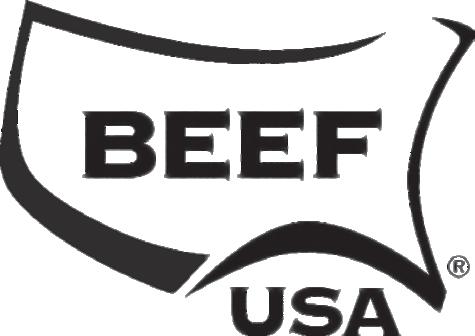
Cattle Producers Support House Ag Committee Farm Bill Framework. Senate Framework Harmful to Livestock Producers. Recently, National Cattlemen’s Beef Association (NCBA) Vice President of Government Affairs Ethan Lane responded to the release of Farm Bill frameworks from the House and Senate Agriculture Committees:
“We are very pleased with the Farm Bill framework released by House Agriculture Committee Chairman Glenn ‘G.T.’ Thompson. Since 2023, Chairman Thompson has gone to great lengths to meet with America’s cattle producers in every region of the country and craft a Farm Bill that supports their unique needs. We are especially pleased by the Chairman’s focus on voluntary conservation programs that are increasingly popular with cattle producers, animal health provisions that protect the U.S. cattle herd, and investments in food security that support our broader national security.
“Unfortunately, the Senate Agriculture Committee majority has failed to engage in the same level of outreach to real cattle producers, and their framework reflects that lack of producer input. While there are some bipartisan elements to the Senate proposal, there are many provisions that would be harmful to livestock producers.
We look forward to the House Agriculture Committee’s May Farm Bill markup and will continue engaging with members of the committees to advocate for the cattle industry.”
American and Australian Cattle Producers Commit to Partnership Through Joint Statement Signing. Recently, leaders of NCBA and Cattle Australia (CA) signed a joint statement at the Beef 2024 convention in Rockhampton, Australia, to further the two organizations’ partnership on issues related to cattle health, lab grown proteins, and sustainability.
“America’s cattle farmers and ranchers stand with Australia’s cattle producers and look forward to being partners in combatting foreign animal diseases, promoting sustainability, and ensuring proper oversight of lab grown proteins,” said NCBA President Mark Eisele, a Wyoming rancher. “As a rancher, I understand the importance of proactively talking about the good work we do in
both countries. Cattle producers provide significant benefits to the global population, from providing safe, wholesome real beef to implementing conservation practices that conserve millions of acres of prime wildlife habitat in the United States and Australia. This joint commitment will strengthen the partnership between American and Australian producers and support our efforts to educate the public on the benefits of raising cattle.”
“In signing the joint statement of priorities, we are encouraging the Australian and U.S. governments to join forces in combating devastating foreign animal diseases, promoting sustainable global trade that encourage efficient production practices; and ensuring science based food safety and marketing regulations of emerging food technologies such as lab grown proteins,” said CA Chair Garry Edwards.
The joint statement outlines both countries’ commitment to protecting cattle health and well being with vaccine banks to counter the threat of foot-andmouth disease (FMD). While FMD only impacts cloven hoofed animals and does not pose a risk to humans, the disease can still cause immense financial harm to farmers and ranchers. The United States has been FMD free since 1929, and Australia has been FMD free since 1872.
The statement also addressed the emergence of lab grown proteins. While there are no lab grown proteins that imitate beef currently authorized for retail in the U.S., several companies are attempting to bring these products to market. It is critically important that these products are properly vetted by regulatory authorities so they do not pose a potential risk to consumer health and food safety, and it is important that they are labeled in a way that is transparent to consumers so they can choose between naturally produced beef and lab grown proteins. Additionally, the statement supports efforts to continue sharing information on cattle industry sustainability and promoting the benefits of cattle production, such as improving wildlife habitat, natural water filtration, and greenspace protection benefits.
Following the statement signing, NCBA and CA will continue engaging with their respective governments to secure policies that protect cattle
health, recognize the cattle industry’s sustainability, and ensure proper oversight of lab grown protein.
American, Mexican, and Canadian Cattle Producers Sign Joint Statement and Send Letter Raising Brazilian Beef Concerns. Statement Strengthens Oversight of Lab Grown Protein and Promotes Cattle Health. Today, leaders of NCBA, the Confederación Nacional de Organizaciones Ganaderas (CNOG), and the Canadian Cattle Association (CCA) signed a joint statement to continue advocating for greater oversight of emerging lab grown proteins, protecting cattle from animal diseases, and promoting the sustainability of the cattle industry. This action builds on the recent statement signing with Cattle Australia and furthers the international partnerships between cattle producers.
“The signing of this joint statement is an important step that unites cattle producers across North America and around the world to promote and protect
efficient cattle production,” said Mark Eisele.
Following the joint statement signing, NCBA, CNOG, and CCA also signed a letter addressed to U.S. Trade Representative Katherine Tai, Secretaria de Economía Raquel Buenrostro Sanchez, and Minister of Export Promotion, International Trade, and Economic Development Mary Ng urging the U.S., Mexican, and Canadian governments to re-engage in opening markets for beef exports and provide stronger science based oversight of beef imports. Unfortunately, the three governments have expanded market access for beef imports while providing few opportunities for beef exports. If this continues, it will place North American cattle producers at a competitive disadvantage to other beef producers, including South America.
“I am also pleased that American, Mexican, and Canadian cattle producers are standing together to hold our trade partners accountable. For the United
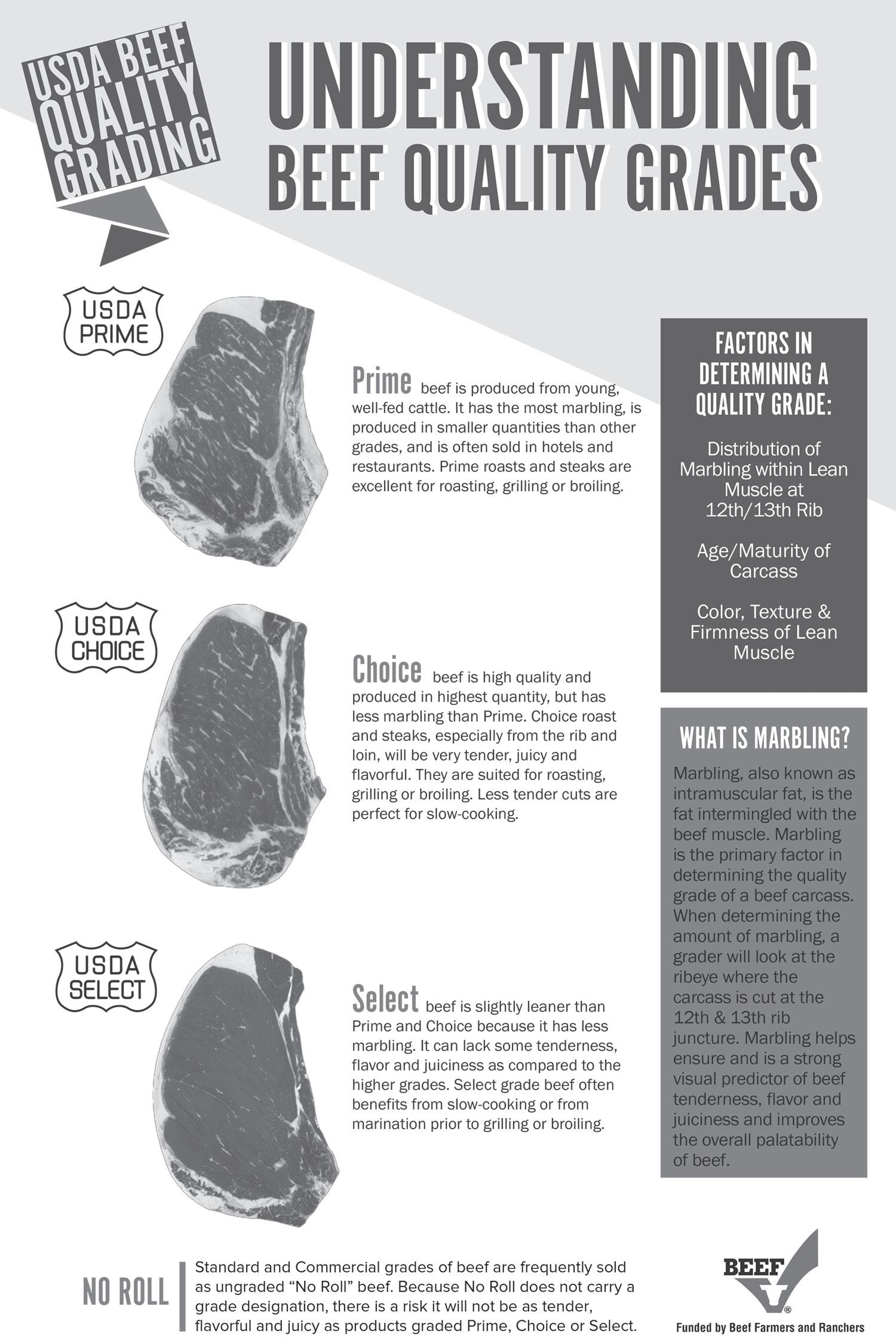
States, we have significant concerns that Brazil continues to have access to the U.S. market even though they have a repeated history of failing to disclose animal health concerns, including cases of atypical BSE,” Eisele added. “We continue urging our respective governments to protect the beef supply by blocking Brazilian imports. We are pleased to be partners on these issues and act as the voice of cattle farmers and ranchers to our respective governments.”
NCBA has previously raised concerns with Brazil’s access to the American market due to the country’s failure to report cases of atypical bovine spongiform encephalopathy (BSE) in a timely manner to the World Organization for Animal Health (WOAH). These atypical cases occur spontaneously, but countries are required to report any cases within 24 hours to WOAH. The United States has upheld the 24 hour requirement continuously, but Brazil has often delayed reporting cases from anywhere between 35 days and nearly two years. That lack of transparency increases the risk to food safety and makes Brazil an unreputable trading partner.
The letter and joint statement were signed at the CNOG 2024 convention in
Hermosillo, Sonora, Mexico, by NCBA
President Mark Eisele, CNOG President Sr. Homero García de la Llata, and CCA President Nathan Phinney.
House Farm Bill Includes Top Cattle Industry Priorities. Recently, NCBA announced support for the Farm Bill crafted and released by House Agriculture Committee Chairman Glenn “G.T.” Thompson (R-Penn.)—the Farm, Food, and National Security Act of 2024. The bill includes numerous priorities for America’s cattle producers, strengthens essential USDA programs, and protects farmers and ranchers from emerging threats.
“America’s cattle producers don’t ask for much from the federal government, but we do need a few essential programs that protect our industry from foreign animal diseases, reward voluntary conservation, and keep farms and ranches in business after a natural disaster,” said Mark Eisele.
“Chairman Thompson’s Farm Bill supports these critical needs for the cattle industry, and I am very grateful that the Chairman listened to groups like NCBA when writing this bill. We strongly support this legislation
Continued on the next page

New NEPA Rule Ignores Congress, Increases Bureaucratic Red Tape. Recently, the National Cattlemen’s Beef Association (NCBA) and the Public Lands Council (PLC) reacted to the White House Council on Environmental Quality’s (CEQ) final Phase 2 rule amending the National Environmental Policy Act (NEPA), which will make the process even more burdensome for livestock producers.
“In a time when the Biden Administration should be focusing on reducing regulatory burden on themselves and their partners, this new NEPA framework does the opposite. The Biden Administration largely ignored the requirements Congress passed in the Fiscal Responsibility Act that would streamline NEPA processes. Instead, this
final rule changes the focus of NEPA, making it more ambiguous, less targeted, and nearly impossible to navigate,” said Kaitlynn Glover, NCBA Executive Director of Natural Resources and PLC Executive Director. “This rule will make federal permitting, including for grazing permits, so much more difficult and expensive, and gives radical activists groups further license to weaponize NEPA against ranchers and rural communities.”
About the Public Lands Council. PLC represents 22,000 cattle and sheep producers who operate with federal grazing permits in the West. The PLC advocates for these western ranchers who preserve our nation’s natural resources while providing vital food and fiber to the nation and the world. Learn more at www.publiclandscouncil.org
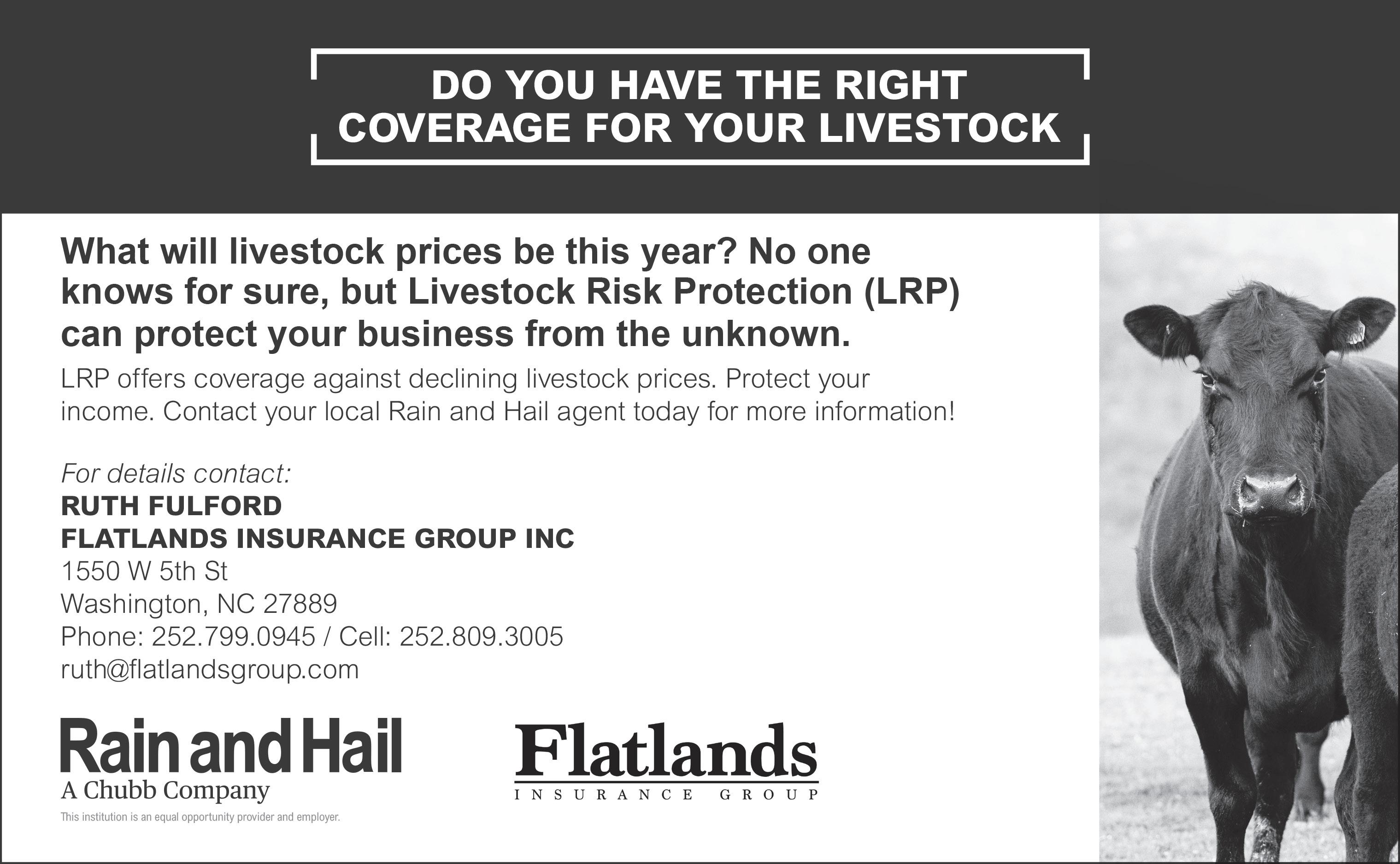
and urge Congress to pass this bill.”
Chairman Thompson’s Farm Bill is the result of months of stakeholder input and dialogue with farmers and ranchers. NCBA members have been involved in these conversations and had the opportunity to weigh in on Farm Bill priorities.
“Last summer, I had the chance to talk to Chairman Thompson during a Farm Bill listening session in Virginia.
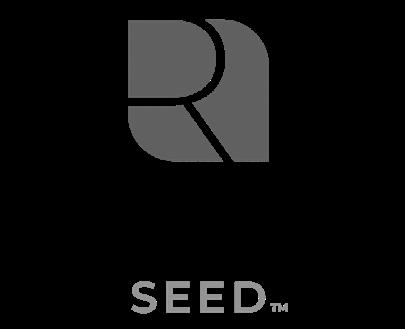
The provisions that cattle producers asked for during the listening session are now in the draft bill, and that’s a testament to Rep. Thompson’s commitment to listening to the producers who rely on the Farm Bill,” said NCBA Vice President Gene Copenhaver, a Virginia cattle producer.
“This is exactly how our system should be working with Congress, asking questions, listening to feedback, and using that
Renovo Seed showcases cover crops, forages, and conservation seed at the inaugural Renovo Rally. Renovo Seed is making waves in the seed industry with a first-of-its-kind test plot showcasing practical applications of cover crops, forages, and conservation seed.
Alex Guttormsson, Team Agronomist for Renovo Seed, says the plot will help farmers and ranchers feel more confident in the decisions they make when it comes to planting alternative forages and grazing crops.
“There’s not much for firm data regarding cover crops and conservation crops in terms of their agronomic impact on topics like organic matter, soil aeration, forage potential, and more. Renovo is investing in that research to take the guesswork out of diverse crop rotations for farmers and ranchers,” shared Guttormsson. “We’re testing things like nitrogen levels before and after cover crops and the nutritional value of dual purpose grazing cover crops. We’re collecting data to answer all the questions we typically get asked when someone is new to diverse crop rotations or wants to try something different on their operation,” he continues.
Livestock producers, crop farmers, and seed dealers are invited to attend the Renovo Rally event on July 2 in Brookings, S.D., to see the plot for themselves.
“We’re rallying around proven, practical solutions at the Renovo Rally plot day. It’s the first time we’ve done this event. We will have speakers sharing about incentive programs for forage production, how to achieve year round
knowledge to craft our laws. I am very pleased with this Farm Bill, and I hope members of Congress from both parties join together and get this bill passed.”
The House Farm Bill addresses several key priorities for the cattle industry, including:
• Protecting the cattle industry from foreign animal disease.
º Increasing funding for the National Animal Health Laboratory Network (NAHLN), National Animal Disease Preparedness and Response Program (NADPRP), and National Animal Vaccine and Veterinary Countermeasures Bank (NAVVCB).
º Strengthening resources for the U.S. Customs and Border Protection “Beagle Brigade” dogs that screen shipments, luggage, and people coming into the United States to prevent the spread of pests and disease.
while also supporting popular programs like the Environmental Quality Incentives Program (EQIP).
• Recognizing that food is national security by directing the Secretary of Agriculture to review the cybersecurity, foreign dependence, and supply chain risks to American agriculture.
• Upping support for feral swine eradication efforts by providing $150 million of funding for USDA-APHIS and USDA-NRCS.
• Boosting local processing capacity by incorporating the A-PLUS Act and allowing livestock markets to invest in small meatpacking facilities.
The bill also includes numerous other provisions that support cattle producers and strengthen our food and national security.
grazing, the agronomy of cover crops, how cover crops and forages can have a practical application on your operation, and more,” shares Justin Fruechte, Ag Product Expert for Renovo Seed.
Shannon Kubik, Brand President for Renovo Seed, says this is one of many ways Renovo is committed to simplifying diverse crop rotations for farmers and ranchers.
“Renovo is all about questioning the status quo. We heard our customers say they wanted more data about cover crops and forages, so that’s what we’re giving them. We’re committed to investing in plots like this so we can arm our customers with practical applications of forage, cover crop, and conservation seed on their farms and ranches.”
Registration for the Renovo Rally is encouraged. For more information and to register for the first-of-its-kind plot event, visit www.renovoseed.com/plot/
About Renovo Seed. Renovo Seed is a visionary in the seed industry, focusing on positive land use solutions. Backed by Millborn’s powerful supply chain, Renovo Seed works to improve the resiliency of the land for generations to come with a robust seed lineup and unmatched team of experts who design practical, tailored solutions for farmers, ranchers, and landowners. For more information, visit RenovoSeed.com
About Millborn. With high quality seed products, a unique, vertically integrated supply chain, and a team of experts who understand the industry, Millborn is the single source for agriculture, conservation, reclamation, and commercial seed needs. For more information, visit MillbornSeeds.com
• Improving disaster relief programs to deliver payments to cattle producers by expanding the Livestock Indemnity Program to cover 100 percent of the cost of an attack by a federally protected predator and allowing for supplemental payments for the loss of unborn calves.
• Protecting voluntary conservation and eliminating government mandates
About the National Cattlemen’s Beef Association. NCBA has represented America’s cattle producers since 1898, preserving the heritage and strength of the industry through education and public policy. As the largest association of cattle producers, NCBA works to create new markets and increase demand for beef. Efforts are made possible through membership contributions. To join, contact NCBA at 866-BEEF-USA or membership@beef.org.
This article serves as an open call for nominations for the 2025 Clemson Bull Test. The deadline for all nominations is July 1. Priority is given to consignors who have participated in the Clemson University Bull Testing Program in the past two years, then new in-state consignors, and finally, new out-of-state consignors. The nomination forms, health forms, and due dates can be found at our Clemson Extension Bull Test website at www.clemson.edu/extension/bulltest/index.html.
We had an extraordinary 2024 Bull Test sale with our second highest sale average of $4,921. Bulls went home to three different states with new and previous buyers. Prices were high, following the trends of our current cattle market. Buyers proved that selecting good bulls is at the top of their priority list.
We will continue utilizing the Vytelle (GrowSafe 6000) feed system to allow us to measure individual feed intake for each bull and calculate relative feed efficiency. Feeding an animal is one of the biggest input costs that a producer incurs. This is why genetics that are proven to have higher feed efficiency is key to reducing input cost and moving your operation forward.
When selecting bulls you would like to nominate, please evaluate structural soundness and disposition. Requirements for nominated bulls can be found in the nomination form. Please compare your animal’s genetic profile to their breed averages to ensure it is competitive.
Read through the nomination and health forms carefully and get your nominations in early. Interest is high, and you do not want to miss this opportunity. The test will begin in mid-August. For more information, please contact Lindsey Craig at lcraig@clemson.edu
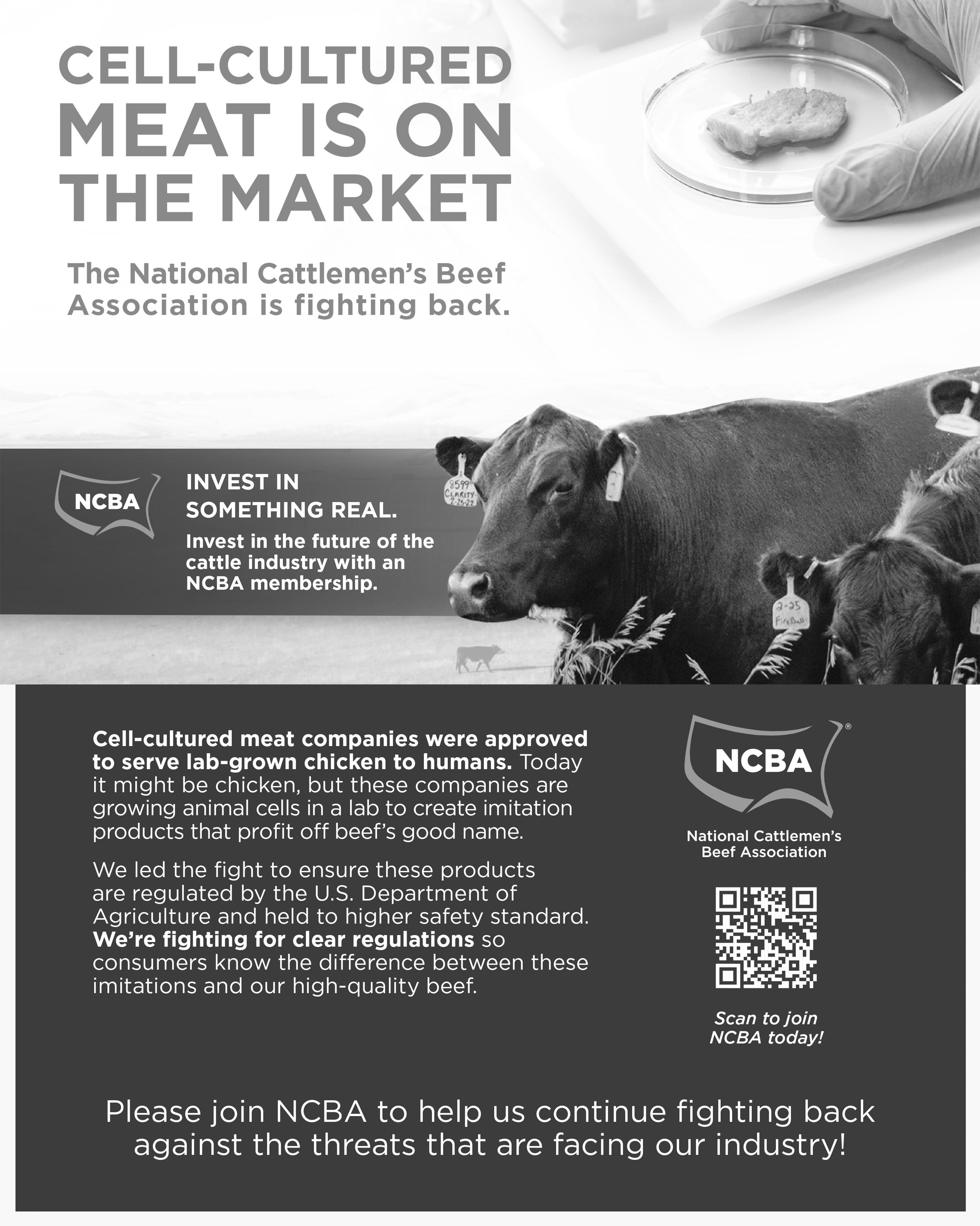

Archbold-Alltech research alliance results confirm environmental benefits of grazing ruminants. New six part video series explores the cattle grazing carbon cycle and the role of cattle in mitigating climate change. Alltech and Archbold formed a strategic research alliance in 2019 to jointly develop beef management approaches, specifically to increase the quality and quantity of beef produced in subtropical regions while maintaining and enhancing the environment. The Archbold–Alltech Alliance brought together scientists from two different disciplines — ecologists from Archbold and ruminant nutritionists from Alltech — to understand the impact that cattle production at Archbold’s Buck Island Ranch has on the ecosystem and the ability to sequester carbon.
Over the past five years, the research alliance has created a model for estimating the ranch’s carbon footprint, and the results have been astounding. On average, Buck Island Ranch sequesters
more carbon each year than it emits. It is a net carbon sink.
This research shows that grazing ruminant animals on land benefits the environment and improves carbon cycling. The results confirm that carbon neutral — and even net positive — beef production is possible at Buck Island Ranch, a 10,500 acre ranch in Lake Placid, Fla., and that same potential likely extends to environments around the world.
To showcase the work taking place at the Buck Island Ranch, the ArchboldAlltech Alliance has released a six part Planet of Plenty video series that explores the cattle grazing carbon cycle, the role of carbon sequestration in mitigating climate change, and other insights the collaborative research alliance has unveiled.
“This research alliance brings together scientists from several disciplines to collaborate on climatechange solutions and demonstrate agriculture’s great potential to positively
shape the future of our planet,” said Dr. Mark Lyons, president and CEO of Alltech. “These exciting findings at Archbold’s Buck Island Ranch prove that we capture more carbon when cows are grazing the land. That is profoundly powerful.”
“Every year, we sequester 1,201 tons of CO 2 equivalent at Archbold’s Buck Island Ranch and all of this work is scalable to other parts of the world,” said Dr. Betsey Boughton, director of agroecology at Archbold. “The narrative people have heard is that cows are bad for the environment, but grazing animals can actually change the function of grasslands. Cows are eating the grass and not allowing as much decomposition to happen on the ground. Without cows, we actually see more carbon emitted.”
“We’re trying to let people know that it is not just this black and white answer,” she added. “It is complicated, and we need to think about the whole story.”
Though it is a complex issue, the research has shown that agriculture can be one of the most powerful weapons in the fight against climate change.
This collaboration has discovered a deeper understanding of the grazing cattle carbon cycle, one that is not solely
focused on greenhouse gas (GHG) emissions from the animal but also on natural GHG emissions from the land and the sequestration of carbon in the soil. Discussions around GHGs and global warming often center around agriculture emissions, but it is important to think beyond emissions and look at the full cycle.
The soil’s ability to sequester carbon is a critical part of the story. Alltech Crop Science and Ideagro, which joined the Alltech family of companies in 2023, are studying how microbial populations can enrich soil chemistry and nutrient density, leading to increased carbon sequestration in the soil. The potential to capture carbon in the soil presents a significant opportunity for the agri-food community to embrace its critical role in combatting climate change while simultaneously improving soil health, boosting crop yields, and promoting biodiversity.
For more information and to watch the six part Planet of Plenty video series, visit www.alltech.com/planet-of-plenty/ stories/video/can-cattle-combat-climatechange
Alltech to distribute and sell Agolin direct in the U.S. and Canada, partner with Feedworks USA. Alltech is pleased



to announce that the company will serve as the primary importer and distributor of Agolin products in the United States and Canada as of May 1. Agolin’s high quality essential oil blends are scientifically proven to optimize feed intake and performance, including improved milk and meat production, for both ruminant and non-ruminant animals.
“We are dedicated to supporting producers with the best available nutritional technologies to achieve more milk and meat while reducing their environmental footprint,” said Martha Baker, Alltech lead for Agolin.
Agolin Ruminant was the first feed additive certified by The Carbon Trust for methane reduction in ruminants (2018). Today, Agolin Ruminant is included in the diets of more than two million dairy cows worldwide, and leading carbon methodology owners Verra and Gold Standard recognize it in their international climate protection project registries.
Concord Agriculture Partners has also chosen Agolin Ruminant to create a new carbon inset project, which guarantees that participating dairy producers will receive an industry leading 85 percent of the gross value of the carbon asset.
Dairy producers are already reaping the rewards of using Agolin products in their nutrition programs. In December 2023, U.S. dairy farmers who used Agolin Ruminant to create verified emissions reductions were awarded nearly $3 million in carbon asset payments, in addition to the benefits of improved feed efficiency and an increase in fat and protein yield.
Feedworks USA introduced Agolin products to the North American market and has led the adoption and growth of these landmark nutritional technologies. In 2022, the company introduced the first enteric carbon project using Agolin in the U.S., not only reducing the carbon footprint of those dairies but providing a significant additional income to those farms. The Feedworks team will continue to support and distribute Agolin in
partnership with Alltech.
“We are all excited to have Alltech partner with us in continuing to grow the market for these exciting products,” said Peter Williams, one of the partners with Feedworks USA. “Agolin ruminant products, in particular, are heavily researched and show productivity and efficiency benefits to U.S. dairies worth more than $10 per $1 cost. In addition, farmers can cover most of the cost with carbon credits. At present, well over half a million dairy cows are being fed Agolin Ruminant in the U.S., and this number is set to continue to grow rapidly.”
“Feedworks is a valued partner to us, having established the Agolin business and distribution in the United States. We look forward to continuing our partnership with them, as we expand access to Agolin for U.S. producers,” said Baker.
Alltech acquired a majority interest in Agolin SA in May 2023. Founded in Switzerland in 2006, Agolin has developed and produced plant based nutrition solutions that have been scientifically proven to improve herd performance, profitability, and sustainability. Alltech plans to begin producing Agolin in its U.S. manufacturing facilities by mid-2025.
About Alltech. Founded in 1980 by Irish entrepreneur and scientist Dr. Pearse Lyons, Alltech delivers smarter, more sustainable solutions for agriculture. Our diverse portfolio of products and services improves the health and performance of plants and animals, resulting in better nutrition for all and a decreased environmental impact.
We are a global leader in the agriculture industry. Our team produces specialty ingredients, premix supplements, feed, and biologicals backed by science and an unparalleled platform of services.
Strengthened by more than 40 years of scientific research, we carry forward a legacy of innovation and a unique culture that views challenges through an
entrepreneurial lens. As a private, family owned company, we adapt quickly to our customers’ needs and focus on advanced innovation.
We believe agriculture has the greatest potential to shape the future of our planet. Our more than 5,000 talented team members worldwide share our purpose of Working Together for a Planet of Plenty. Together, we can
provide nutrition for all, revitalize local economies, and replenish the planet’s natural resources.
Headquartered just outside of Lexington, Ken., Alltech serves customers in more than 120 countries, has five bioscience centers, and operates more than 80 manufacturing facilities across the globe. For more information, visit www.alltech.com
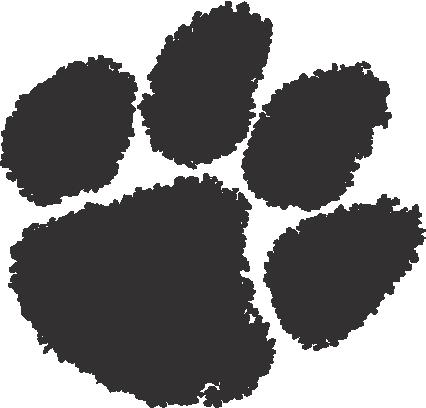
The Clemson Spring Dairy Show and Junior Dairy Weekend were held on March 20-24 at the T. Ed Garrison Arena. This show has become the cornerstone for dairy youth activities across the state and one of the premier shows in the Southeast. Activities included the state 4-H and FFA dairy judging contests, state FFA dairy handlers contest, Let’s Talk Dairy speech contest, youth fun night, an awards dinner, railbird judging, jackpot showmanship, Carolina Classic Sale, and two full days of showmanship and confirmation classes.
Over 420 head of cattle filled the cattle complex and covered arena at the T. Ed Garrison from ten states, including South Carolina, North Carolina, Florida, Georgia, Maryland, Alabama, Virginia, Pennsylvania, Tennessee, and Mississippi. With all five breeds represented, youth participating in the judging contests
were able to see and evaluate exceptional classes from all breeds. Over 100 South Carolina youth participated in the judging contest along with teams from other states and colleges for practice due to the quality of this contest. Although the conformation classes are open to all, the focus of this event continues to be the youth. Over ⅓ of premiums were paid out to the 117 youth who participated in showmanship and 16 who participated in the Lets Talk Dairy speech contest. A $1,000 scholarship is also given out in the senior scholarship class. Additional classes, events, and/or premiums are added each year as funds are available to help support these youth. Events like this would not be possible without great volunteers and sponsors, and the Clemson Spring Dairy Show Committee would like to thank all those who helped make the show a success.

How Soon Will a Cow Breed Back After Calving? We expect a lot from a cow. She spends roughly 283 days in gestation, delivers a calf, and then we prepare her for breed back and expect her to conceive problem free during her first heat. That is a lot for the body to handle, and the cow does it, hopefully, year after year after year.
The time it takes for a cow to breed back after calving is often referred to as the postpartum interval. Its length of time varies based on several factors, including the cow’s health, body condition, age, breed, nutrition, and management practices.
So, how soon will a cow breed back after calving?
On average, most cows are expected to breed back within 45-90 days after calving. This period allows the cow’s
reproductive system to recover and prepare for the next breeding cycle. A shorter postpartum interval contributes to a consistent calving interval, allowing the cow to calve at approximately the same time each year.
Keeping your herd on the same calving interval also keeps your calf crop consistent and uniform. This helps with weaning and marketing as buyers look for calves of consistent age, size, and weight at weaning and sale time.
Factors That Influence Postpartum Interval
Body Condition - Cows with a good body condition score at calving tend to have a shorter postpartum interval. If a cow is underweight or in poor condition, it may take longer for her to regain reproductive function. Get your cows ready for breeding with a good plan of
nutrition.
You don’t want to have them be too fat or too thin. Although they are calving during spring, when grasses are at their lushest, remember that grass is often watery and may not contain the DM needed for the cow. You might need to supplement with added grain or hay, especially since they are raising a calf and preparing for breed back simultaneously.
Age - How soon will a cow breed back after calving? It’s often going to depend on their age. First calf heifers may take longer to breed back compared to mature cows because they are still growing and recovering from their first calving experience.
Remember, as nutrients are partitioned out, growth is a priority. Reproduction is the lowest priority for younger females. So, you need to provide for your young females nutritionally to support long term reproductive success.
Nutrition - Adequate nutrition plays a crucial role in reproductive recovery. Cows receiving proper nutrition and mineral supplementation are more likely
to breed back sooner. This is where we can help your herd with a vitamin and mineral supplement like VitaFerm Concept•Aid. The Concept•Aid products promote effective, easy breeding when fed 60 days pre-calving through 60 days post breeding. Concept•Aid products contain:
• AO-Biotics Amaferm, a prebiotic research proven to enhance digestibility.
• Organic copper, iodine, and zinc for maximum bioavailability, innate immunity, and hoof health.
• High levels of Vitamin E to support reproductive tract repair and milk quality.
Available in a variety of formulas, in both loose and tubs, VitaFerm makes a Concept•Aid formula for every management scenario. Find the Concept•Aid best for your operation with our Concept•Aid Product Navigator.
Breed - Some breeds or genetic lines may have a shorter or longer postpartum interval due to differences in reproductive efficiency. Record keeping is an important tool to track which genetic lines do indeed breed back faster. If you have continued challenges with the same cow each year,

it might be time to consider culling her.
Management Practices - Proper management, including minimizing stress, providing adequate care, and ensuring a suitable breeding environment, can influence the postpartum interval. This includes providing shelter and space as needed, fresh, plentiful water, and ensuring that your herd remains healthy postpartum.
Estrus Cycle Resumption - After calving, cows undergo a period of reproductive recovery known as the “anestrus period.” This is the time between calving and the resumption of estrus (heat cycles). Factors such as nutritional status, stress, and body condition can affect the duration of this period.
Estrus Synchronization - Some producers use estrus synchronization protocols to induce estrus and shorten the postpartum interval. This can help manage breeding more efficiently and achieve desired calving intervals. Using CIDRS or other hormone injection techniques are the most common synchronization methods. To discover the protocol right for you and your operation, work with your veterinarian, your beef genetic supplier, or reproduction specialist.
At BioZyme, we believe in care that
comes full circle for every animal. That is why we want to help you determine how soon a cow will breed back after calving. To ensure cows breed back in a timely manner, it’s essential to focus on the following:
• Maintain cows in optimal body condition through proper nutrition.
• Reduce stress and provide a clean and comfortable environment.
• Monitor cows for signs of estrus (heat) and use appropriate breeding methods (natural service or artificial insemination).
• Implement breeding protocols that align with herd management goals.
• Ensure cows receive adequate mineral and vitamin supplementation –VitaFerm Concept•Aid.
If a cow doesn’t breed back within the expected timeframe, it may be necessary to evaluate her health, nutrition, and management to determine any issues and implement corrective measures.
Gain Smart: An Ideal Cattle Weight Gain Supplement. Soon, if not already, calves will be turned out to grass. The end goal is to have healthy, efficient pounds. Gain Smart is a cattle weight gain supplement that can help producers achieve that goal, and we know that because we have the research to prove it.
In late March, an illness affecting dairy cattle in Texas, New Mexico, and Kansas was officially diagnosed as Highly Pathogenic Avian Influenza (HPAI). Unlike HPAI in poultry, the mortality rate in dairy cattle for HPAI is presumed to be zero. HPAI has only been detected in lactating dairy cattle. In early April, HPAI was diagnosed close to home on a dairy in North Carolina. Most recently, Colorado became the ninth state to confirm HPAI in a dairy herd, joining Idaho, Kansas, Michigan, New Mexico, North Carolina, Ohio, South Dakota, and Texas.
The Dairy Industry and USDA are on high alert to limit the spread of HPAI in dairy cattle. In response to the growing concern and an increasing number of states and herds being infected, the USDA issued a federal order requiring testing prior to the movement of dairy cattle across state lines. As of April 29, all lactating dairy cows must have a negative test for HPAI within seven days of moving across state lines. Some states have more stringent restrictions dependent on their state veterinarian or the presence of a positive herd.
To ensure food safety and the concerns of the public, the USDA and the U.S. Food and Drug Administration have been testing milk, eggs, and meat for the presence of the virus. It has been proved through testing that the pasteurization process kills the virus in eggs and milk. Numerous tests on dairy products and infant formula on the shelves has showed no threat to humans. The Food Safety and Inspection Service also confirmed after collecting and testing ground beef samples from states with confirmed positive animals that meat is safe.
The Benefits of a Cattle Weight Gain Supplement - Cattle cannot thrive on grass alone. Although the thick, lush grasses often provide many nutrients, they don’t provide everything necessary for young calves to grow and perform. When you are paid on pounds and performance, don’t you want your cattle to grow efficiently and remain healthy? That’s why it is vital to provide a cattle weight gain supplement.
Providing access to mineral and vitamin supplements is essential for maintaining overall health and supporting optimal growth and weight gain in cattle. Ensure that cattle have access to a balanced mineral mix containing essential nutrients such as calcium, phosphorus, magnesium, and trace minerals.
The combination of the essential nutrients and the AO-Biotics Amaferm found in Gain Smart can help your calves increase their weight gain by at least 0.25 pounds per day. Are you ready to learn more?
What is Gain Smart? Gain Smart is a line of vitamin and mineral supplements
for stocker cattle that promotes healthy, economical pounds. Gain Smart offers four different free choice vitamin and mineral supplement formulas to fit any feeding scenario.
All formulas offer the following key benefits:
• Powered AO-Biotics Amaferm, a prebiotic research proven to enhance digestibility.
• Include organic copper, iodine, and zinc for maximum bioavailability and hoof health.
• Provide nutritional support for a healthy immune system.
The four Gain Smart formulas for stocker cattle include:
• Gain Smart Stocker, designed to maximize efficient gain.
• Gain Smart Stocker Wheat, designed to maximize efficient gain on wheat or small grain pasture.
• Gain Smart Stocker HEAT, designed to maximize efficient gain when temperatures are above 70ºF. Contains HEAT technology, a combination of essential oils and garlic, to support

Embyos come back in 8 days for placement or direct thaw freezing on-farm.
Can do on donors aged 8 months and older, up to 120-150 days pregnant Doesn’t interfere with pregnancy.
Pregnant cows work really well, so the cow doesn’t get out of her production group.
Can do a donor every 2 weeks.

animals when heat and insects are a challenge.
• Gain Smart Stocker Balancer RU1600, designed to maximize efficient gain and balance high grain diets when mixing TMR rations. Includes rumensin for improved feed efficiency.
For Best Results, Use the Program - The Gain Smart mineral is part of a three step program to help producers and backgrounders increase gains and keep calves healthy. Include the VitaFerm Cattle Drench and VitaFerm Stress Tubs as the first two steps of the program on fresh weaned or just received calves to maximize your results.
Step 1: Transition with VitaFerm Cattle Drench - Weaning and receiving almost always means calves are faced with several immediate changes: environment, herd groups, and nutritional intake, all while being separated from their mother or placed into new surroundings. The times can be stressful for the calves. However, the same period can also be stressful for the producer who strives to keep the calves healthy, eating, and growing all during this time of transition.
Keeping calves healthy at weaning and turnout not only improves animal comfort and well being, it helps with increased rate of gain. Additionally, it can also reduce medical expenses and the cost of labor to treat sick calves.
When running your calves down the chute at weaning or receiving, be sure to give them a dose of VitaFerm Cattle Drench, a drench for cattle designed to support digestive health before, during, and after challenges.
Step 2: Start Calves Off Right with VitaFerm Stress Tubs - While the transition is over, the first few weeks can still be slightly stressful for these young calves. Start them off right and keep their digestive system working with VitaFerm Stress Tubs, formerly known as Vita Charge Stress Tubs.
During the first 7-21 days, the Stress

Tubs will:
• Promote feed and water intake.
• Help trap bad bacteria, limiting their ability to do harm with the help of MOS (mannan oligosaccharides).
• Increases digestibility with the Amaferm to maximize the energy value of feed for more gains.
Step 3: Grow Stockers or Replacement Females with Gain Smart Mineral - Now that you’ve got your calves transitioned and started, it’s time to give them a cattle weight gain supplement backed by years of research. Wouldn’t an additional quarter pound of gain per day look good on those calves you’ve just processed and turned out?
Results Backed by ResearchAmaferm, the key ingredient in most of our BioZyme products, is research proven to increase digestibility. As a prebiotic, it stimulates the growth of beneficial gut microbes. Research shows that it increases average daily gains by .25 pounds per day.
In a 2016 University of Tennessee – Martin research trial, 48 calves were purchased at a sale barn. After hauling them for about 2 hours, they were fed hay and water overnight before processing. All calves were stressed from hauling, being in a new environment, and heat.
The calves were divided into two groups. A control group and the trial group that was given 1 ounce of Cattle Drench with the Vita Charge Technololgy during processing.
In addition to Amaferm, Vita Charge Cattle Drench contains MOS (mannan oligosaccharides) to help normalize the gut microflora and support the immune system. Drench also includes enzymes to generate a more rapid digestive response.
Our Research - The trial group of calves were also turned out to pens that included VitaFerm Stress Tubs with the Vita Charge Technology for three weeks. Stress Tubs are designed to support digestive health and intake. They also contain Amaferm and MOS. Additionally, they contain a probiotic to help restore the gut microbiome.
Cattle provided with Cattle Drench with the Vita Charge Technology upon arrival recovered more quickly. This is shown with a significant increase in average daily gain (ADG) during week one. The control group actually lost weight during the first week.
The cattle that received Amaferm gained 1.54 pounds/head/day during the first week. Conversely, the control group lost .52 pounds/head/day during that first week. By week three, the Amaferm-fed
cattle had a .75 pound advantage.
More about Amaferm - Amaferm is research proven with more than 111 published and/or presented research studies proving its increase in digestibility and, ultimately, its impact on the animal. Because BioZyme cares about all animals, our family of brands includes products for cattle, horses, sheep, goats, pigs, dogs, and cats. Amaferm is the basis of our research proven supplements at BioZyme. We want to provide the best cattle weight gain supplement. That’s why we developed Gain Smart powered by Amaferm.
About BioZyme Inc. BioZyme Inc., founded in 1951, develops and manufactures natural, proprietary
products focused on animal nutrition, health, and microbiology. With a continued commitment to research, BioZyme offers a complete line of feed additives and high density, highly available vitamin, mineral, trace mineral, and protein supplements for a variety of animals, including cattle, pigs, poultry, sheep, goats, horses, and dogs. BioZyme brands include AOBiotics, VitaFerm, Gain Smart, Sure Champ, Vitalize, DuraFerm, and Backyard Boost. With headquarters in St. Joseph, Mo., the company reaches a global market of customers that stretches into countries across five continents. For more information about BioZyme, visit www. biozymeinc.com
N.C. Cattle Receipts, Trends, and Prices for the Month of APRIL 2024
In 2007, the NCCA Membership Committee passed a resolution to recognize all NEW members, defined as someone who has never been a member or has rejoined after a break in membership, in The Carolina Cattle Connection. Below are NCCA’s new members for the last month:
Raymond Y. Borges Esteban – Florida
Emily Broshious – South Carolina
Anna Massey
– M and H Farms – South Carolina
Laura McPherson – Virginia
Alexander County
Trinity Frayer
Anson County
Eric Canipe
Caldwell County
Samantha Hohm
Cleveland County
Reagan Carver
Craven County
Lainey Meekins
Duplin County
Davis Byrd
Sara Lopez
Joseph A. Simpson
Harnett County
Makayla Jackson
Emily Mullinix
Hertford County
Lee Thompson – Parkerwoods Farms
Recently, National Cattlemen’s Beef Association President Mark Eisele, a Wyoming rancher, issued the following statement in response to the U.S. Department of Agriculture’s (USDA) final traceability rule:
“USDA’s final traceability rule updates the existing requirement for animal identification that has been in place since 2013, switching from solely visual tags to tags that are both electronically and visually readable for certain classes of cattle moving interstate. Many producers are already familiar with using these visual tags and under the new rule, they will instead use electronic tags. NCBA has worked hard to secure $15 million in funding for producers to reduce the cost of implementing this change. We also remain committed to safeguarding producers’ private data and continuing to reduce the cost of ear tags for farmers and ranchers. Our industry faces a tremendous threat from the risk of a future foreign animal disease on American soil. To avoid devastating financial losses during a potential outbreak and to help producers quickly return to commerce, we need an efficient animal disease traceability system.”
Background - The USDA final traceability rule amends a previous 2013 rule that requires sexually intact cattle 18 months of age or older, rodeo and exhibition cattle, and dairy cattle moving interstate to have an official form of animal identification. The 2013 rule, which cattle producers already comply with, instituted visual ID tags for interstate movement. The new final rule switches producers to electronic ID tags, which are easier to read and would yield a faster traceability response during a foreign animal disease outbreak. The cattle industry faces immense threats from foreign animal diseases, which can be carried into the country by individual travelers, on contraband products, or through regular commerce. It is estimated that a foot-and-mouth disease outbreak in the U.S. would lead to $221 billion in economic losses. Only 11 percent of the U.S. cattle herd is impacted by this final rule. The rule will not take effect for six months to provide time for producers to prepare.
***In North Carolina, tags can be secured from N.C. Farm ID by calling 919-707-3250 or by emailing ncfarmid@ncagr.gov. Information will be collected, and a Premise ID will be assigned. Tags can be obtained afterwards.
Iredell County
Hanna Ball
Brandon Ballard – Oakley Equestrian
Hannah Loftin
Johnston County
Jason Gipe – NCSU CALS
Morgan Simpson
Jones County
Laura Smith
Northampton County
Gerald Lee – Lee & Lee Farms
Pitt County
Harley Elks – Robin Hudson Farms
Rowan County
Bo Stikeleather – 4S Cattle Company
Sampson County
Kylie Peterson
Joanna Rackley
Yulonda Shania Rogers
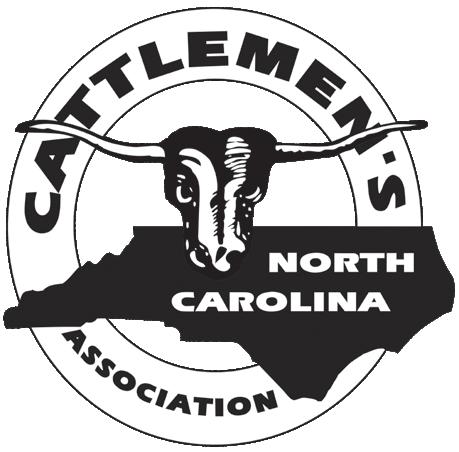
Scotland County
Elizabeth Stack
Stokes County
S. Dwayne Livengood – Dalton Angus Harrison Parks – H.G.P. Cattle
Wake County
George Boyles – Southern Wake Cattle Co.
Wayne County
Abigail Sliepen
Wilkes County
Henry Church
James M. Williams – Creekside Farm
Wilson County
Cameron Woodard

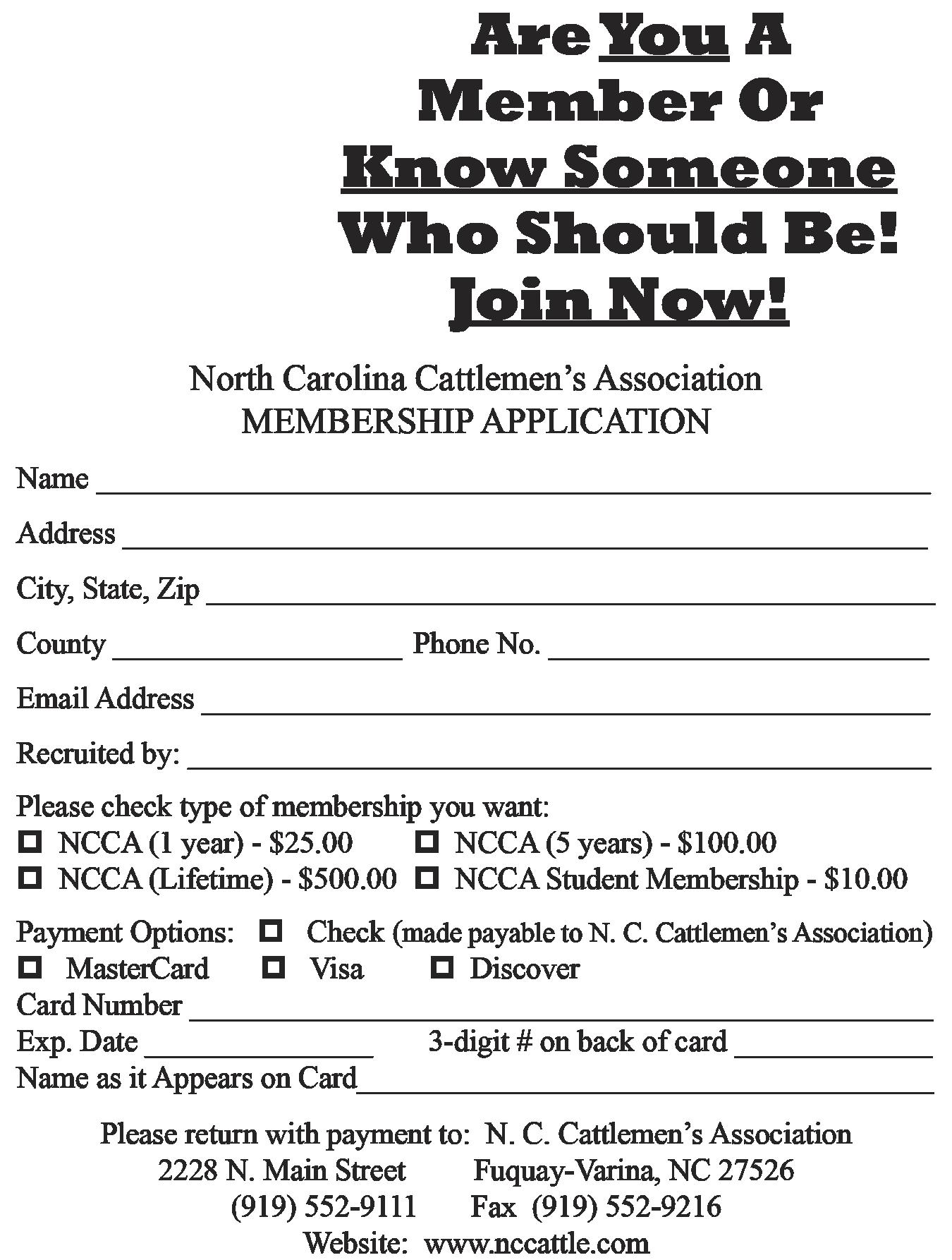

1 MILE OF PASTURE MANAGEMENT FENCING SUPPLIES AWARDED TO THE NCCA COUNTY CATTLEMEN’S ASSOCIATION
RECRUITING THE MOST NEW MEMBERS IN 2024
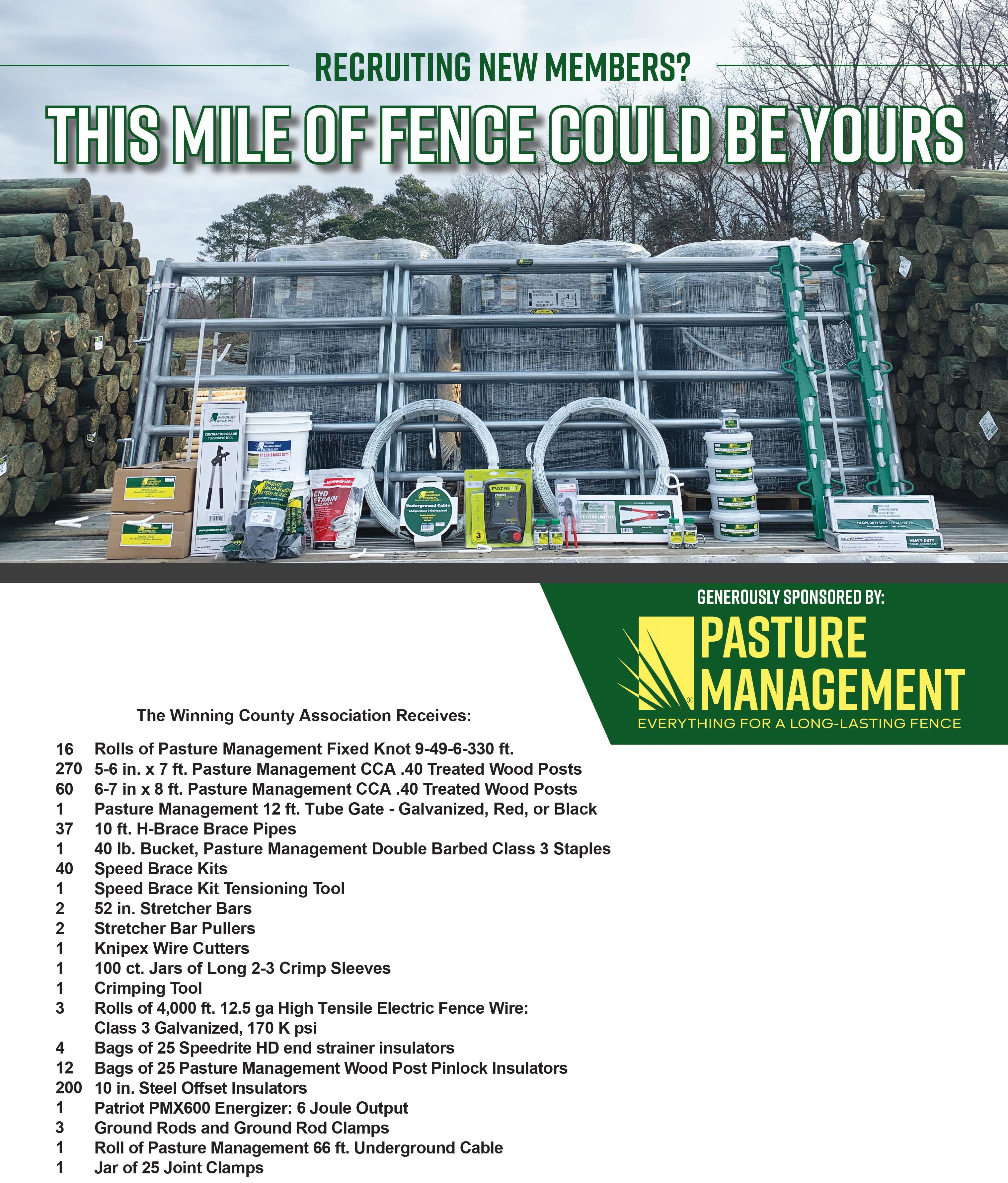

CONGRATULATIONS TO THE MACON COUNTY CATTLEMEN’S ASSOCIATION
2023 MILE OF FENCE WINNER
Growing up on a farm in Jamaica, pitmaster Rasheed Philips learned from his father, a fisherman, how to repair nets, patch boats, and cook over an open fire. Those early experiences planted seeds of inspiration, which are now flourishing. The flames sparked a desire in Philips to study simple techniques to prepare meat, such as smoking and indirect cooking.
“I’ve been a pyro since I was a kid, but I learned to focus,” Philips chuckled.
A popular pitmaster as seen on Netflix’s hit series, American Barbecue Showdown, Philips works closely with NCBA, a contractor to the Beef Checkoff, sharing the taste, versatility, and nutrition of beef with his followers through the Beef. It’s What’s For Dinner. brand. When asked what draws Philips to beef as an ingredient, his passion is evident, exclaiming, “I love it!”
“Beef tastes so good and is so versatile. It is the only meat with enough moisture to sustain high temperatures and still taste good,” he said.
Philips reminisces about family dinners as a child, enjoying ox tail prepared by his grandmother. He suggests that simple seasonings like salt or fresh herbs and spices are all beef needs to awaken taste buds.

Y’all have stumbled on the best place to advertise expert A.I., superior genetics, the best in purebreds and outstanding farm supplies. Check the Classifieds in this issue!
In February 2024, Philips attended his first CattleCon in Orlando, Florida. His experience was enlightening, and he learned different aspects of the industry, from multi-generational ranchers and small businesses to meat scientists and nutritionists.
“This is not just a business, but a way of life for producers,” he reflected. “I love not only learning about the industry’s history, but also how the next generation is changing for the future.”
Besides getting fitted for his first cowboy hat, Philips enjoyed his time speaking with producers from around the country, understanding their perceptions of chefs, and learning how he could use his position and platforms to promote beef. Like many in the industry, Philips sees misinformation as a concern.
“It is amazing how misinformed the masses are,” he said. “I want to be that ‘cool uncle’ sharing accurate information about beef in a way that people will listen and understand.”
Philips is keenly focused on crafting educational programs for students that provide hands-on, engaging curriculum about agriculture and proper nutrition. He knows the work done today will make a significant impact on generations to come.
Philips finds this Chinese Proverb fitting: “The best time to plant a tree was 20 years ago; the second best time is today.”
Ultimately, Philips is excited to be part of the beef family, sharing genuine stories and doing his part to deliver a positive beef message to the masses.
Philips wasn’t the only culinary dynamo to attend CattleCon24. The two new executive chefs for the Beef Checkoff funded Culinary Center at NCBA traveled to the Sunshine State to experience their first cattle industry convention. While chefs Dagan Lynn and Paul Schutt have been to numerous food shows in their careers, CattleCon was an eye opening experience for both of them.
“Wearing my chef coat at CattleCon was like my calling card,” said Lynn. “It helped to break the ice and was an invitation for people to come and talk.”
Although not new to cooking beef, Lynn and Schutt are newcomers to the cattle industry, and CattleCon provided an immersive experience into what it takes to raise cattle and produce beef
for consumers. Cattlemen’s College and educational sessions offered the chefs a glimpse into the production side of the business, and Checkoff meetings were particularly beneficial.
“Seeing the level of engagement by producers in Checkoff meetings was insightful,” said Schutt. “There is so much passion and information shared in those meetings, and producers truly demonstrated how invested they are in the industry.”
Both chefs commented on the level of care producers show in every aspect of their operations. Lynn was interested in learning about day-to-day challenges producers face and how the Beef Checkoff helps drive demand for beef.
“Our cattle receive the best care, and our farmers and ranchers are providing them with the most comfortable lives,”
said Lynn. “Their conviction of beliefs and values shine, and they are thoughtful, caring, and giving people.”
Lynn and Schutt agree that beef is the most versatile protein available, and there is an exceptional story to share. The chefs are looking forward to collaborating with ranchers and understanding what they would like to see from the work in the Culinary Center. Whether it is discussing proper cooking techniques, developing new recipes, or explaining different cuts, Lynn and Schutt are excited to promote beef’s benefits as well as be ambassadors for the industry.
“U.S. cattle producers care about their environment, the well being of their animals, and putting nutritious food on families’ plates,” Schutt concluded. “It is our job to help share their passion by creating memorable eating experiences.”
S.C. Cattle Receipts, Trends, and Prices for the Month of APRIL 2024


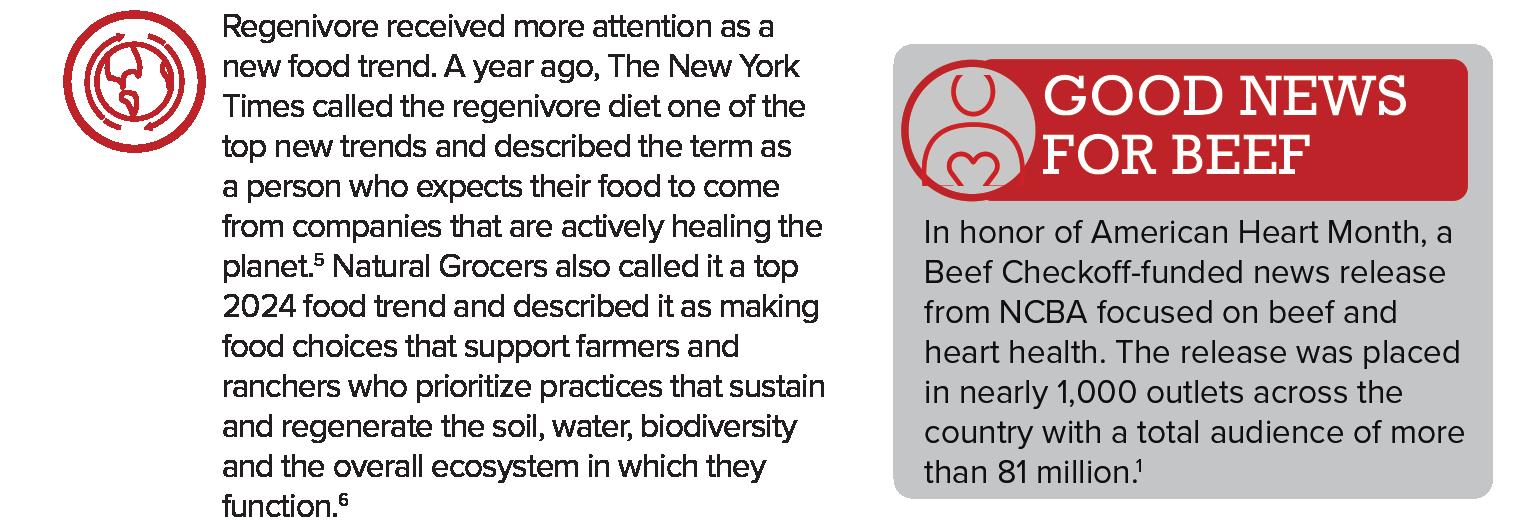

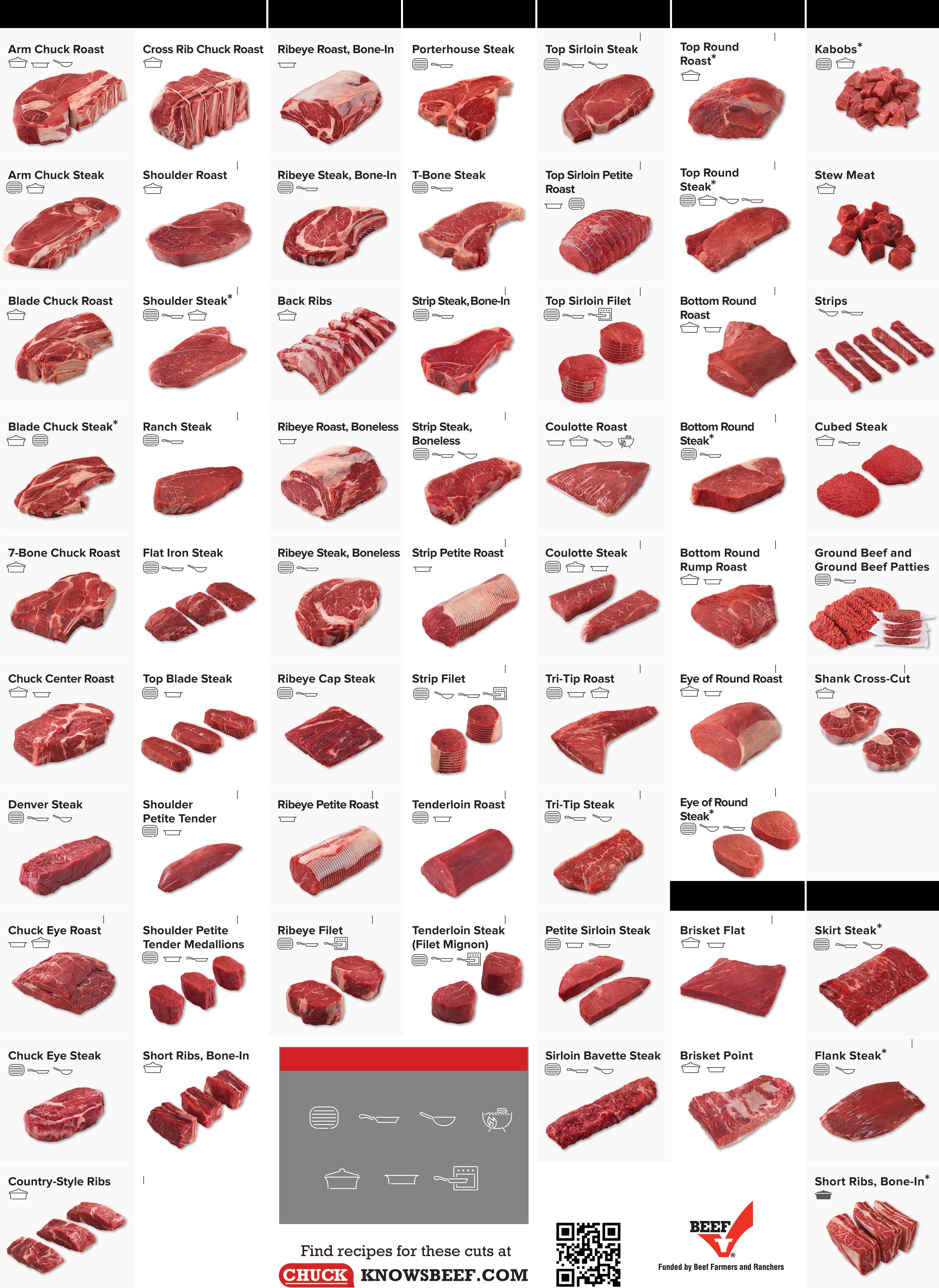
An overarching plan for optimum herd reproductive efficiency involves many important factors, including heifer development, management of the mature cow calving and breeding seasons, and appropriate bull management. Because proper herd nutrition touches all these factors, it deserves special attention.
In order to calve at approximately 2224 months of age and to reach puberty early enough to become pregnant before the start of the mature herd breeding season, heifers must reach puberty by 11-13 months of age. Beef heifers are expected to begin to have fertile cycles once they reach 50-65 percent of their mature weight. Developing heifers on a plane of nutrition (both energy and protein) from weaning to breeding that allows them to reach puberty by 11-12 months of age results in improved udder development and increased pregnancy rates. But be aware that overfeeding heifers before breeding has also been demonstrated to have negative effects on the likelihood of becoming pregnant. A study showed that heifers that gained 1 to 1.5 pounds per day from weaning to the start of breeding were more likely to become pregnant during a 45 day breeding season than did heifers with gains above or below this range. Body condition scores (BCS) in the same group of 1,863 heifers showed the same result, with first-service pregnancy rates improving as body condition increased up to a score of 6 and then declining in fat heifers. In addition, excessive supplemental feeding of beef heifers before puberty has been shown to reduce lifetime calf weaning weights due to impaired milk production. This impaired milk production appears to occur in heifers that had high body condition and that deposited fat in the udder.
Once puberty is attained, nutrition must be at a level that allows the heifer to continue cycling, produce healthy eggs, and establish pregnancy. The nutritional
NOTICE Letters to the editor are welcome and we appreciate your input.

HOWEVER, letters that are not signed will not be considered for publication.
demands of heifers during pregnancy are greater than those of mature cows because the heifer uses nutrients for her own growth as well as fetal growth. This increased demand for nutrients continues through early lactation when the beef female has her highest nutritional requirements. Deficiency of energy or protein for extended periods of time during the first two and a half years of life can have a negative impact on fetal development, calf health, milk production, and rebreeding for the next pregnancy.
Researchers have shown that heifers calving at greater BCS were more likely to be cycling at the start of the next breeding season and more likely to be pregnant during a 60 day breeding season. If heifers or cows are found to be thin during the middle third of pregnancy, increased nutrient intake for the three to four months leading up to calving can substantially improve pregnancy rate in the following breeding season compared to cows that calve in thin body condition. It is very difficult for cows to gain body weight once they have calved and started lactating – even if heavily fed. Therefore, cows should reach their desired breeding body condition by the time they calve. In order to have enough days for thin cows to gain weight, they should be evaluated for BCS three to four months prior to calving. If evaluated at this time, the weight gain for a BCS 3 cow to reach breeding condition (BCS 5) will be approximately 1.5 to 2.0 pounds per day (which is very possible with good forage and supplementation). In contrast, if cows only have two months to gain 2 body condition scores, they will need to gain over 3 pounds daily – a much more challenging task.
The energy requirement for lactating cows averages about 20 percent higher than for dry cows (the actual requirement varies based on milk production), and this demand peaks at approximately 60 days after calving. This higher demand makes it difficult to add body condition once lactation begins. Because post calving condition score and energy balance control ovulation, and being in good body condition is required for high pregnancy rates, both body condition at calving and level of nutrition after calving are important factors that influence pregnancy rates.
Nutritional management of bulls is also important for bull fertility. Similar to the importance of how replacement heifers are managed from weaning to
the first breeding season, how bulls are fed from weaning to their first breeding season greatly impacts their future physical soundness and fertility. Growing bulls should be fed so that they are able to express their full growth potential, and restricting energy or protein can delay puberty and possibly reduce lifetime sperm production. As with heifers, bulls that become too fat after weaning have been shown to be less fertile than bulls fed to gain appropriately from weaning to yearling age. Yearling bulls should probably have about a BCS of 6, and mature bulls should have a BCS of 5 to 6 at the start of the breeding season. In

order to ensure that bulls are in good body condition, in the 60 days leading up to the breeding season, they need to have access to good quality forage, little to no concentrate supplement to maintain condition, and moderate to high amounts of concentrate if they need to add body condition.
Proper nutritional management of growing heifers and bulls and timely assessment and management of mature cow and bull body condition are the foundations for an efficient and productive reproduction plan. Without a good nutritional plan, the best reproductive techniques and technologies will fail.
Registration Open for 2024 Stockmanship & Stewardship Events. Registration is now open for four Stockmanship & Stewardship events to be held this summer and fall. Stockmanship & Stewardship is a unique educational experience for cattle producers featuring low stress cattle handling demonstrations, Beef Quality Assurance (BQA) educational sessions, facility design sessions, and industry updates.
2024 Stockmanship & Stewardship dates and locations:
• August 23-24 - Richfield, Utah
• August 28-29 - Lancaster, Wisconsin
• October 18-19 - Fresno, California
• October 25-26 - Hamburg, New York
Producers can become BQA certified, network with fellow cattlemen and women, participate in hands-on demonstrations led by animal handling experts, including Curt Pate and Dr. Ron Gill, and learn innovative management techniques. The program is sponsored by the National Cattlemen’s Beef Association (NCBA), Neogen, and the Beef Checkoff funded National Beef Quality Assurance program.
“Neogen is dedicated to the advancement of human and animal well being through science and technology,” said Elizabeth Wonsowski, livestock director of marketing at Neogen. “As
a leader within the beef industry and proud partner of cattle ranchers and beef production, we recognize the important role that education and resources play in helping the cattle industry continue to grow in a healthy and sustainable way. We are proud to support NCBA and the Beef Checkoff through the Stockmanship & Stewardship program. Together, we can fuel a brighter future of global food security.”
For more information about Stockmanship & Stewardship and to register, visit www.StockmanshipAndStewardship. org . Cattle producers attending a Stockmanship & Stewardship event are eligible for reimbursement through the Rancher Resilience Grant. To apply for a grant to cover registration and hotel costs, visit www.ncba.org/producers/rancherresilience-grant.
About the Beef Checkoff. The Beef Checkoff was established as part of the 1985 Farm Bill. The Checkoff assesses $1 per head on the sale of live domestic and imported cattle, in addition to a comparable assessment on imported beef and beef products. States may retain up to 50¢ of the dollar and forward the other 50¢ per head to the Cattlemen’s Beef Promotion and Research Board, which administers the national checkoff program, subject to USDA approval.
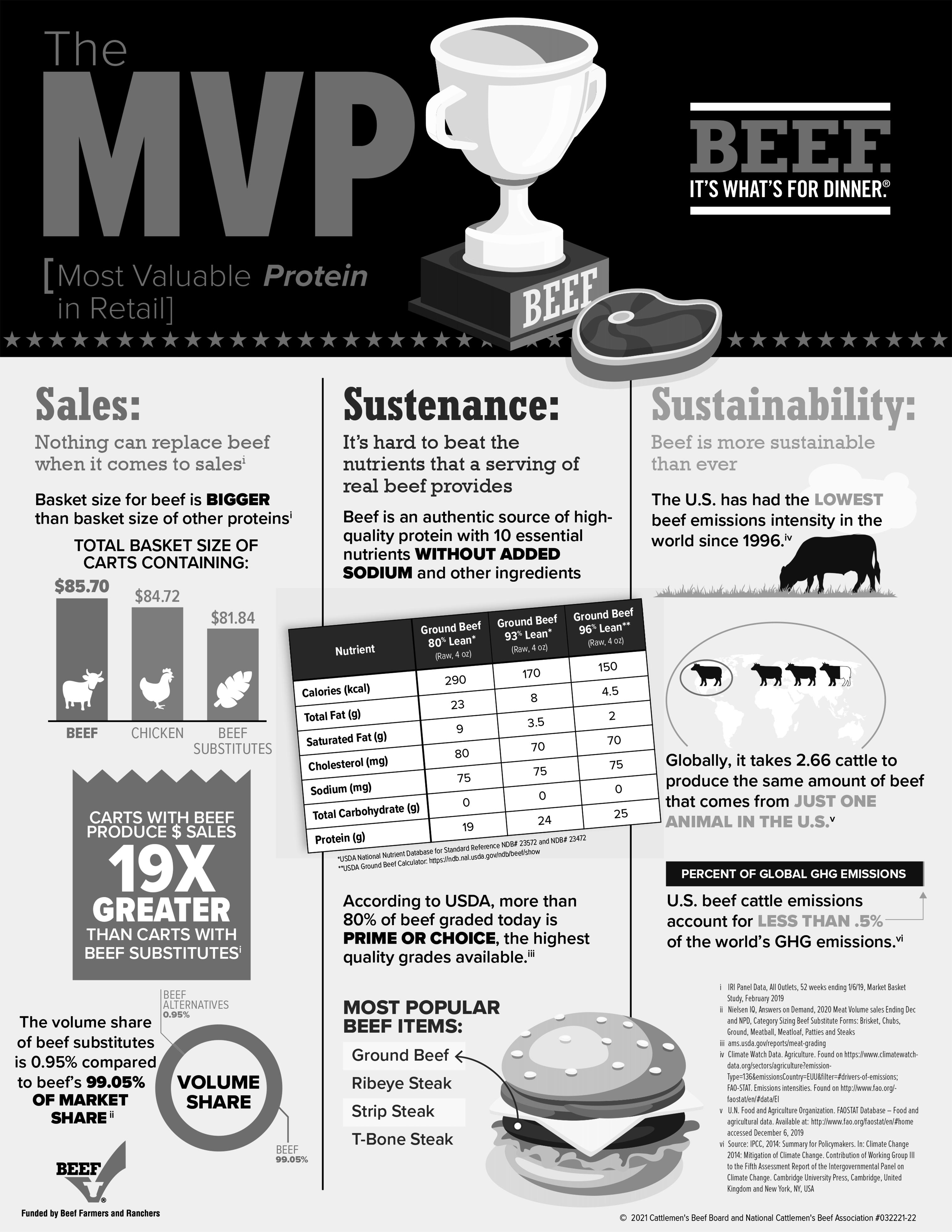

Bertz Selected as New Executive Director. The American Gelbvieh Association (AGA) Board of Directors unanimously voted to hire Harold Bertz of Mayview, Mo., as the Association’s next Executive Director.
Bertz recently served as the chief operating officer of the American Royal in Kansas City, Missouri. He previously worked for the Red Angus Association of America for nearly ten years, focusing on growing the acceptance of Red Angus cattle with commercial cow/calf producers and feedyards.
“Harold brings with him great leadership, marketing expertise, and understanding of the cattle industry, along with a clear vision of where Gelbvieh and Balancer cattle fit the industry,” said Lori Maude, President of the AGA Board of Directors. “We are excited to have Harold leading the association and setting a solid path forward for the breed in a quickly changing beef industry.”
“I am honored and excited to serve this great breed and its members,” said Harold Bertz, American Gelbvieh Association Executive Director. “The Association has a rich history, innovative members constantly striving to improve Gelbvieh and Balancer cattle, and a talented, vibrant staff. With these key elements, I have unlimited enthusiasm and optimism for our future.”
The Bertz family farm near Mayview has been in the family for seven generations. He and his wife, Melisa, are also involved with her family’s farm near Parker, Kansas. They have two grown children who are active in the beef industry.
Bertz began his new role with the American Gelbvieh Association on May 6. He can be reached at haroldb@ gelbvieh.org or the AGA office at 303465-2333.
McDuffie Announced as the American Gelbvieh Association Summer Intern. The AGA is excited to announce the hiring of Ryan McDuffie of Perry, Ga., as the AGA summer intern. In his internship, McDuffie will assist in all aspects of AGA operations, including member programs and services support, member education, and American Gelbvieh Junior Association (AGJA) Junior Classic activities.
“We are so excited to have Ryan join us in Lincoln this summer! His extensive background in competitive events and livestock shows will be a huge asset, and
we look forward to the ideas he will bring to the table for hosting summer regional shows and the AGJA Junior Classic,” said Tawnie DeJong, AGA member and youth activities coordinator.
McDuffie is an alumnus of Fort Scott Community College and the University of Arkansas, where he was a member of competitive livestock judging teams at both institutions. McDuffie graduated with a bachelor of science in animal science and decided to further
his education in animal science at the University of Arkansas. While obtaining his master’s degree, he has been the assistant coach of the 2024 University of Arkansas livestock judging team.
McDuffie is deeply committed to advancing youth participation in the agriculture industry and possesses a keen ability to ignite enthusiasm among young individuals for agriculture. He has honed this passion through internships at prominent junior livestock shows such as the Arkansas Youth Expo, California Youth Agriculture Expo, Cattlemen’s Congress, and the North American International Livestock Exposition. Through these experiences, McDuffie has cultivated a genuine love for youth exhibitors and a profound appreciation for his work within
the junior livestock show circuit.
McDuffie eagerly anticipates the chance to collaborate with and gain wisdom from an esteemed breed association. His aspirations include forging connections with countless individuals, deepening his understanding of the Gelbvieh and Balancer breeds, and helping orchestrate an unforgettable AGJA Way Out West Junior Classic event.
McDuffie began his internship on May 20 and can be reached at intern@gelbvieh. org or the AGA office at 303-465-2333.
About the American Gelbvieh Association. The AGA is a progressive beef cattle breed association representing 1,100 members and approximately 40,000 cows assessed annually in a performance oriented total herd reporting system.
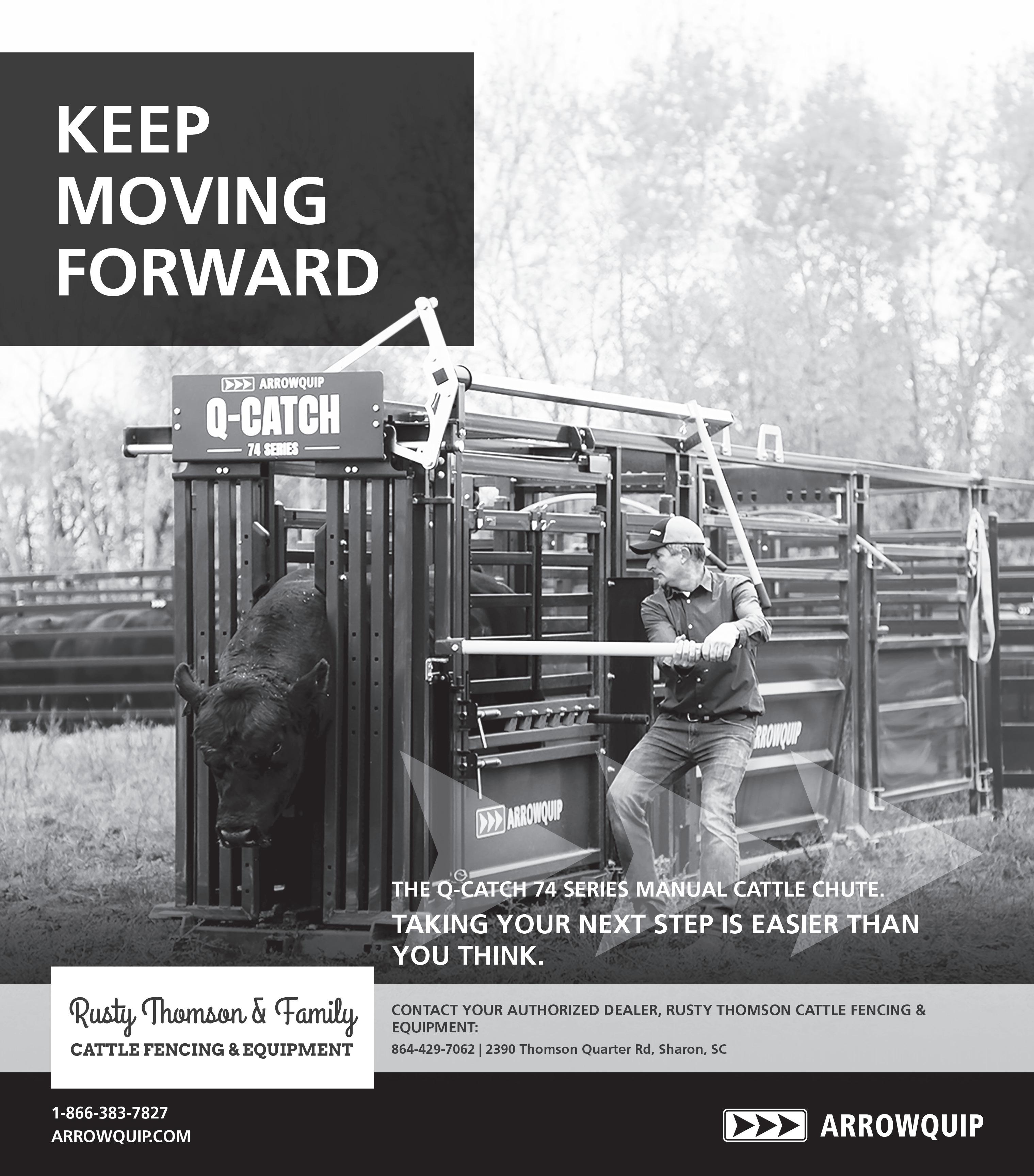



Walter D. Shealy III and Family 20977 US Hwy 76 • Newberry, SC 29108 Walter Shealy • 803-924-1000 Dixon Shealy • 803-629-1174 walter@blackgrove.com • dixon@blackgrove.com www.blackgrove.com
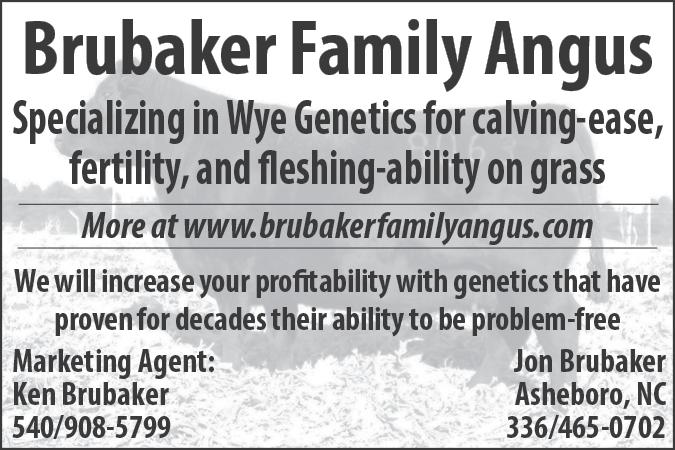

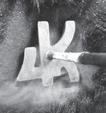


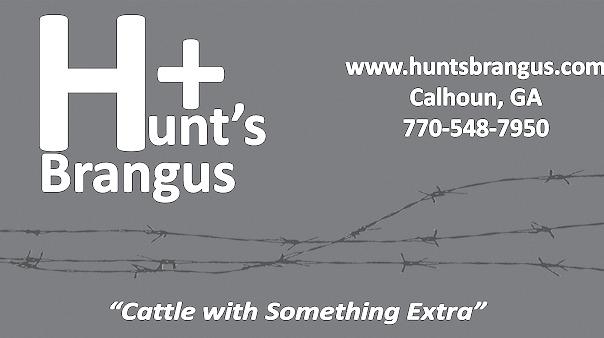

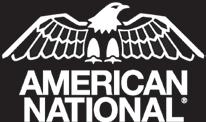

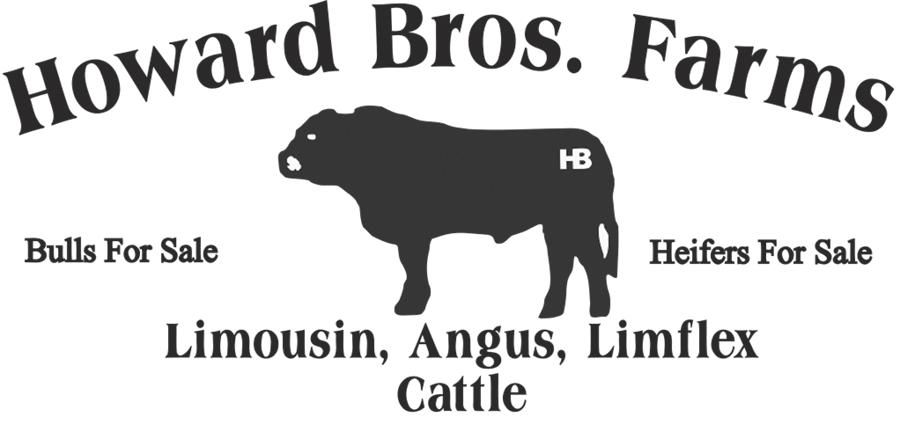
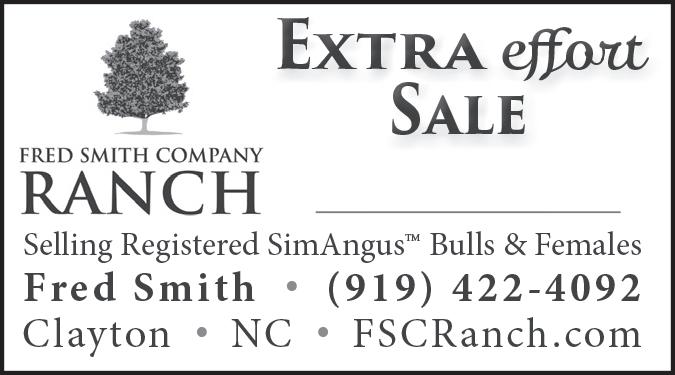

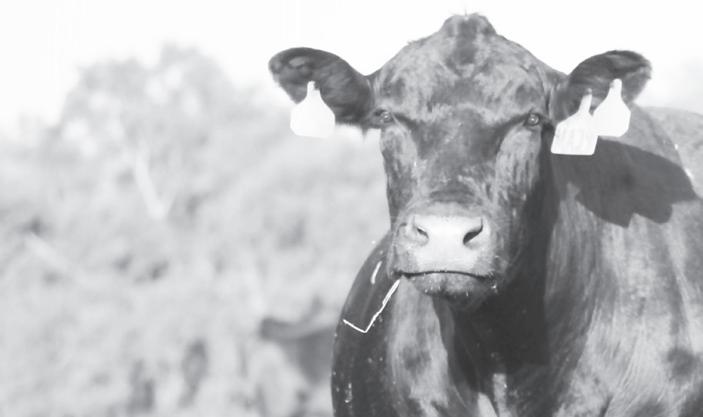

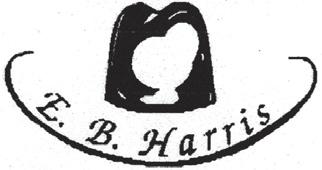

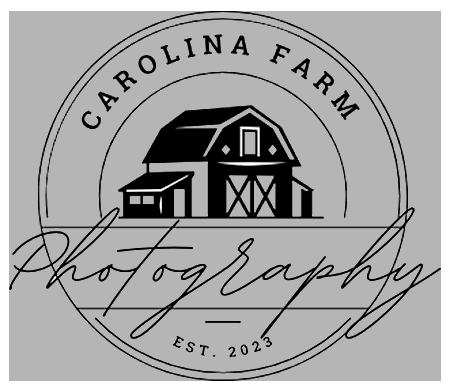

Sep. 28 — Biltmore Livestock Sale, Asheville, N.C.
Oct. 19 — Fred Smith Company Ranch Extra Effort Fall Sale, Clayton, N.C.
Oct. 19 — Wolf Creek Farms Second Annual Angus Bull Sale, Hawkinsville, Ga.
Oct. 25 — Yon Family Farms Maternal Roots Fall Female Sale, Saluda, S.C.
Oct. 26 — Yon Family Farms Maternal Roots Fall Bull Sale, Saluda, S.C.
Nov. 2 — TJB Balancer Maternal Magic XIII Bull Sale, Chickamauga, Ga.
Nov. 16 — Southeast Bull Expo & Sale, Asheboro, N.C.
Dec. 7 — 49th Annual Union County Performance Tested Bull Sale, Monroe, N.C.
Dec. 14 — Brushy Mountain Genetics Sale, Taylorsville, N.C.
2025
Jan. 4 — EBS Farms Select Bull & Female Sale, Norwood, N.C.
Sep. 6 — N.C. Simmental Association Field Day, Union Grove, N.C.
Sep. 7 — N.C. Simmental Association Fall Harvest Sale, Union Grove, N.C.
Brahman
Jun. 1 — The Carolina Brahman Breeders Association 44th Annual Sale, Laurens, S.C.
Brangus
Oct. 25 — Yon Family Farms Maternal Roots Fall Female Sale, Saluda, S.C.
Oct. 26 — Yon Family Farms Maternal Roots Fall Bull Sale, Saluda, S.C.
Nov. 2 — TJB Gelbvieh Maternal Magic XIII Bull Sale, Chickamauga, Ga.
Dec. 7 — 49th Annual Union County Performance Tested Bull Sale, Monroe, N.C.
Dec. 14 — Brushy Mountain Genetics Sale, Taylorsville, N.C.
2025
Mar. 22 — 57th Annual N.C. Hereford Classic Sale, Union Grove, N.C.
A man comes home after a hard day’s work and opens the refrigerator to get a soda. Inside, he sees a squirrel taking a nap.
“What are you doing in my fridge?” the man asks.
The squirrel opens one sleepy eye and says, “Isn’t this a Westinghouse?”
“Um, yes,” the man replies. “It is.”
“Well then,” the squirrel says, shutting his eyes again, “I am twying to west.”
A city boy, visiting his cousin’s farm. He asks his country cousin, “Say, why doesn’t that cow have horns?”
The country cousin replies, “There are many reasons why a cow might not have horns. Some grow horns late in life, some have them removed, some might lose them in an accident, and then there are certain breeds who simply never grow horns. This cow doesn’t have horns because it’s a horse.”
Fred was going out to lunch one day when he passed by a pet shop with a sign in the window reading, “Puppies for sale, only $10 dollars.”
Unable to resist such a good deal, Fred went inside and bought one. As Fred arrived home a few moments later, his wife Louise came to greet him. “How was your lunch, dear?”
“Actually, I didn’t buy lunch today.” Fred replied.
Louise looks at him quizzically. “You didn’t?”
“No,” Fred replied. “You see, I passed by a pet shop with a great deal on puppies and ended up spending my money on Elvis?”
“Elvis?”
“Yes,” Fred replied. “I ate nothin’, bought a hound dog.”
* *
During a county-wide drive to round up all unlicensed dogs, a patrolman signaled a car to pull over to the curb. When the driver asked why he had been stopped, the officer pointed to the big dog sitting on the seat beside him and asked, “Does your dog have a license?”
“No,” the man said, “he doesn’t need one.”
“Yes he does,” answered the officer.
“But,” said the driver, “I always do all the driving.”
Oct. 19 — Fred Smith Company Ranch Extra Effort Fall Sale, Clayton, N.C.
Oct. 25 — Yon Family Farms Maternal Roots Fall Female Sale, Saluda, S.C.
Oct. 26 — Yon Family Farms Maternal Roots Fall Bull Sale, Saluda, S.C.
Dec. 7 — 49th Annual Union County Performance Tested Bull Sale, Monroe, N.C.
Nov. 1 — Wilders Wagyu StayWILD ‘25 Production Sale, Turkey, N.C.
Aug. 15 — Piedmont Emergency Animal Response Team Training Course, Winston-Salem, N.C.
Sep. 17 — Piedmont Emergency Animal Response Team Training Course, Winston-Salem, N.C.
Livestock market sales
Jun. 3 — Harward Brothers Livestock Market Weekly Sale, Statesville, N.C.
Jun. 3 — Saluda Livestock Exchange Weekly Sale, Saluda, S.C.
Jun. 4 — Mid-Atlantic Cattle Sales Video Auction, via macsvideo.com
Jun. 5 — Stanly County Livestock Market Weekly Sale, Norwood, N.C.
Jun. 10 — Harward Brothers Livestock Market Weekly Sale, Statesville, N.C.
Jun. 10 — Saluda Livestock Exchange Weekly Sale, Saluda, S.C.
Jun. 12 — Stanly County Livestock Market Weekly Sale, Norwood, N.C.
Jun. 17 — Harward Brothers Livestock Market Weekly Sale, Statesville, N.C.
Jun. 17 — Saluda Livestock Exchange Weekly Sale, Saluda, S.C.
Jun. 18 — Mid-Atlantic Cattle Sales Video Auction, via macsvideo.com
Jun. 19 — Stanly County Livestock Market Weekly Sale, Norwood, N.C.
Jun. 24 — Harward Brothers Livestock Market Weekly Sale, Statesville, N.C.
Jun. 24 — Saluda Livestock Exchange Weekly Sale, Saluda, S.C.
Jun. 26 — Stanly County Livestock Market Weekly Sale, Norwood, N.C.
Jul. 1 — Harward Brothers Livestock Market Weekly Sale, Statesville, N.C.
Jul. 1 — Saluda Livestock Exchange Weekly Sale, Saluda, S.C.
Jul. 2 — Mid-Atlantic Cattle Sales Video Auction, via macsvideo.com
Jul. 3 — Stanly County Livestock Market Weekly Sale, Norwood, N.C.
Jul. 8 — Harward Brothers Livestock Market Weekly Sale, Statesville, N.C.
Jul. 8 — Saluda Livestock Exchange Weekly Sale, Saluda, S.C.
Jul. 10 — Stanly County Livestock Market Weekly Sale, Norwood, N.C.
Jul. 15 — Harward Brothers Livestock Market Weekly Sale, Statesville, N.C.
Jul.15 — Saluda Livestock Exchange Weekly Sale, Saluda, S.C.
Jul. 16 — Mid-Atlantic Cattle Sales Video Auction, via macsvideo.com
Jul. 27 — Stanly County Livestock Market Weekly Sale, Norwood, N.C.
Jul. 22 — Harward Brothers Livestock Market Weekly Sale, Statesville, N.C.
Jul. 22 — Saluda Livestock Exchange Weekly Sale, Saluda, S.C.
Jul. 24 — Stanly County Livestock Market Weekly Sale, Norwood, N.C.
Jul. 29 — Harward Brothers Livestock Market Weekly Sale, Statesville, N.C.
Ju1.29 — Saluda Livestock Exchange Weekly Sale, Saluda, S.C.
Jul. 31 — Stanly County Livestock Market Weekly Sale, Norwood, N.C.


